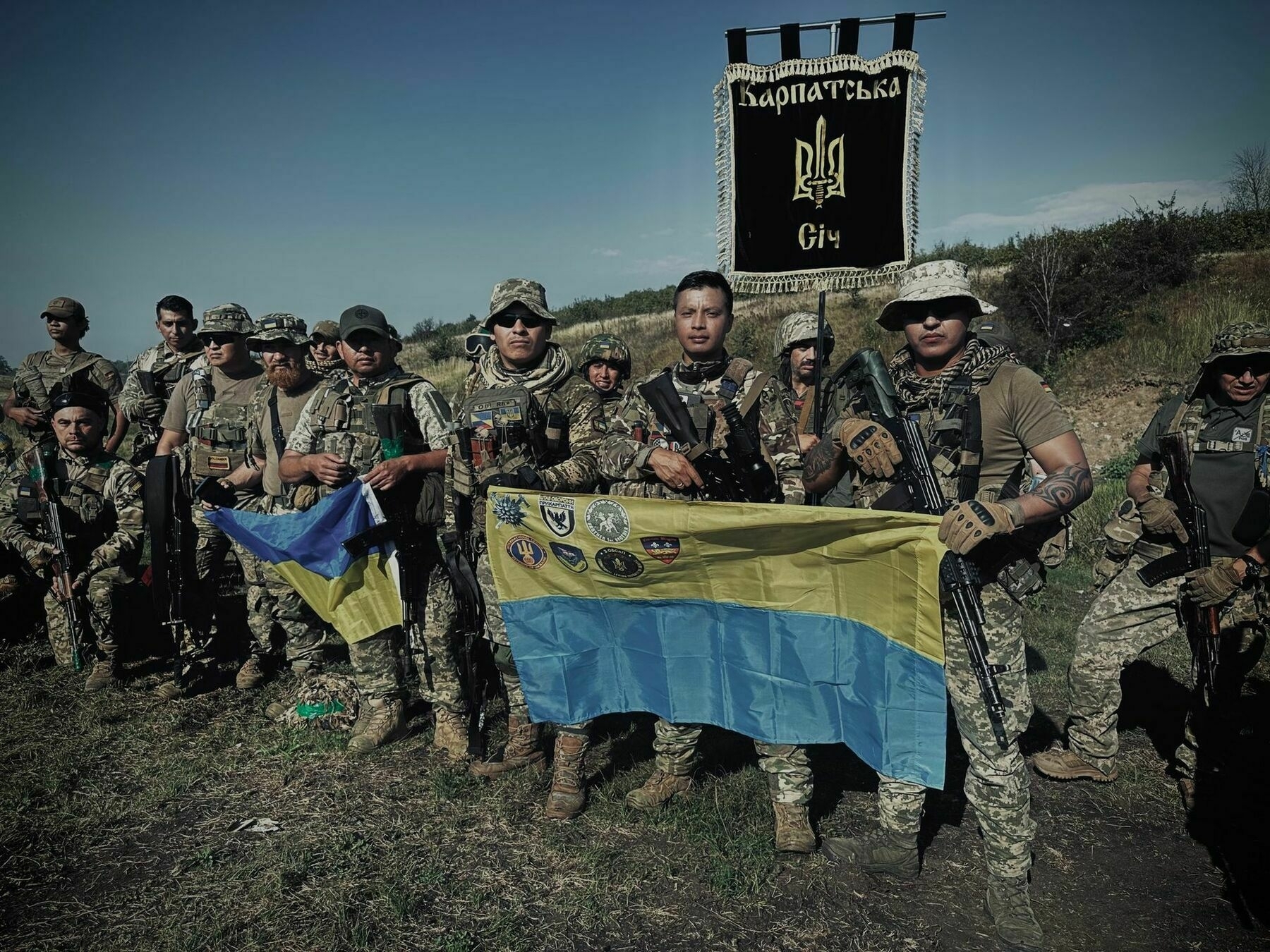-
Zelensky highlights funding gaps in Ukraine's defense industry
Ukrainian President Volodymyr Zelensky has highlighted the potential of Ukraine's defense industry, estimating it as a $44 billion sector. However, he pointed out that production is cut by nearly half due to a lack of financial resources. Meanwhile, Russia's missiles reportedly rely heavily on foreign components for their construction.
During his address to participants at the Defense Industry Forum in the Netherlands on June 24, Zelensky emphasized the enduring threat posed by Russia. "We all acknowledge this is a long-term threat, and that threat is Russia. But we're not alone facing it; we're opposing both state and non-state actors supporting this aggression," he stated.
According to Zelensky, this "network" supporting Russia includes countries like North Korea, Iran, and some Chinese companies, as well as "many, many schemers" globally. Ukraine's priorities are clear - co-production of weapons and sanctions against companies collaborating with Russia. Investment and technology have been pinpointed as crucial issues for production. Zelensky expressed that the potential of Ukraine’s defense sector exceeds $44 billion.
"This covers nearly a thousand military assets, from artillery to drones, advanced missile warfare systems, and rockets. But around 40% of this potential lacks adequate funding, and that's a problem," he noted.
Zelensky explained that while Ukraine is capable of producing about 8 million drones of various types annually, financial limitations remain a hurdle. In contrast, Russia leverages its oil revenues and resources from Iran and North Korea, alongside corrupt dealings with other countries.
"Our collective solidarity is the best response to Russia's military network," Zelensky asserted.
He urged partners to boost investment in joint weapon production with Ukraine, assuring that all arms produced by Ukrainians will contribute to Europe's security framework.
Zelensky reiterated that there is no indication that Russian President Vladimir Putin intends to halt the conflict. Russia consistently dismisses peaceful propositions, including those from the US. Ukrainian intelligence has also confirmed Russia's plans for new military operations on NATO territory. The Ukrainian leader called on European nations to increase their defense budgets.
"It's better to curb Russia where the war began," he emphasized.
Additionally, Zelensky mentioned that no remarkable Russian weapon is produced without materials or components from foreign origins. These foreign parts are present in every missile and most drones used by Russian forces.
Reminder: President Volodymyr Zelensky has acknowledged being fatigued by the war in Ukraine and expressed that he is “always ready” to cede power if the nation wishes for a change.
-
Kyiv, Copenhagen aim to launch Ukrainian defense production in Denmark
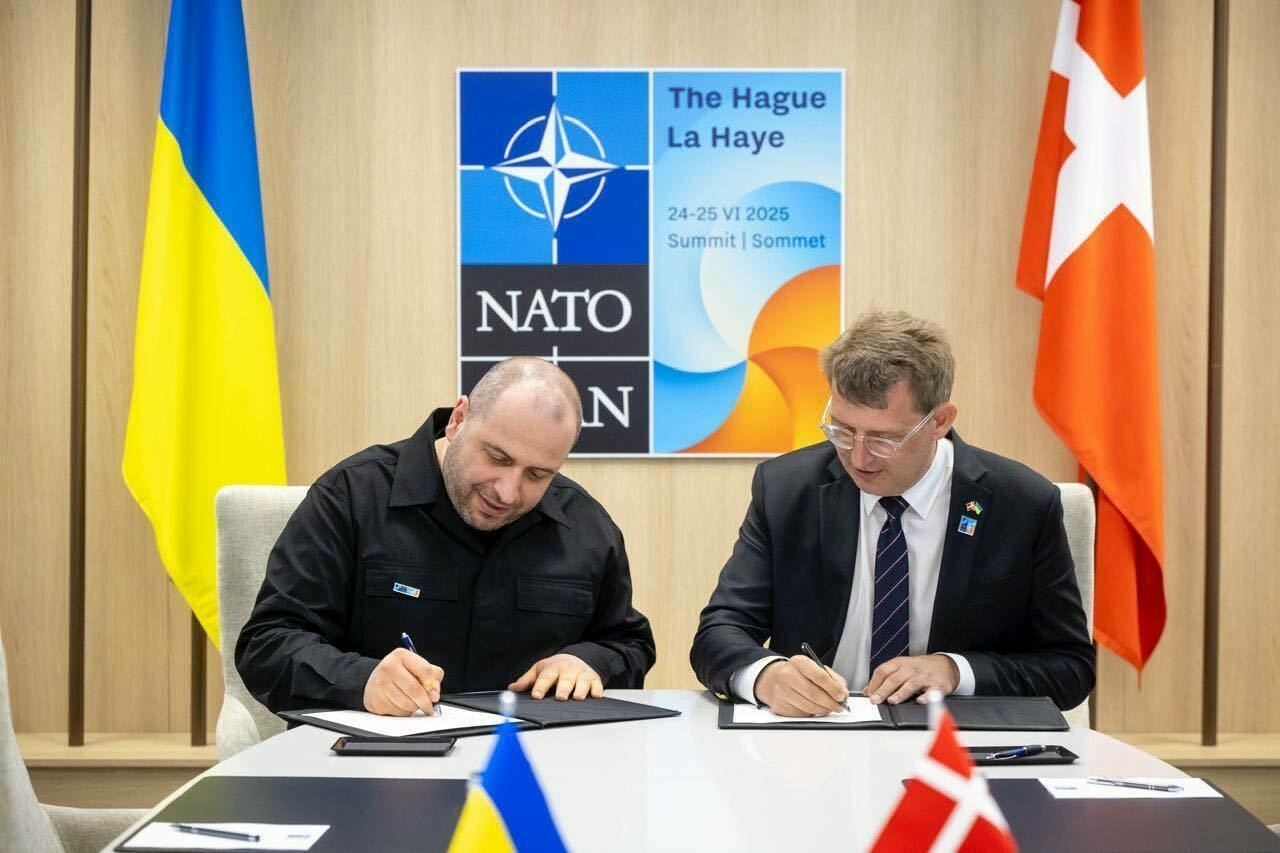
Defense Minister Rustem Umerov signed a Letter of Intent on June 24 with his Danish counterpart Troels Lund Poulsen to launch Ukrainian defense production in Denmark, Umerov announced on Facebook.
The document envisages facilitating the deployment of Ukrainian defense companies in Denmark and integrating of the defense industries of both countries through the “Build with Ukraine” initiative.
Denmark has already allocated $47 million for the project, and Ukraine’s partners will provide further funding for production.
“I thank the Danish government for its trust, steadfast support of Ukraine, and commitment to developing a deep partnership between our countries,” Umerov said. “This partnership enhances the security of Ukraine, Denmark, and all of Europe — today and into the future."
The agreement between Ukraine and Denmark also provides coordination between the Danish Defense Ministry, the Business and Industry Ministry, and the Foreign Ministry to integrate Ukrainian enterprises into the European defense system.
“By providing Ukrainian defense companies the opportunity to start production in Denmark, we are creating a basis for close cooperation between defense companies in both countries. This will also provide the Danish Armed Forces with access to the latest technologies and the experience of Ukraine,” Poulsen said.
Denmark has pioneered efforts to support Ukraine by investing in its defense industry, creating the so-called “Danish model” of purchasing arms for Kyiv from Ukrainian producers. Copenhagen has provided around $9.8 billion in military aid under its Ukraine Fund for the years 2023-2028.
‘Like any technology, it’s a race’ — UK’s largest ammo maker rebooting chemistry to break NATO’s dependence on explosive importsRussia’s war in Ukraine has drained Western ammunition stocks. Despite years of claimed weapons ramp-ups, NATO’s arms manufacturing is still not refilling those stocks apace, let alone making it to Ukraine in needed mass. The West has come to recognize that these shortages are due to the offshoringThe Kyiv IndependentKollen Post
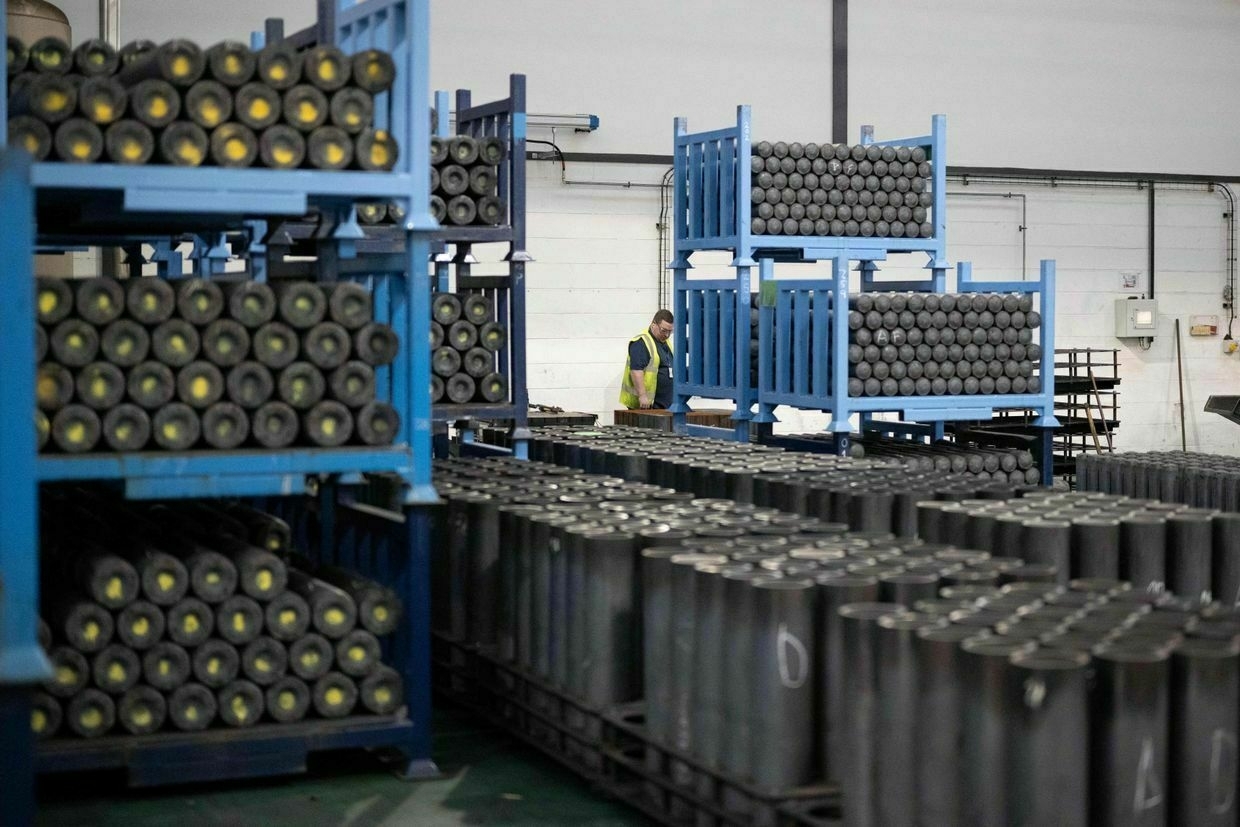
-
Naftogaz seeks $1.37 billion from Russia’s Gazprom following arbitration victory
Ukraine’s national oil and gas company Naftogaz has submitted a payment demand to Russia's Gazprom, claiming $1.37 billion in line with a final arbitration decision from Zurich, dated June 20, 2025, as announced by Naftogaz's press service on Tuesday, June 24. The Ukrainian energy company states that the figure covers the principal debt for gas transit services under a 2019 agreement, penalty fees, and legal expenses incurred by Naftogaz.
"If Gazprom declines to comply with the decision voluntarily, Naftogaz will launch a strategy to forcibly recover assets from the Russian company," the statement says.
The arbitration centered on Gazprom's cessation of gas transit payments in May 2022, breaching contractual obligations based on "take or pay" principles. Naftogaz initiated arbitration in September 2022, which Gazprom attempted to block through Russian courts. Eventually, a tribunal consisting of arbitrators from Sweden, Switzerland, and Israel ruled in favor of Naftogaz.
Simultaneously, Naftogaz continues enforcing an arbitration ruling for Russia to pay $5 billion for the unlawful expropriation of assets in Crimea in 2014, according to Naftogaz's press service.
"The enforcement process is ongoing in ten jurisdictions at various stages. Finland and France have already seen initial results with Russian assets being seized. Work continues in other nations, but further details are not disclosed due to legal strategy considerations," Naftogaz reports.
-
Ukraine war latest: Russian attack on Dnipro kills at least 17, injures almost 280
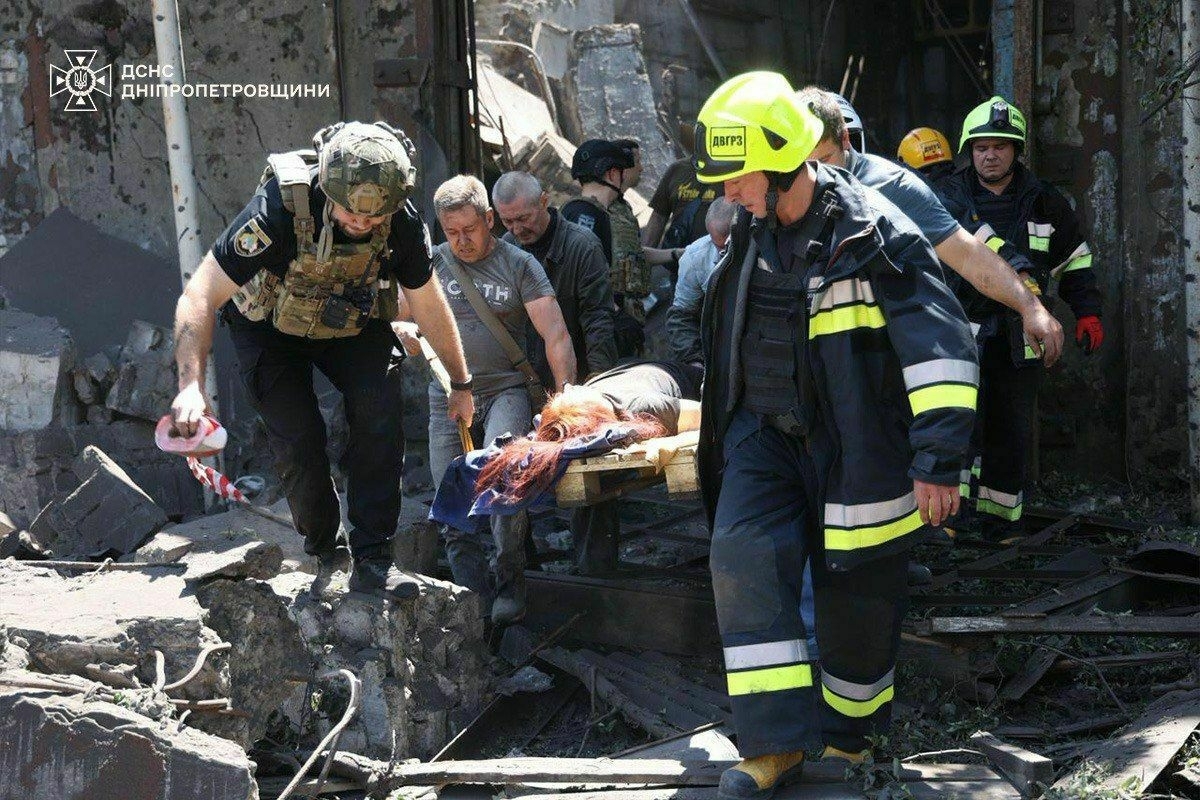
Key developments on June 24:
- ‘Dead and wounded everywhere’ — Russian attack on Dnipro kills at least 17, injures almost 280
- Council of Europe, Ukraine to sign accord on June 25 to set up Russian aggression tribunal
- Ukraine can produce 8 million drones annually but needs funding, Zelensky says at NATO summit
- Trump to meet Zelensky during NATO summit, White House confirms
- UK to fund joint drone production with Ukraine
Russia launched a deadly missile attack on the Ukrainian city of Dnipro on June 24, striking civilian infrastructure and a passenger train, killing at least 17 people and injuring scores of others, local officials reported.
Dnipropetrovsk Oblast Governor Serhii Lysak said the morning strike ignited a large fire and also damaged a dormitory, a gymnasium, and an administrative building in the city.
The Russian military also struck the nearby town of Samarske, Lysak said. Casualties were reported in both locations.
“Unfortunately, there are dead and wounded everywhere,” he said.
In Samarske, two people were killed, and 14 injured. Eight were hospitalized, with half of them in critical condition.
“As of now, more than 160 people are known to have been injured. Unfortunately, 11 people have died,” President Volodymyr Zelensky said in a post on social media, adding: “The rubble is still being cleared, so the death toll may, unfortunately, increase."
Around 8:30 p.m. local time, the death toll rose to 17, while the number of wounded increased to 279, including 27 children, Lysak reported.
Almost a hundred of the victims remain in hospital, according to Lysak.
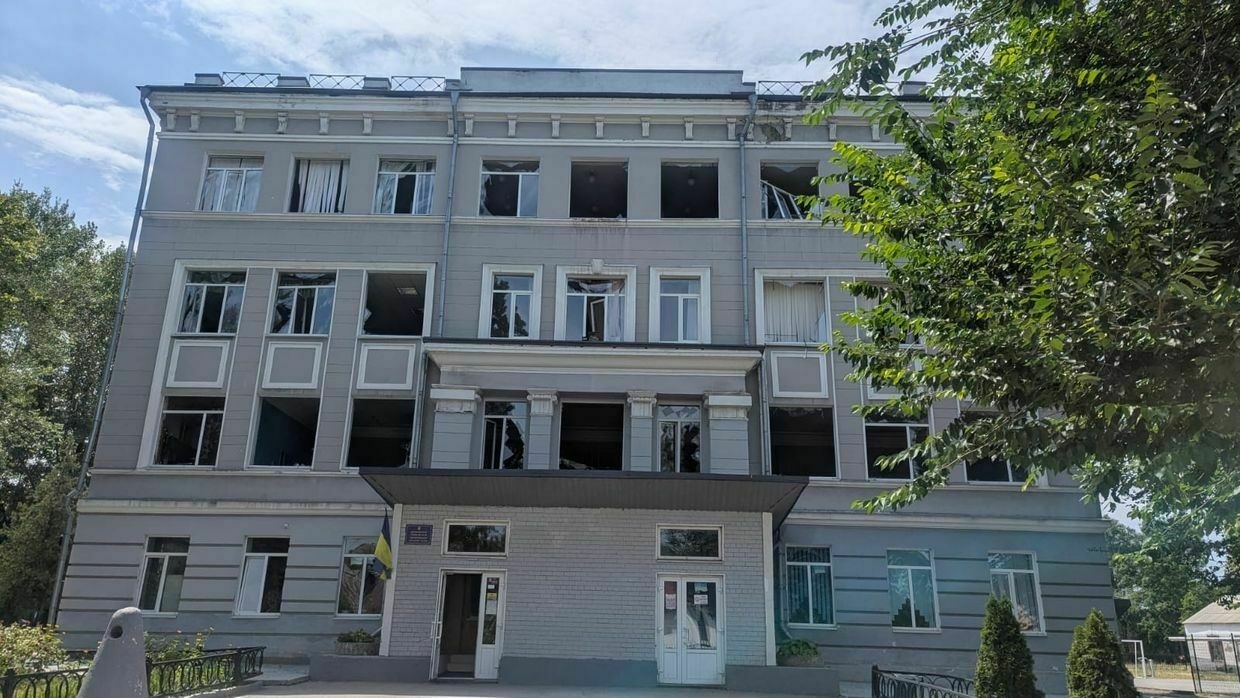
An school in Dnipro that was damaged in Russia’s ballistic missile attack on June 24, 2025. (Dnipro.media) 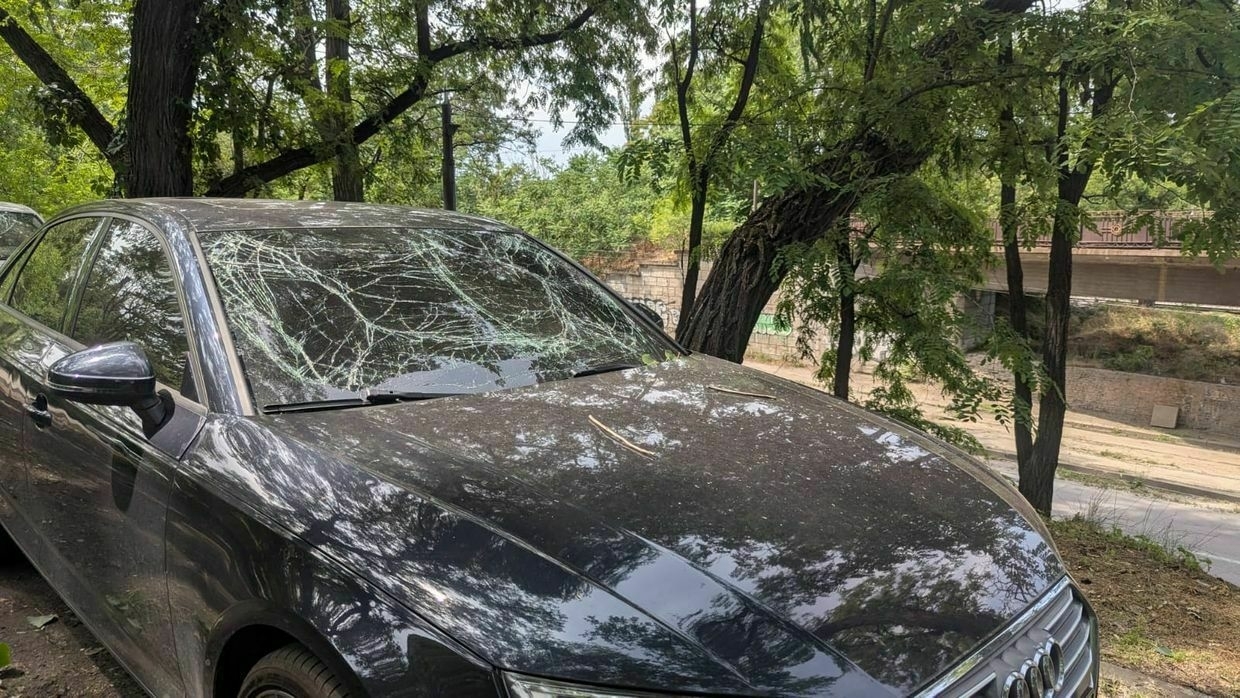
Multiple cars got damaged in Dnipro during Russia’s ballistic missile attack on June 24, 2025. (Dnipro.media) 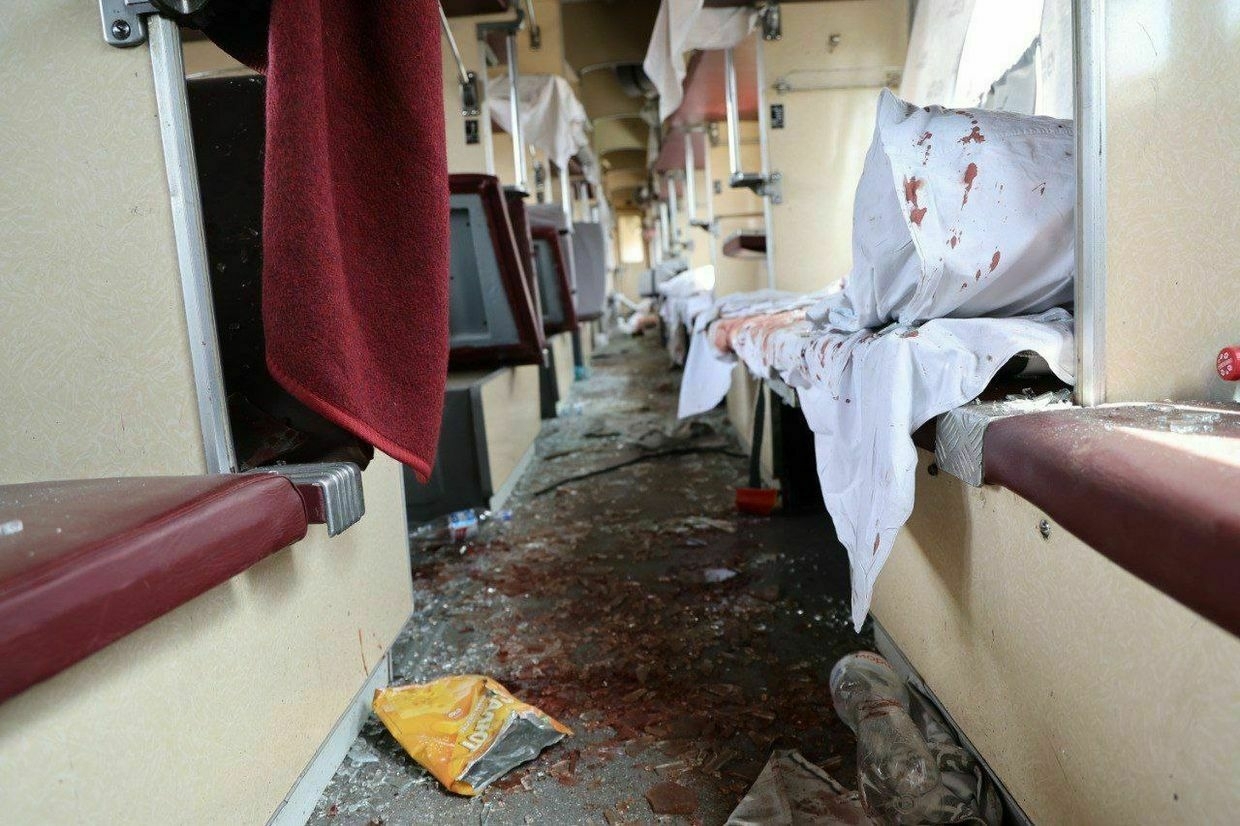
The aftermath of a Russian ballistic missile attack Dnipro on June 24, 2025, that damaged a passenger train (Serhii Lysak/Telegram). Ukraine’s national railway company, Ukrzaliznytsia, said that a train traveling from Odesa to Zaporizhzhia was damaged in the attack.
“Ukrzaliznytsia is preparing a replacement train in Dnipro to evacuate passengers to Zaporizhzhia,” the company said in a statement.
In an update, Ukrzaliznytsia said no passengers or railway workers were killed in the attack, though several people sustained injuries and are receiving medical care.
The attack came as NATO leaders convened for a high-level summit in The Hague. NATO Secretary General Mark Rutte warned on June 23 that Russia remains the alliance’s most immediate and long-term threat.
Investigation: How Russia prepares its strategic missile plant for ‘eternal war’Key findings: * Despite international sanctions, Russia’s strategic missile plant was able to import complex machinery to dramatically increase missile production. * The Kyiv Independent has identified the equipment supplied to the plant, as well as the supply chains, mostly from China. * We located the plant’s new premises, built to house theThe Kyiv IndependentAlisa Yurchenko
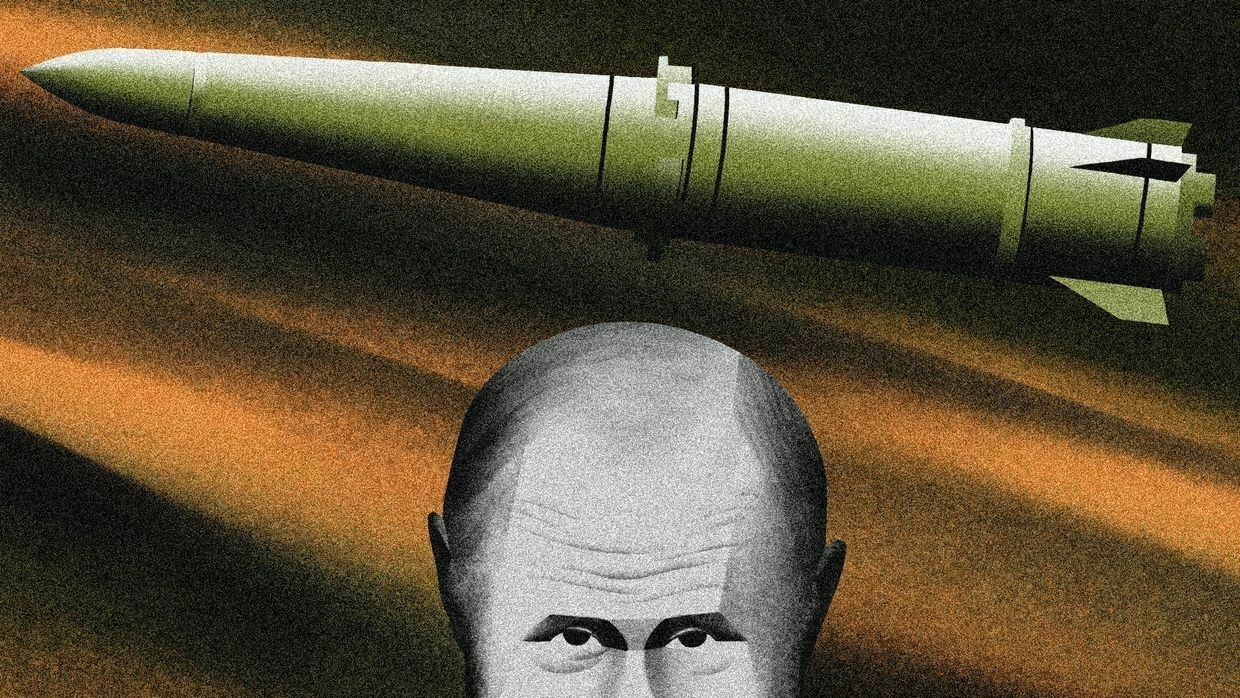
Council of Europe, Ukraine to sign accord on June 25 to set up Russian aggression tribunalThe Council of Europe and Ukraine will sign an agreement on June 25 to set up a special tribunal for the crime of Russian aggression, Yevheniya Kravchuk, a member of Ukraine’s delegation to the Parliamentary Assembly of the Council of Europe (PACE), said on June 24.
The move marks a milestone in international efforts to hold President Vladimir Putin and other top Russian officials accountable for launching the full-scale war against Ukraine.
“What seemed like a dream of justice will soon become a reality. Ukraine, together with the Council of Europe, will sign an agreement that will bring Russia to justice,” Kravchuk wrote on Facebook.
Ukrainian Deputy Prime Minister Olha Stefanishyna stressed that the special tribunal will have jurisdiction over the Russian president, prime minister, foreign minister, and other top officials.
"It is not a matter of debate anymore, only a matter of time. Some will get into the hands of justice sooner, some later, but they will all be held accountable. There are no exceptions," Stefanishyna told the Kyiv Independent. "It's critical to restore the international rule of law and prevent future acts of aggression."
The tribunal's jurisdiction covers all aspects of the crime of aggression, including the planning, preparation, initiation, or execution of acts of aggression, according to Stefanishyna.
"The tribunal's design makes it clear that the official status of the accused at the time of the crime does not exempt them from responsibility," she said. "Functional immunity does not apply here; high-ranking officials can be prosecuted even while holding office. The statute provides rules for conducting proceedings if the accused is absent."
The tribunal will be authorized to cooperate with the International Criminal Court (ICC) to ensure jurisdictional effectiveness and share information, Stefanishyna added.
President Volodymyr Zelensky has long advocated for the tribunal to ensure that Putin and other senior Russian officials face justice for launching the invasion three years ago.
Ukrainian prosecutors have documented thousands of war crimes committed by Russian forces, including attacks on civilians, cultural and medical sites, and acts of torture and deportation.
While war crimes, crimes against humanity, and genocide can be prosecuted against individuals at any level, the crime of aggression applies exclusively to state leaders responsible for planning and waging a war.
The ICC has already issued arrest warrants for Putin and Maria Lvova-Belova, the Russian official overseeing the forced deportation of Ukrainian children to Russia.
Ukraine can produce 8 million drones annually but needs funding, Zelensky saysPresident Volodymyr Zelensky said during NATO summit on June 24 that Ukraine has the capacity to produce over 8 million drones of various types each year, but lacks the financial backing to reach that potential, a shortfall he said must be urgently addressed to defeat Russia's growing military network.
"Our defense production potential has surpassed $35 billion," Zelensky said during a speech at the NATO Defense Industry Forum in The Hague. "This includes nearly 1,000 types of products... but around 40% of this potential lacks proper funding. For example, we can produce over 8 million drones of different types each year, but the financing allows for far fewer."
Zelensky urged allies to scale up investments in joint weapons production, including drone technologies, artillery, and interceptors. He argued that Ukraine's defense capabilities are not only key to defending its own territory, but essential to strengthening NATO's long-term security.
"We must lead in the drone race, both in strike drones and interceptors," he said. "Please increase your investments in Ukraine and joint weapons production. All the weapons we produce become part of a new, stronger European defense and security system."
The Ukrainian president emphasized that Russia is not acting alone, but as part of a broader network of state and non-state actors, including North Korea, Iran, and Chinese companies, which support its war effort against Ukraine and pose a long-term threat to Europe.
More empty threats from Washington, more deadly bombs from RussiaThe ongoing and escalating slaughter of Ukrainian civilians depends on two preconditions: Moscow’s determination to erase Ukraine, and the tacit permission it receives from America and Europe. On Monday, a Russian missile tore through a residential building in Kyiv, leaving at least six civilians dead and over a dozenThe Kyiv IndependentAndrew Chakhoyan
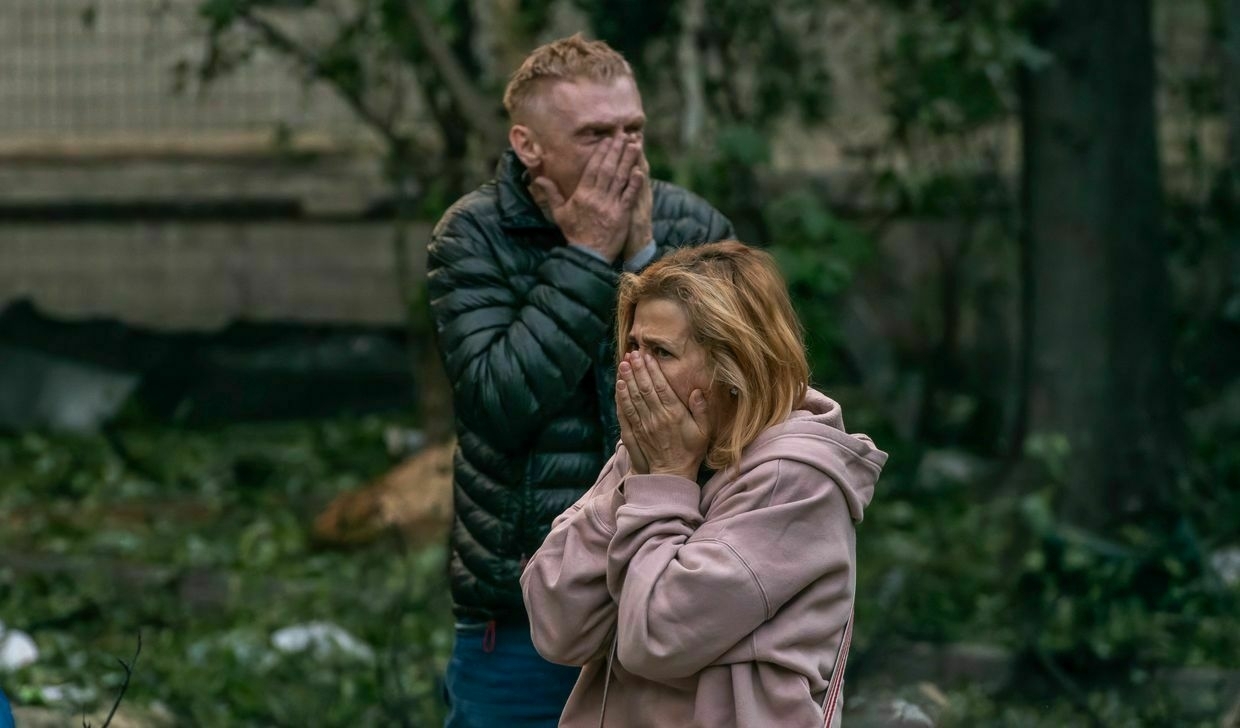
"The source of this war and the long-term threat to Europe is Russia," Zelensky said. "But in reality, we are not just facing Russia alone. We are facing a network of state and non-state actors."
Zelensky also called on NATO members to increase defense spending to 5% of GDP and to dedicate at least 0.25% of GDP to support Ukraine's military needs directly. He thanked countries such as Germany, Norway, Sweden, and the Netherlands for their elevated commitments, but urged others to follow suit.
Zelensky warned that Russia is planning "new military operations on NATO territory" and that the war in Ukraine must be stopped now to prevent broader European conflict.
"There are no signs that Putin wants to stop this war," Zelensky said. "So long as he kills, he lives. And our intelligence confirms this."
He also appealed for a crackdown on the supply chains that allow Russia to sustain its weapons manufacturing, referring to Western-origin components found in Russian missiles, drones, and armored vehicles.
"It's not just China, also Taiwan. Some of these parts come from European countries and from the United States," Zelensky said. "Every single tool delivered to Russia's defense sector helps prolong the war and is a crime against peace."
Zelensky's speech comes as NATO leaders gather in The Hague for a high-level summit on June 24-25. NATO leaders are expected to discuss raising the alliance's defensespending target to 5% of the GDP, a proposal the U.S. has championed but from which it considers itself exempt.
Amid relentless Russian strikes, Ukraine’s businesses rebuild aloneIt took firefighters two days to extinguish the flames at Oleksiy Tarnopolskiy’s warehouse in Kyiv after a Russian attack on June 10. Nothing inside could be saved from his tea and coffee business. Tarnopolskiy arrived on site to an “apocalyptic” scene at 5 a.m., one hour after a RussianThe Kyiv IndependentDominic Culverwell
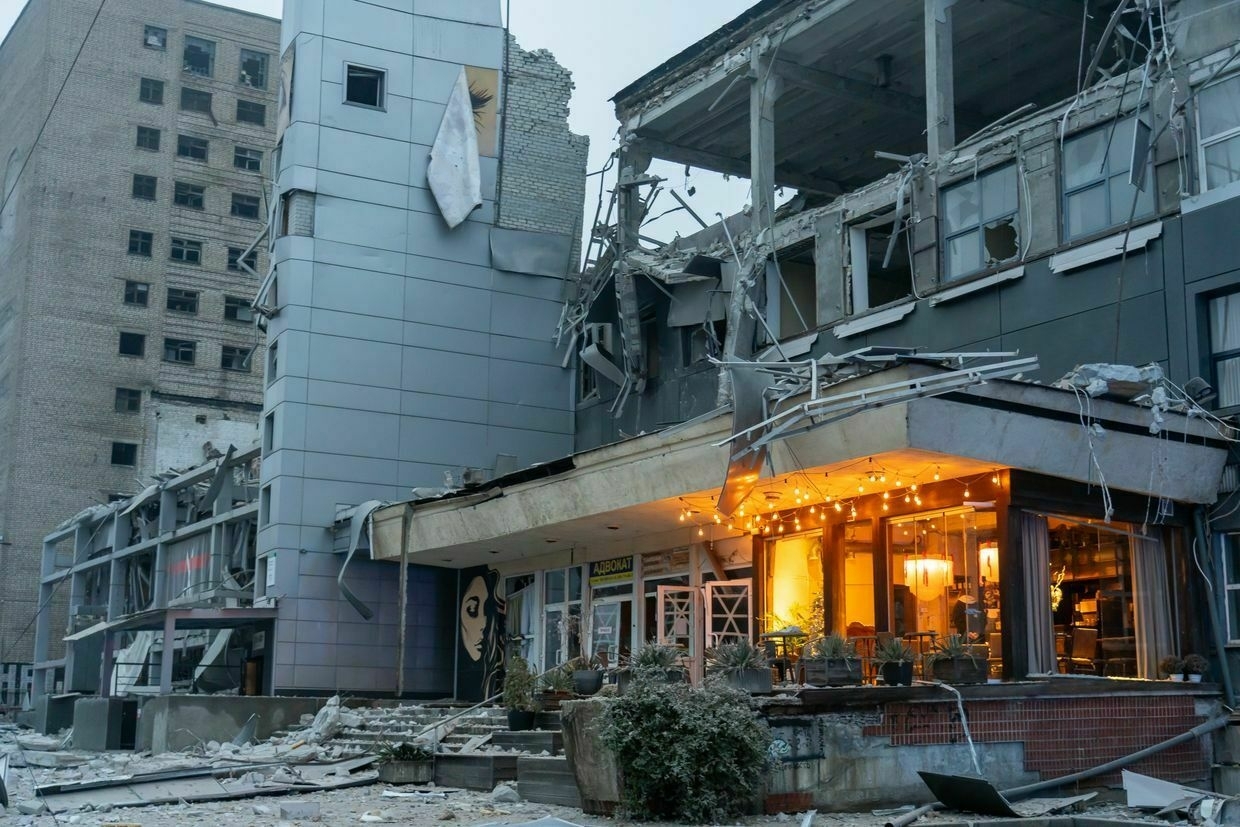
Trump to meet Zelensky during NATO summit, White House confirmsU.S. President Donald Trump will meet his Ukrainian counterpart Volodymyr Zelensky during a NATO summit in The Hague, the White House confirmed on June 24.
The last time Zelensky and Trump met was in April on the sidelines of Pope Francis' funeral amid concerns that Washington would withdraw from mediating peace talks between Kyiv and Moscow.
The White House did not provide any further details about the meeting between the two leaders.
The talks between Zelensky and Trump were scheduled for the "early afternoon" on June 25, the source told AFP, adding that "the teams are finalizing the details" of the meeting.
Trump and Zelensky are expected to discuss Ukraine's "purchase of a defense package, a large part of which consists of air defense systems," according to the source.
The discussion will also focus on "sanctions against Russia, and a price cap on oil," the source added.
Earlier, Trump said that he "would probably meet" Zelensky in The Hague after the two presidents did not manage to talk during the G7 summit in Canada earlier in June, AFP reported on June 24.
When asked what he would say to Zelensky, Trump replied: "I'll say: 'How are you?' He's (Zelensky) in a tough spot, he shouldn't have been there at all".
Zelensky also said in an interview with Sky News that he planned to meet Trump in The Hague. Asked whether the meeting would be a formal discussion or an informal encounter, Zelensky said it was a matter of scheduling: "They are talking about timing. It's timing."
Zelensky expressed hope that Trump's approach to Russia is tactical, intended to pressure Putin into peace negotiations. "I would like this approach to be only a way to force Putin to the negotiating table and to end the war. And let us hope so," he said.
Zelensky was scheduled to meet Trump at the Group of Seven (G7) summit, held June 15-17. However, the U.S. president left the multilateral event early due to the renewed conflict between Israel and Iran.
Zelensky also left the summit early, citing Russia's mass drone and missile attack on Kyiv.
UK to fund joint drone production with UkraineUkraine and the United Kingdom have reached an agreement to jointly produce drones, Defense Minister Rustem Umerov announced on June 24.
Britain will finance the procurement of Ukrainian-designed drones manufactured in the UK, he added.
The deal comes as Ukraine has rapidly developed its drone capabilities since 2022, evolving from modifying commercial aircraft to producing military UAVs, attack drones, and reconnaissance systems at scale.
The agreement was reached between President Volodymyr Zelensky and British Prime Minister Keir Starmer, Umerov said.
Under the three-year program, the UK will finance the procurement of a wide range of Ukrainian drones to be produced by British defense companies.
"This will enable British defense companies to rapidly design and produce state-of-the-art drones on a large scale," Umerov wrote on Facebook.
According to Umerov, all production will be directed to meet the needs of Ukraine's Defense Forces. After the war ends, the UK and Ukraine will share the produced drones between themselves.
The initiative will support the scaling of advanced technologies, increased drone production, and the integration of Ukrainian and British defense industries, Ukraine's defense minister wrote.
Ukraine has ramped up domestic drone production over the recent years of its war with Russia, as well as the development of new missiles.
Various aerial, naval, and ground drones have been developed and often successfully used for reconnaissance, combat, and other tasks throughout the full-scale war with Russia.
In January 2025, Umerov announced that the United Kingdom would finance the production of air defense systems and long-range weapons in Ukraine.
Note from the author:
Ukraine War Latest is put together by the Kyiv Independent news desk team, who keep you informed 24 hours a day, seven days a week. If you value our work and want to ensure we have the resources to continue, join the Kyiv Independent community.
‘Like any technology, it’s a race’ — UK’s largest ammo maker rebooting chemistry to break NATO’s dependence on explosive importsRussia’s war in Ukraine has drained Western ammunition stocks. Despite years of claimed weapons ramp-ups, NATO’s arms manufacturing is still not refilling those stocks apace, let alone making it to Ukraine in needed mass. The West has come to recognize that these shortages are due to the offshoringThe Kyiv IndependentKollen Post
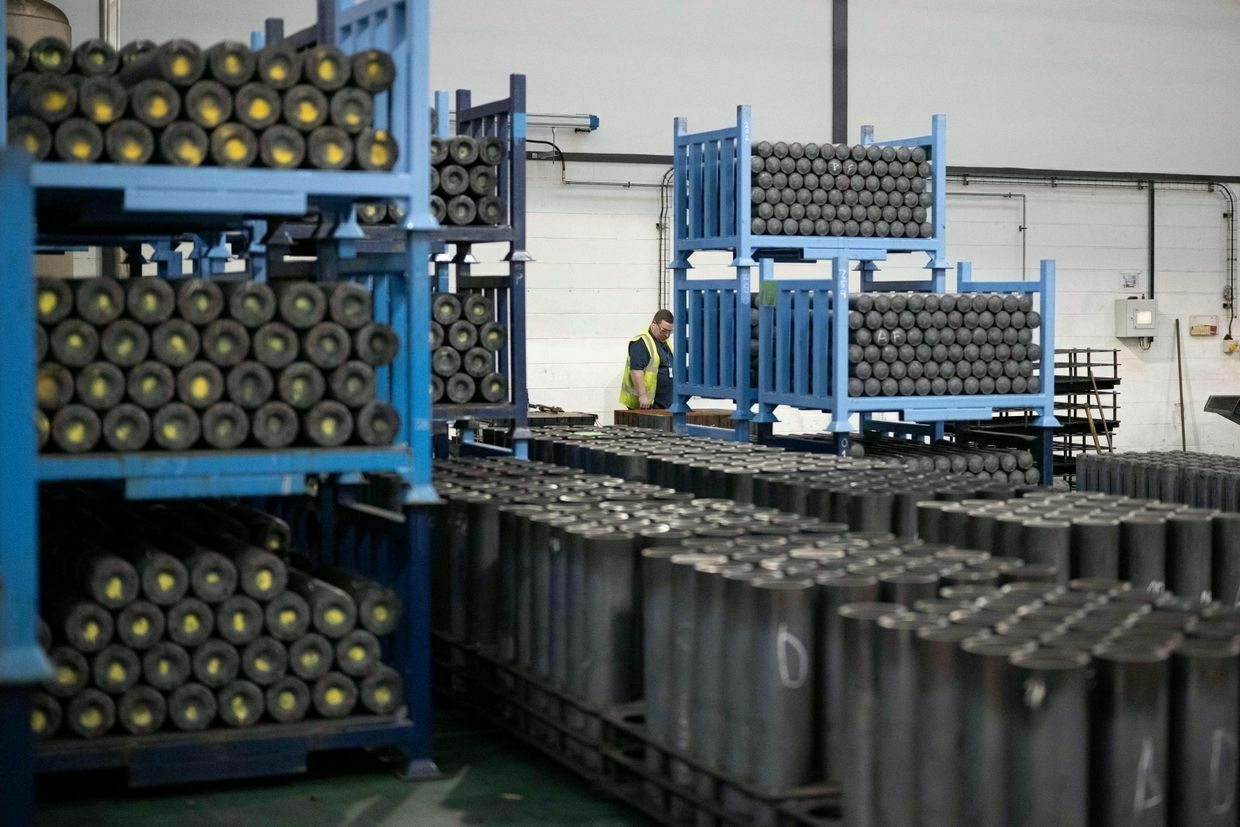
-
Ukraine’s new military innovations: robots on the frontline and UK partnership
-
Ukraine evacuates 31 citizens, including 14 children, from Iran
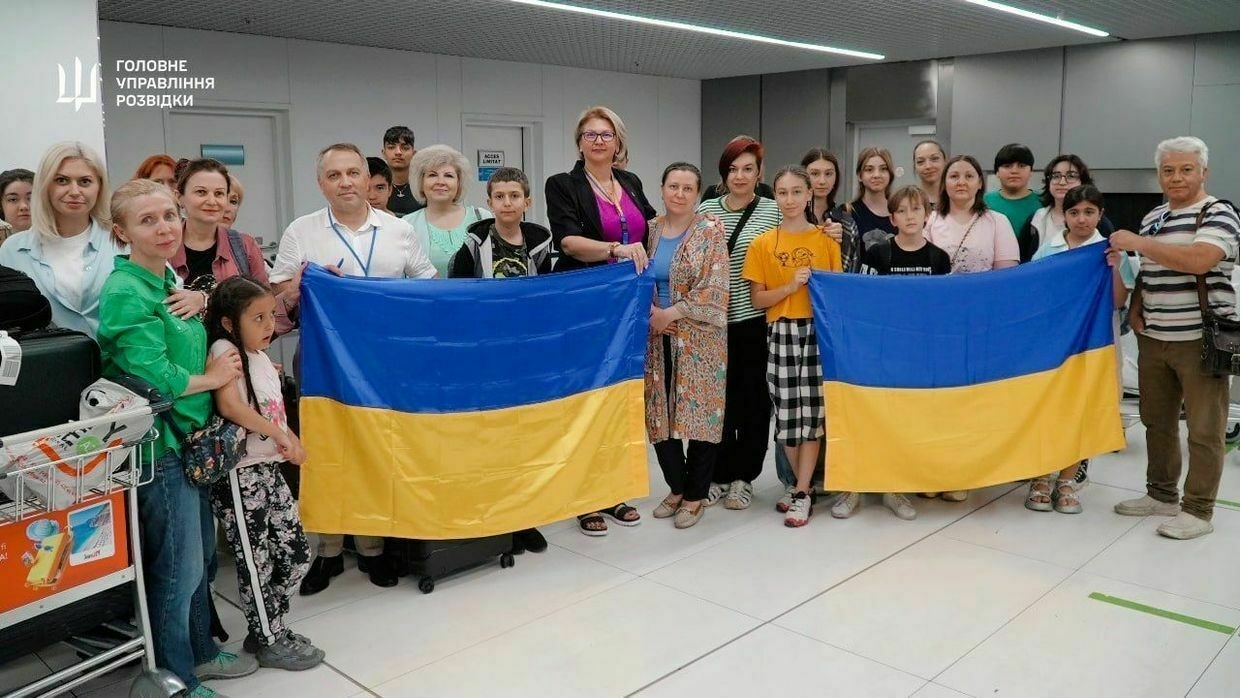
Ukraine’s military intelligence agency (HUR) and the Foreign Ministry have evacuated 31 Ukrainian citizens from Iran on the instructions of President Volodymyr Zelensky, the agency said on June 24.
The news follows a war between Iran and Israel that began on June 13. The countries reached a ceasefire deal on June 24.
Israel and Iran attacked each other hours after the ceasefire was announced. Despite the initial violations, the agreement appears to be holding now.
Ukraine evacuated 14 children, 12 women, and five men, according to HUR.
The evacuation was carried out through Azerbaijan and Moldova to Kyiv, the statement read.
“We felt completely unprotected all the time in Tehran because there were no air raid alerts. In addition, the Internet was down, and we had no idea what was happening,” Varvara from Kyiv Oblast, who was evacuated from Iran, told HUR’s press service.
Earlier, Ukraine evacuated 176 people from Israel, including 133 Ukrainian citizens. The evacuation from Iran is the final stage of a joint operation by HUR and the Foreign Ministry to rescue Ukrainian citizens from high-risk areas, according to the agency’s statement.
Tensions between Iran and Israel had already been rising after Iran launched missile strikes on Tel Aviv and other Israeli cities on June 13, killing multiple civilians, including five Ukrainian nationals. The attack came in retaliation for Israeli military action.
On June 24, Trump announced that a ceasefire between Iran and Israel had come into effect, following the U.S. strikes on Iranian nuclear facilities and a retaliatory Iranian attack on a U.S. military base in Qatar.
Investigation: How Russia prepares its strategic missile plant for ‘eternal war’Key findings: * Despite international sanctions, Russia’s strategic missile plant was able to import complex machinery to dramatically increase missile production. * The Kyiv Independent has identified the equipment supplied to the plant, as well as the supply chains, mostly from China. * We located the plant’s new premises, built to house theThe Kyiv IndependentAlisa Yurchenko
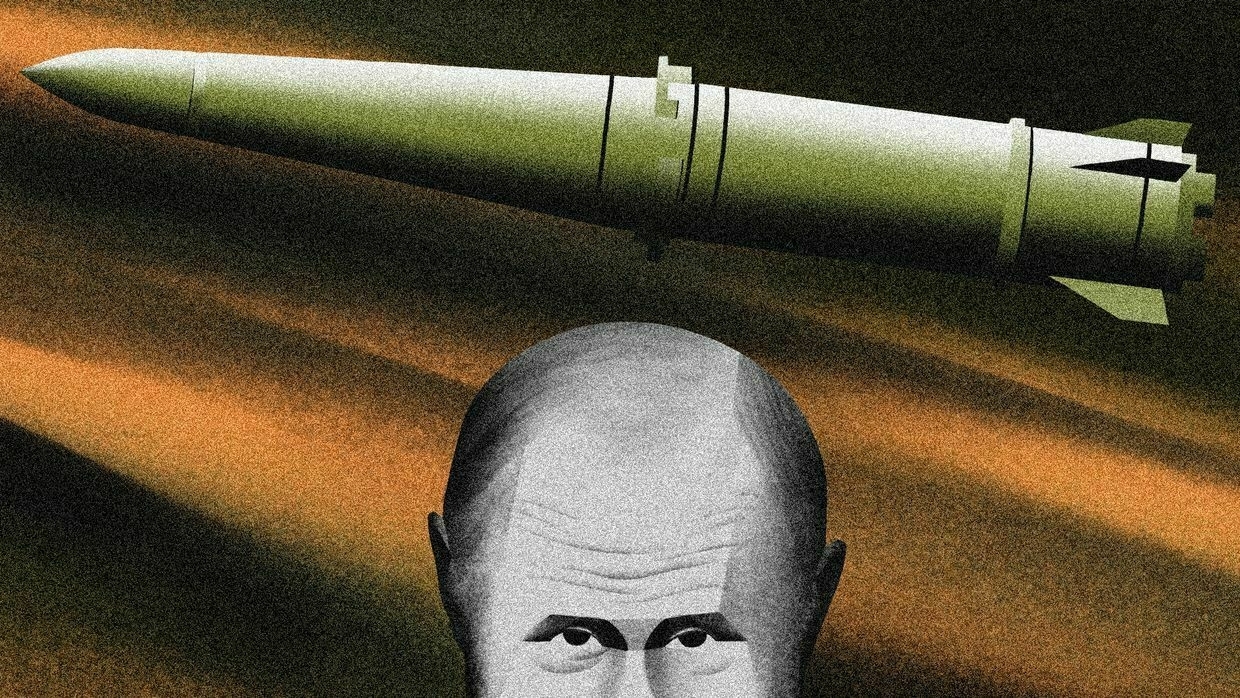
-
‘Like any technology, it’s a race’ — UK’s largest ammo maker rebooting chemistry to break NATO’s dependence on explosive imports
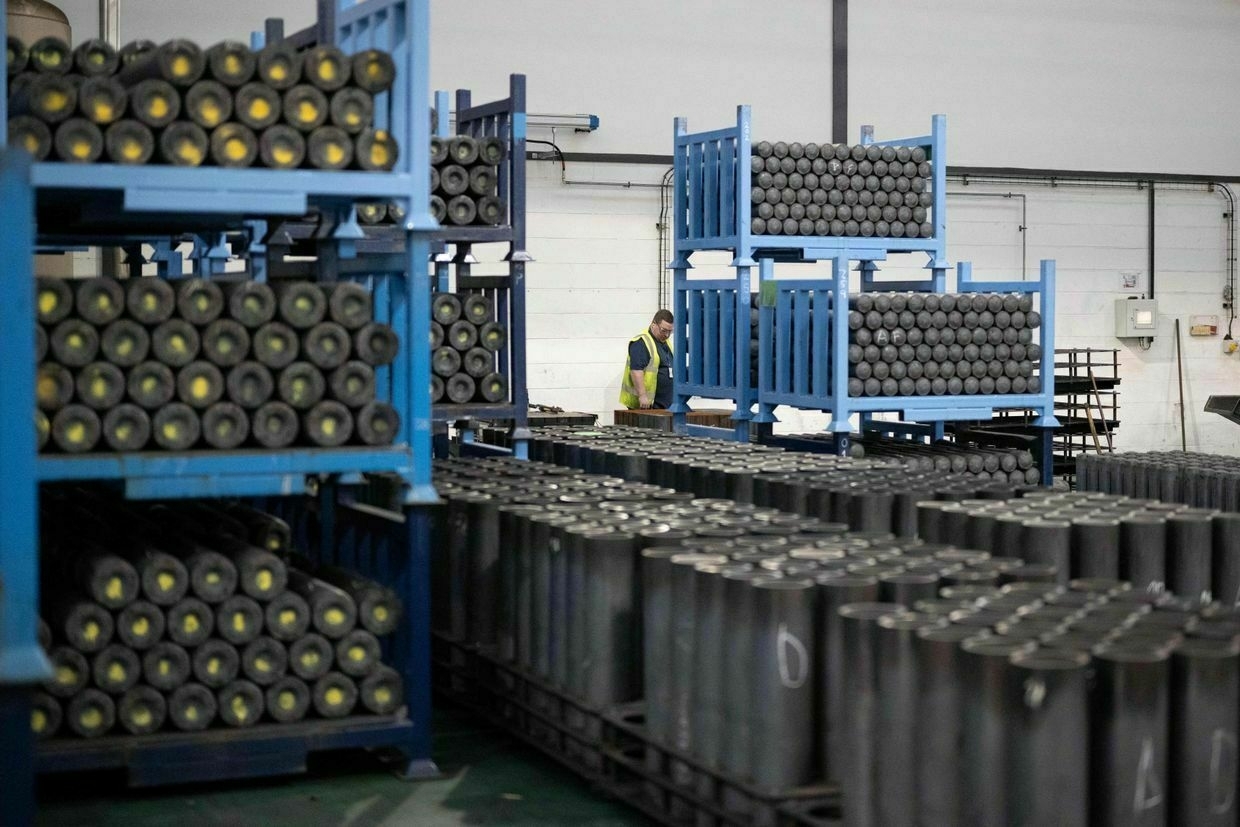
Russia’s war in Ukraine has drained Western ammunition stocks. Despite years of claimed weapons ramp-ups, NATO’s arms manufacturing is still not refilling those stocks apace, let alone making it to Ukraine in needed mass.
The West has come to recognize that these shortages are due to the offshoring of explosives production. But a flurry of new investment incentive schemes from NATO members into defense industries is not yielding results that compare with Russia’s alarming success at arming itself, even beset with sanctions.
Western arms makers are scrambling to buy up or expand factory space to fill in for, particularly, Chinese explosive chemical imports. But one is choosing to reconsider the standard chemistry of modern gunpowder.
“The whole industry is going through this disruption period,” said Steve Cardew, director of business development and strategy for BAE Systems, in an interview with the Kyiv Independent. “That then provides the catalyst to really look at new technologies."
BAE Systems is the U.K.’s largest ammunition maker and one of the biggest in Europe. Its U.S. affiliate is likely the largest supplier of “energetics,” the raw materials for explosives and propellants, that remains geographically within NATO.
Like all of its competitors, BAE is hastening to fill the demand that Russia’s invasion of Ukraine has created for armaments both in Ukraine and elsewhere. Its U.K. branch is, however, unique in banking on a new chemical process that moves away from a key import entirely — and may well be the template for Ukraine to make more explosives of its own.
Wartime reshoringNATO is patching up its supply chain to compete with Russia and China. BAE in particular is trying to make the energetics in the U.K. itself, where the last such plant — for TNT — closed in 2008.
“Historically, ammunition has been a cyclical business,” said Cardew. “Conflict happens, we build capacity — that capacity takes time to build, it’s very expensive to sustain — and then we go through relative periods of peace and stability, and questions are asked in terms of: Why do we need such big real estate?"
Western militaries largely downshifted from heavy artillery after the end of the Cold War. General ammunition production waned as the War on Terror subsided, particularly after the U.S.’s pullout from Afghanistan.
Western arms makers like BAE have jump-started artillery factories since Russia invaded Ukraine, kickstarting what Cardew termed “a need for continual supply to make sure that the Russian advance into Ukraine doesn’t get any worse."
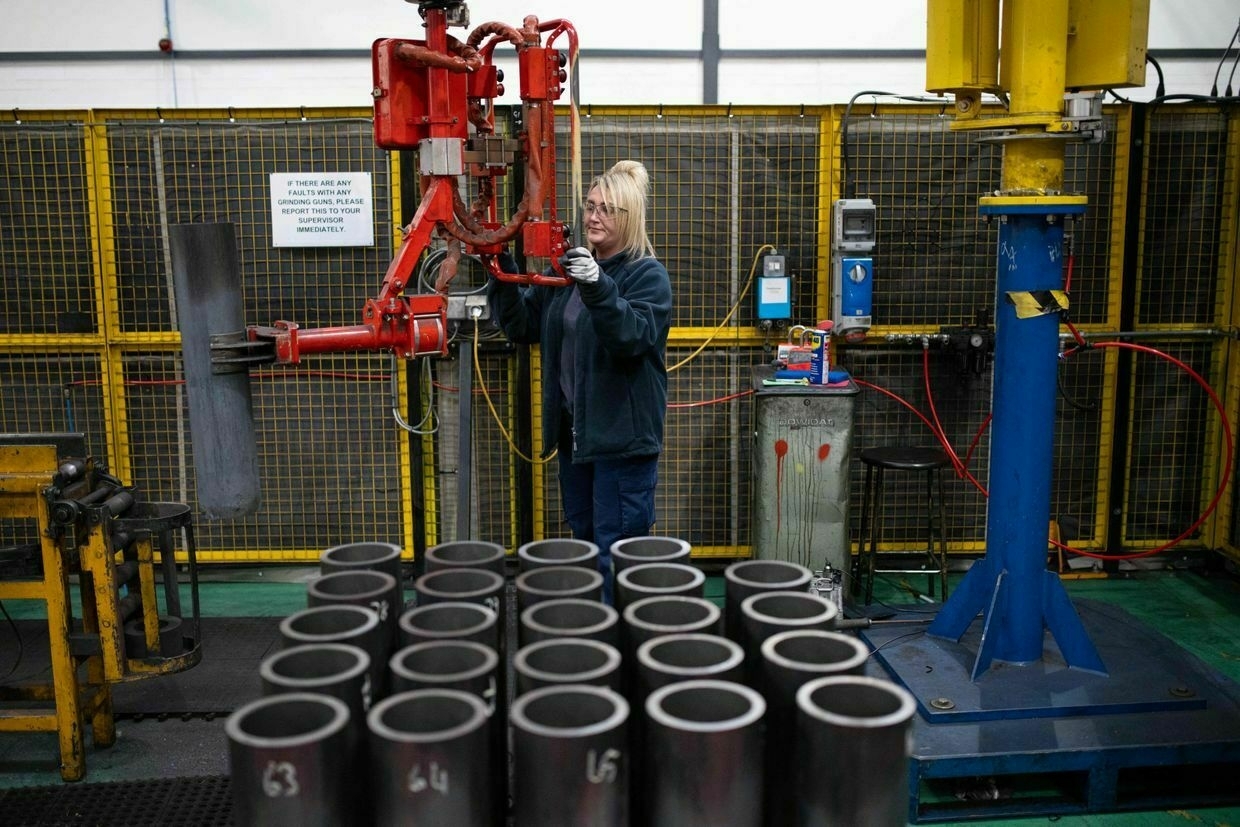
An employee maneuvers 155mm artillery shell casings during manufacturing at the BAE Systems factory in Washington, United Kingdom, on Nov. 8, 2023. (Oli Scarff / AFP via Getty Images) 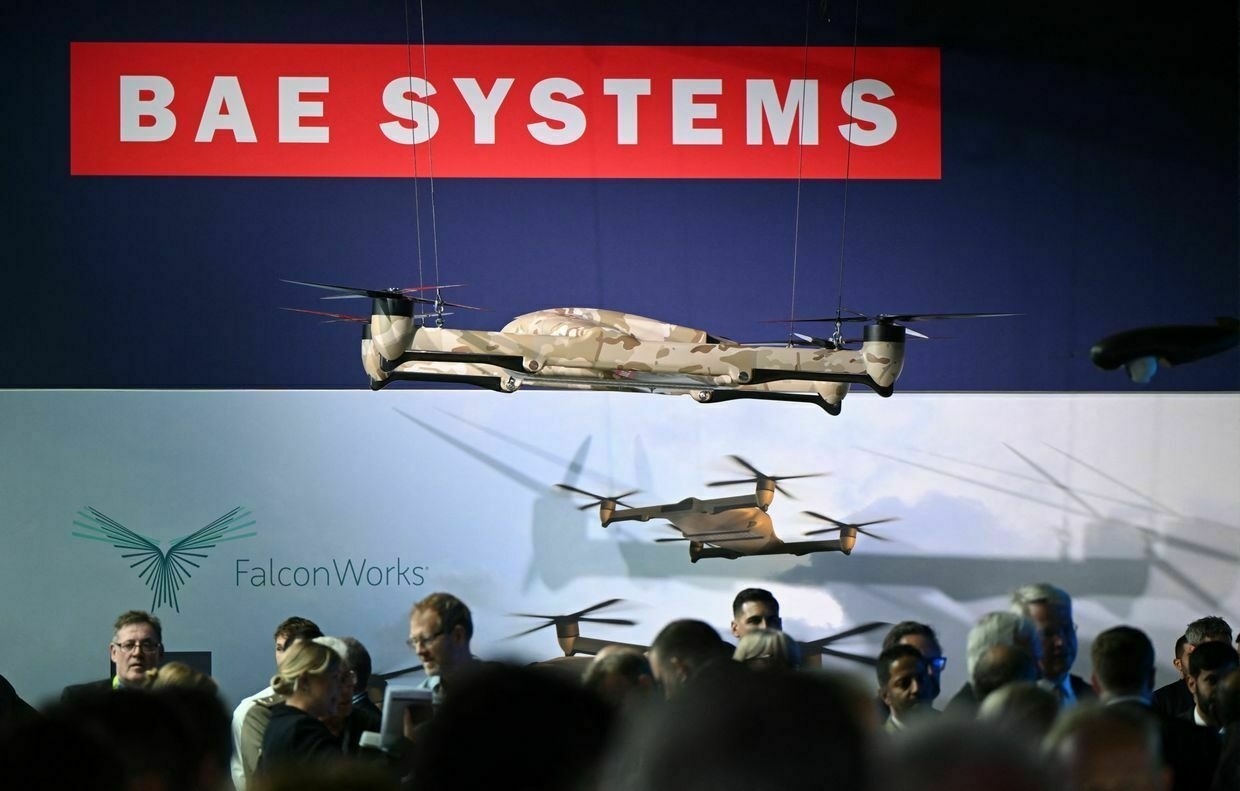
Delegates look at FalconWorks unmanned aerial vehicles (UAV) displayed at the BAE Systems stand in Farnborough, United Kingdom, on July 22, 2024. (Justin Tallis / AFP via Getty Images) But the revamping of, especially, high-caliber ammunition production quickly exposed a glaring oversight further up the supply chain. Most modern propellants that drive munitions ranging from 9 to 155 millimeters are based on nitrocellulose, most of which the West was buying from China. Nitrocellulose itself derives from cotton linter, of which the primary producer is, likewise, China.
“The cheapest way of doing it was relying on supply chains that were not in the U.K.,” Cardew said. “The fundamental bit is the thing that feeds nitrocellulose, the cotton linter – that’s a really scarce material, there are only a few places that you can buy it from."
BAE Systems’ U.S. affiliate runs the Radford Ammunition Plant in Virginia on behalf of the U.S. military, which owns the plant.
“Our approach is to reduce that down, to duplicate, so that you have many, many nodes operating continuously — that means each one is easier and cheaper to build, and needs less space around it.”
The largest producer of military-grade nitrocellulose left inside of geographical NATO, Radford is itself an example of the shoddy condition of the alliance’s supply chain, playing host to constant chemical spillages and losses, accidental explosions, and delayed launches.
But blow-ups are the nature of the nitrocellulose business. Like much heavy manufacturing, China took it on because it boasts looser environmental controls and a lower risk of public outrage when factories explode, in addition to cheaper labor costs.
Today, weapons firms are buying up existing nitrocellulose factories throughout Europe, either abandoned or used for non-military purposes like paint and lacquer that demand lower purities than ammunition. This is faster than building new plants de novo in part because European countries are hesitant to license them when their environmental impact takes decades to clean up.
Alternative energeticsThe other major BAE Systems facility in the U.S. is the Holston Ammunition Plant in Tennessee, which is one of NATO’s last producers of another major explosive, RDX, also known as hexogen. A core ingredient in plastic explosives like C4, RDX is typically paired with other chemicals to slow its explosive power, particularly if it’s going to be propelling ammunition.
For decades, arms chemists have floated various methods for turning RDX into a propellant of the type that can send a 155mm shell flying. With China selling nitrocellulose cheap, Western producers did not explore those compounds industrially. But RDX in particular has a long history of filling in gaps.
The U.K. military was the first nation to work out how to stabilize hexogen into usable explosives, which came in handy at the outset of the Second World War. Between the Nazi takeover of Poland and France in 1939 and the entry of the USSR and the U.S. in 1941, the U.K. was effectively alone in fighting Germany. Wracked with U-boat attacks on shipping, the U.K. depended on homemade RDX, which periodically goes by the name Royal Demolition eXplosive.
Once the U.S. joined the war effort, it set up RDX production en masse at the Holston facility, which, per one account, was producing around 340 tons of the explosive per day at its peak.
Cardew noted that the BAE’s bet today is not to build another British Holston. The new plan is a schema of smaller "nodes" that are easier to bring on and offline and more resilient in the face of accidents, or even attack from a foreign power.
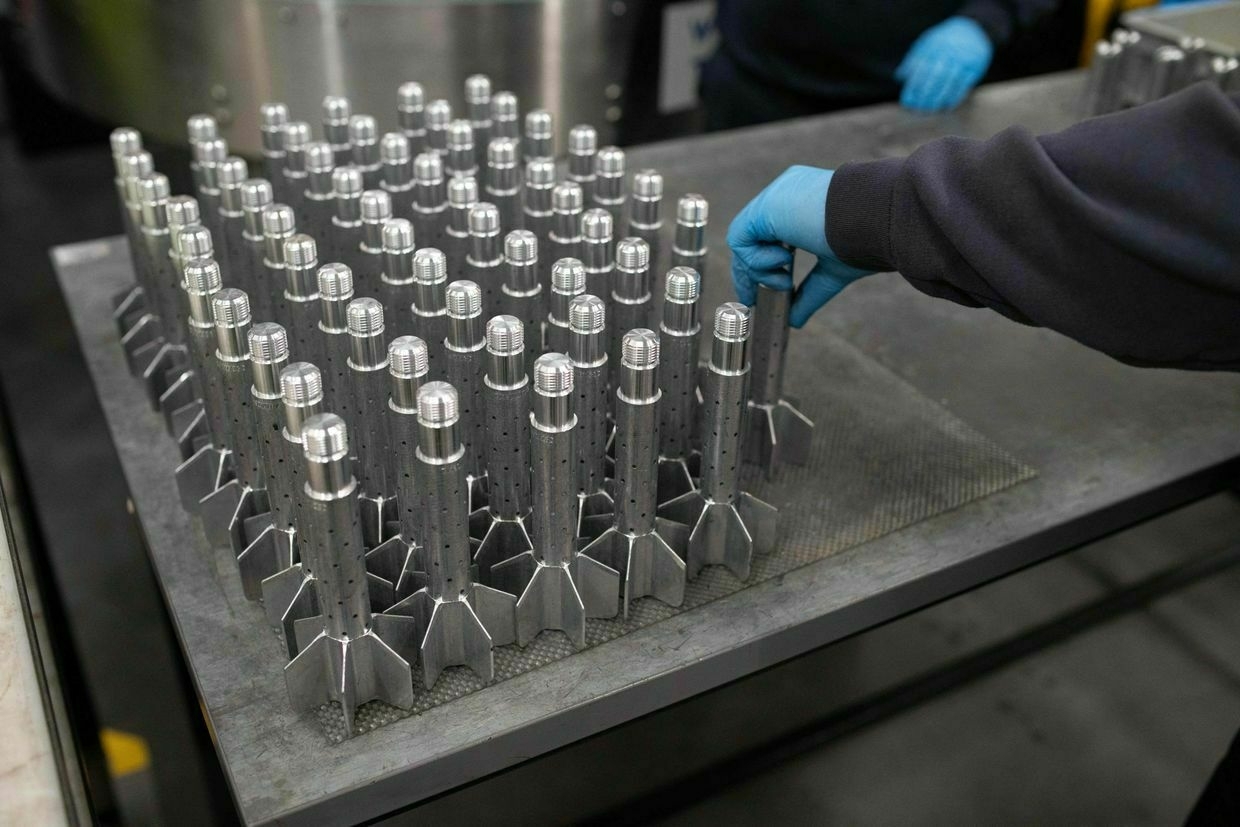
A BAE Systems employee works on the tail section of 81mm High Explosive Mortar munitions in Washington, United Kingdom, on Nov. 8, 2023. (Oli Scarff / AFP via Getty Images) "Factories that generate explosives are large enterprises — hundreds, thousands of acres," Cardew said, handling bulk shipments of explosives at once.
"Our approach is to reduce that down, to duplicate, so that you have many, many nodes operating continuously — that means each one is easier and cheaper to build, and needs less space around it."
Specifically, the new plan entails shipping containers re-outfitted to make RDX in undisclosed locations throughout the U.K. Cardew noted the need for a “distributed network” for resilient production.
"One big explosive facility in the U.K. or indeed anywhere is clearly a risk because of a variety of reasons. If you have 10 and they are geographically dispersed, it is a much better position to be in," Cardew said.
These are indeed likely lessons for Ukraine, whose weapons makers are beset by Russian air attacks on major manufacturing facilities. When asked about the application of BAE’s new methods inside Ukraine, Cardew said, "clearly, there will be conversations at some point, probably around what the U.K. wishes to do and how it wishes to share that technology."
HexogenerationBAE is looking to go even further up the supply chain to make more of the core chemicals needed to make RDX.
RDX is also known as hexogen, and primarily derives from hexamine, which in turn comes from a fairly simple combination of ammonia and formaldehyde — two chemicals that are themselves byproducts of universal organic processes like excretion and decomposition.
Indeed, there is a great deal of overlap among the families of fertilizers and explosives. It was 2,750 tons of the fertilizer ammonium nitrate that blew up the port of Beirut in 2020.
Hexamine is itself a less potent flammable, historically used for things like fuel tablets for cooking included in military field kits. Blended with nitric acid, hexamine turns into the more explosive hexogen.
BAE is considering synthesizing more of the precursor chemicals, especially hexamine. "We don't do that today, but we are looking at how we would do it,” said Cardew. "I can't say too much about that, but that is a next step for us."
A lingering question in Ukraine is whether Western producers will continue their respective rearmaments. In the event of a ceasefire in Ukraine, would BAE and its competitors go back to their pre-2022 business plans?
"Defense, munitions — it’s all an insurance policy, isn’t it?" Cardew said. "How much you pay for your personal insurance depends on your circumstances, your view of the context that you operate in — so that could play out, but I don't think we'll see that happening in the next five to ten years."
Note from the author:
Hi, this is Kollen, the author of this article. Thanks for reading. NATO is convening in the Hague this week, making it a good time to remember the uneven weapon delivery to Ukraine over the three years and three months since Russia’s invasion. The alliance’s ability to take unified action is coming under doubt, as is its capacity to produce what Ukraine needs to defend itself. If you want more stories like this, consider joining our community today to help support our work.
Investigation: How Russia prepares its strategic missile plant for ‘eternal war’Key findings: * Despite international sanctions, Russia’s strategic missile plant was able to import complex machinery to dramatically increase missile production. * The Kyiv Independent has identified the equipment supplied to the plant, as well as the supply chains, mostly from China. * We located the plant’s new premises, built to house theThe Kyiv IndependentAlisa Yurchenko
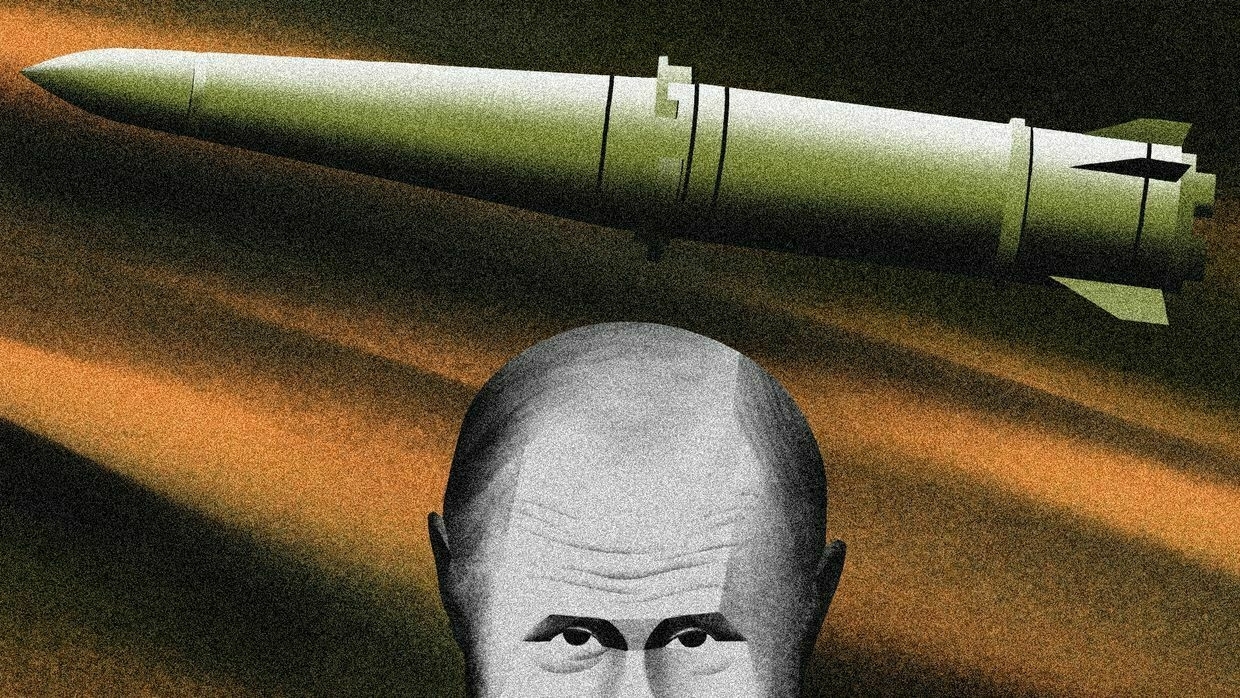
-
Council of Europe, Ukraine to sign accord on June 25 to set up Russian aggression tribunal
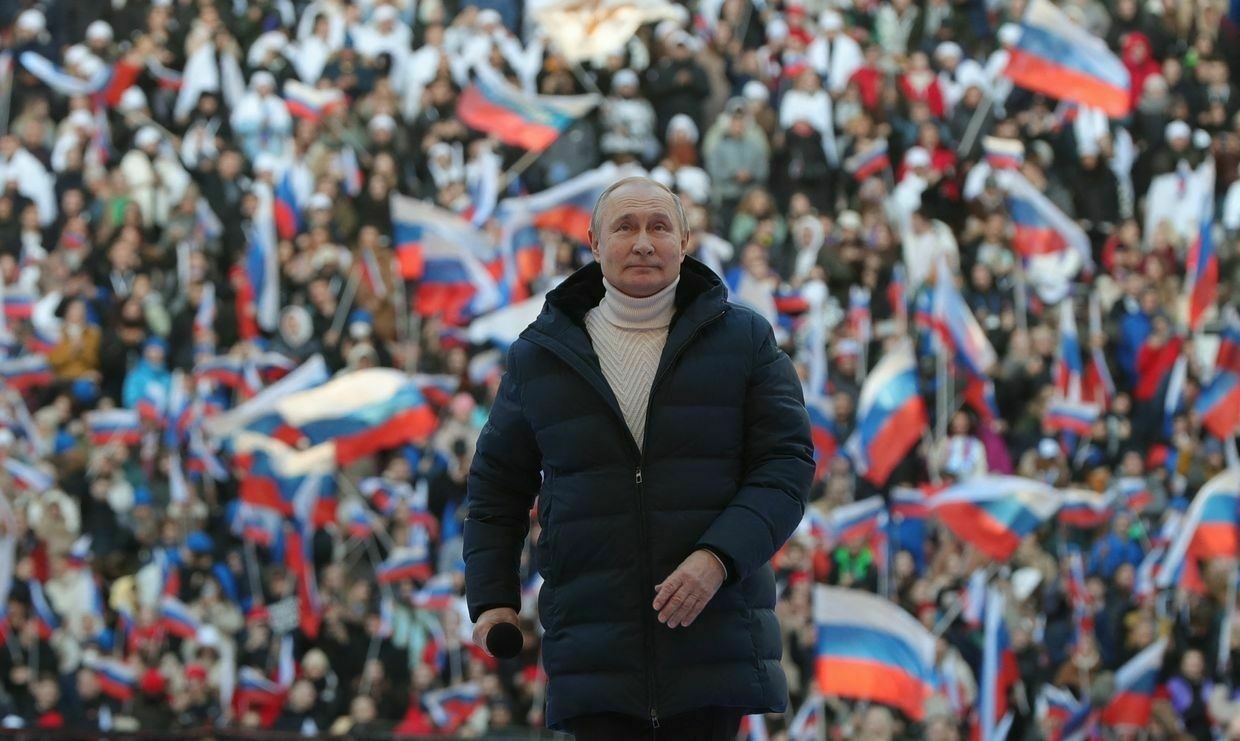
The Council of Europe and Ukraine will sign an agreement on June 25 to set up a special tribunal for the crime of Russian aggression, Yevheniya Kravchuk, a member of Ukraine’s delegation to the Parliamentary Assembly of the Council of Europe (PACE), said on June 24.
The move marks a milestone in international efforts to hold President Vladimir Putin and other top Russian officials accountable for launching the full-scale war against Ukraine.
“What seemed like a dream of justice will soon become a reality. Ukraine, together with the Council of Europe, will sign an agreement that will bring Russia to justice,” Kravchuk wrote on Facebook.
Ukrainian Deputy Prime Minister Olha Stefanishyna stressed that the special tribunal will have jurisdiction over the Russian president, prime minister, foreign minister, and other top officials.
“It is not a matter of debate anymore, only a matter of time. Some will get into the hands of justice sooner, some later, but they will all be held accountable. There are no exceptions,” Stefanishyna told the Kyiv Independent. “It’s critical to restore the international rule of law and prevent future acts of aggression."
The tribunal’s jurisdiction covers all aspects of the crime of aggression, including the planning, preparation, initiation, or execution of acts of aggression, according to Stefanishyna.
“The tribunal’s design makes it clear that the official status of the accused at the time of the crime does not exempt them from responsibility,” she said. “Functional immunity does not apply here; high-ranking officials can be prosecuted even while holding office. The statute provides rules for conducting proceedings if the accused is absent."
The tribunal will be authorized to cooperate with the International Criminal Court (ICC) to ensure jurisdictional effectiveness and share information, Stefanishyna added.
President Volodymyr Zelensky has long advocated for the tribunal to ensure that Putin and other senior Russian officials face justice for launching the invasion three years ago.
Ukrainian prosecutors have documented thousands of war crimes committed by Russian forces, including attacks on civilians, cultural and medical sites, and acts of torture and deportation.
While war crimes, crimes against humanity, and genocide can be prosecuted against individuals at any level, the crime of aggression applies exclusively to state leaders responsible for planning and waging a war.
The ICC has already issued arrest warrants for Putin and Maria Lvova-Belova, the Russian official overseeing the forced deportation of Ukrainian children to Russia.
‘Dead and wounded everywhere’ — at least 160 casualties as Russia strikes Dnipro with ballistic missiles, hits civilian trainRussia launched a deadly missile attack on the Ukrainian city of Dnipro on June 24, striking civilian infrastructure and a passenger train, local officials reported. The Kyiv IndependentAnna Fratsyvir
The Kyiv IndependentAnna Fratsyvir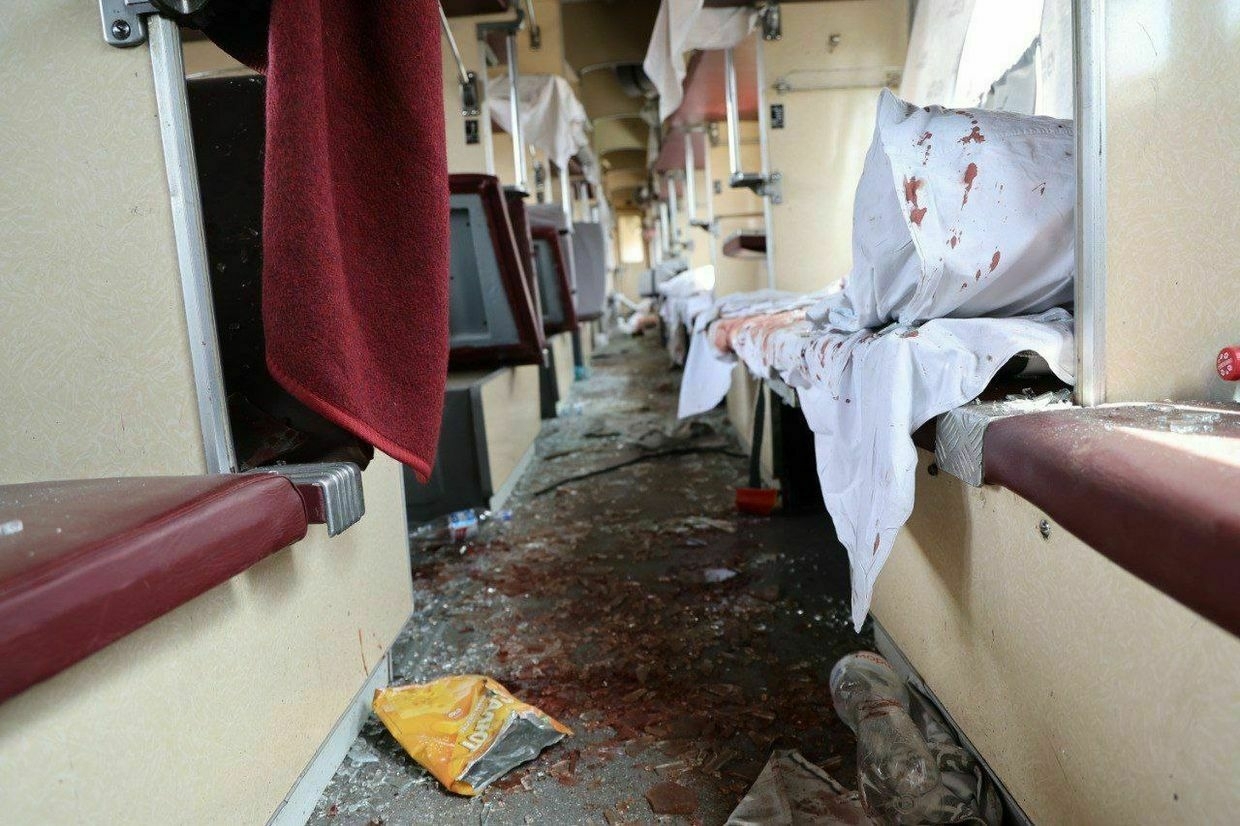
-
Amid relentless Russian strikes, Ukraine’s businesses rebuild alone
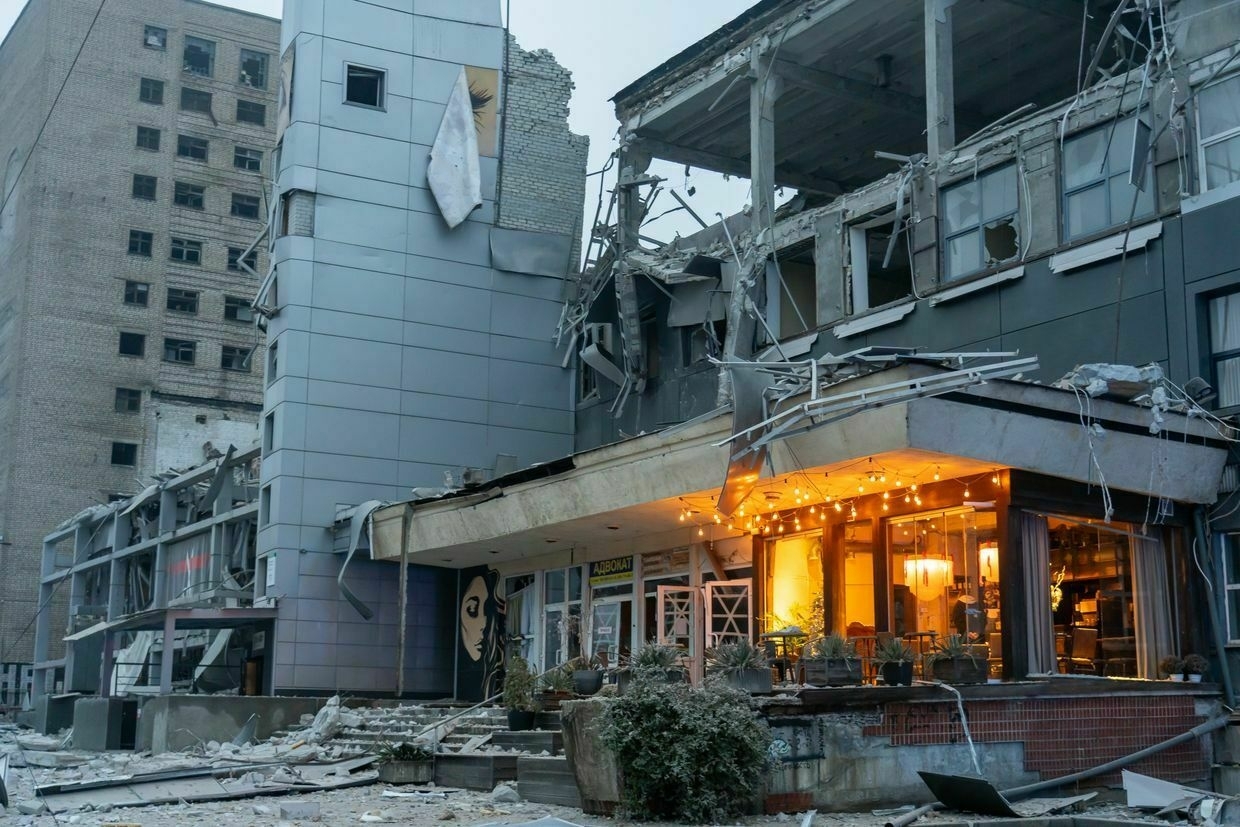
It took firefighters two days to extinguish the flames at Oleksiy Tarnopolskiy’s warehouse in Kyiv after a Russian attack on June 10. Nothing inside could be saved from his tea and coffee business.
Tarnopolskiy arrived on site to an “apocalyptic” scene at 5 a.m., one hour after a Russian drone struck a warehouse of his company, Gemini, in Kyiv’s Obolon district. Luckily, none of Gemini’s employees were hurt.
The company couldn’t salvage any inventory, and over a week later, the air is still thick with the smell of charred plastic and coffee. Walking around the warped remains of the warehouse, which supplied 30-40% of Gemini’s customers, Tarnopolskiy picks up ashy coffee packets that somehow remained intact.
“It’s good packaging,” he jokes as he displays them on a blackened metal beam. The company’s showroom stands behind the warehouse, littered with glass shards and rubble.
Gemini is one of many Ukrainian companies to have suffered from Russia’s relentless attacks since it launched its full-scale invasion in 2022. Reconstruction costs for businesses are estimated at $64.4 billion over the next 10 years. By November 2024, Russia had damaged 500 large and medium-sized private and state-owned companies, with countless smaller businesses affected, according to the Kyiv School of Economics (KSE).
Unlike residents of damaged apartments and houses, Ukrainian businesses lack government-backed support programs, while war risk insurance is hard to get. Like Gemini, companies have to rely on their own funds to get back on their feet.
Raising money to rebuild businesses is deemed socially unacceptable amid a wartime culture of donating to the army. Companies that have accepted donations have been harshly criticized. Instead, most businesses are left with limited options, like loans, which often don’t cover the full extent of the damage.
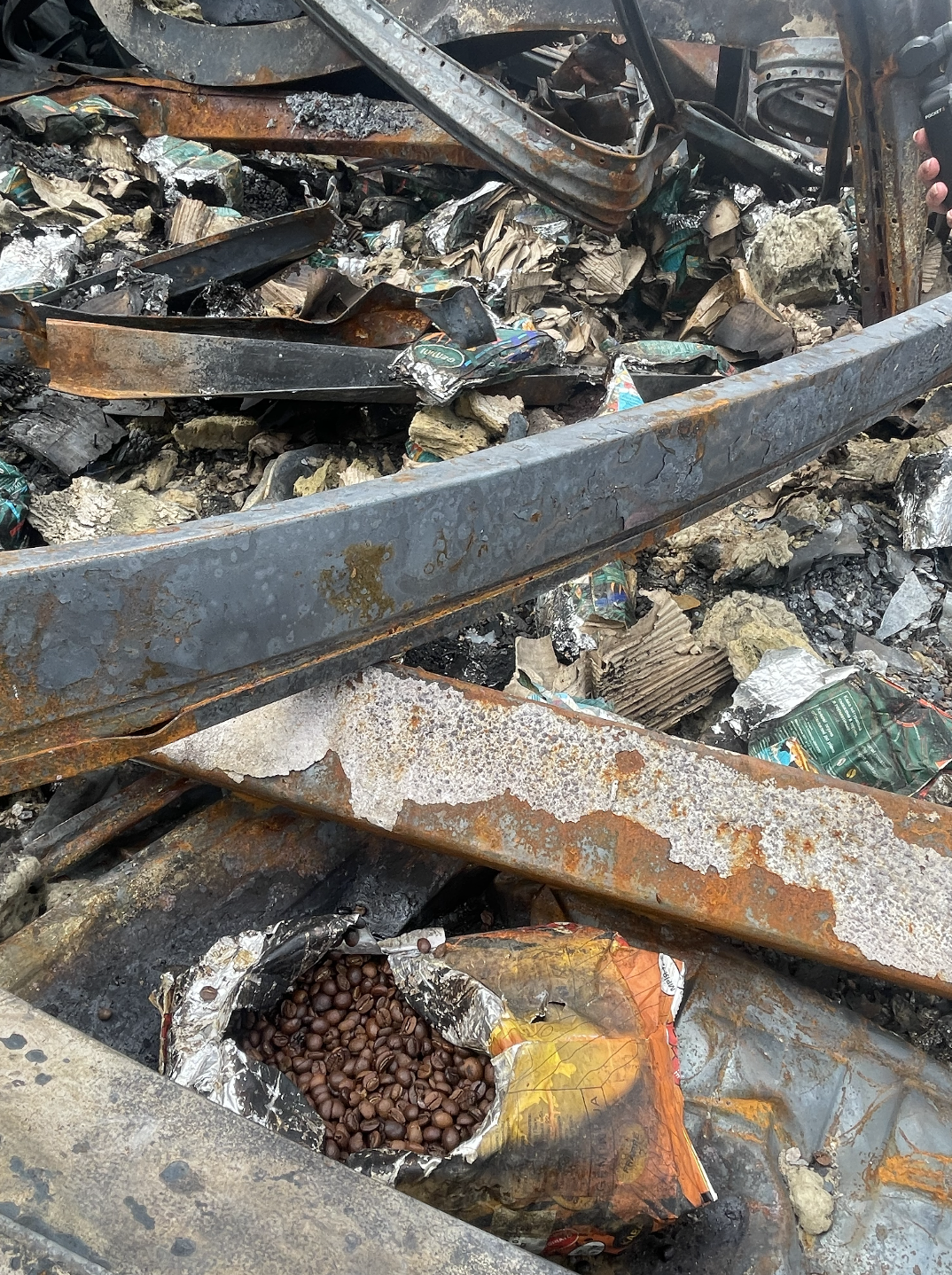
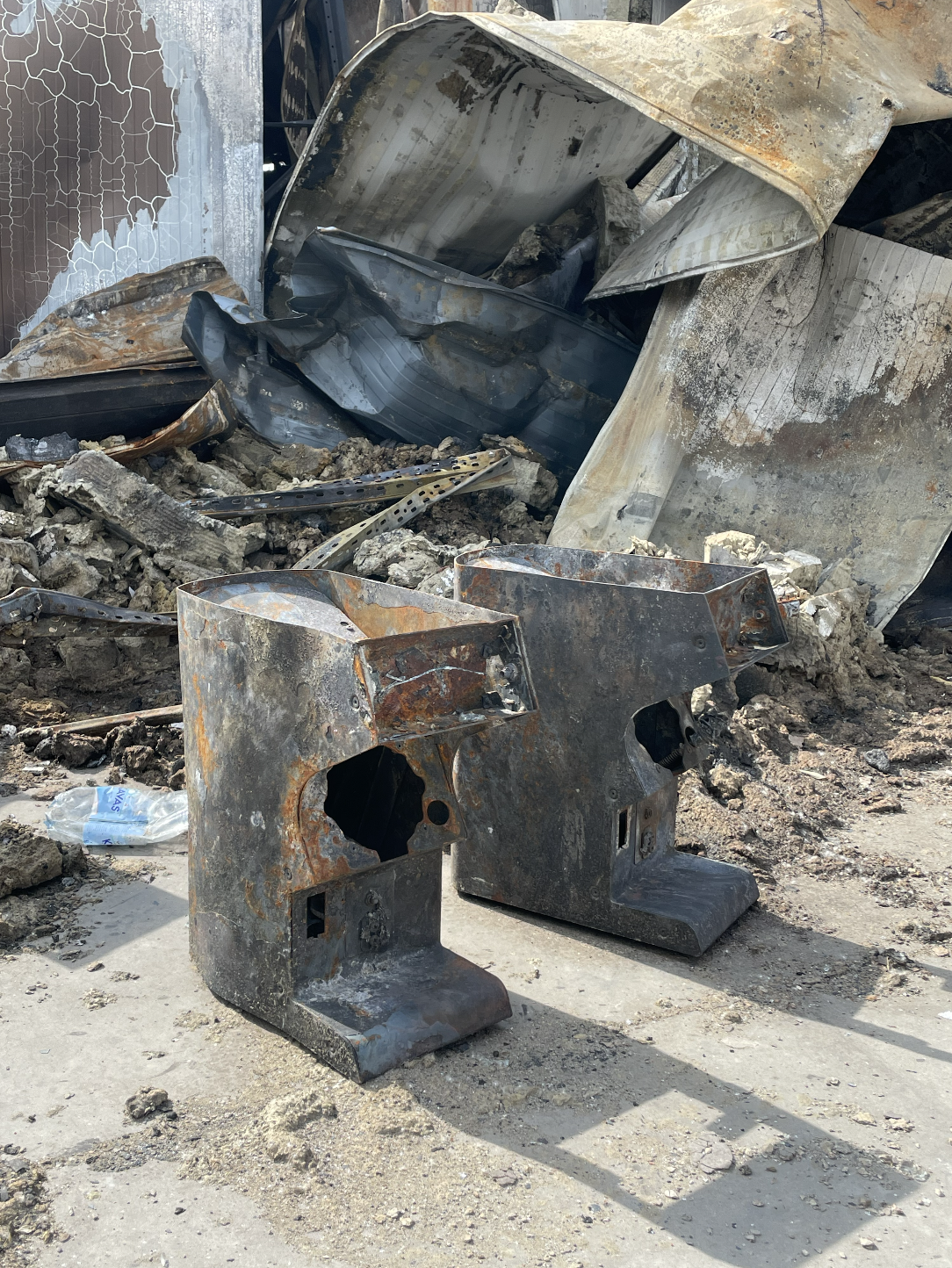
Burned coffee machines and scorched packaging are seen among the ruins of the Gemini tea and coffee warehouse after a Russian drone strike in Kyiv, Ukraine, on June 18, 2025. (Anastasiia Verzun / The Kyiv Independent) “As a business person, I would like some kind of compensation, for example, a no-interest credit program. But there is nothing,” Tarnopolskiy said.
Tarnopolskiy says that after the attack, Gemini’s more than 1,000 customers built up over 29 years, largely gas stations, supermarkets, and fast food restaurants, said they have no plans to abandon the company. He hasn’t had to let go of any of the 150 employees either, and those working at the warehouse were relocated to a production site in the suburbs that was spared from strikes.
Nevertheless, the losses are huge, and Tarnopolskiy doesn’t expect to recover this year. The 3,500 square meter warehouse alone will cost $2 million to rebuild, and the company is hiring a private team to investigate and calculate exact damages that it’ll pay for out of its own pocket.
Not content with waging war inside Ukraine, Russia has now taken it into the virtual worldThe new game is the first to focus on Russia’s war in Ukraine, featuring real battles and characters.The Kyiv IndependentKateryna Hodunova
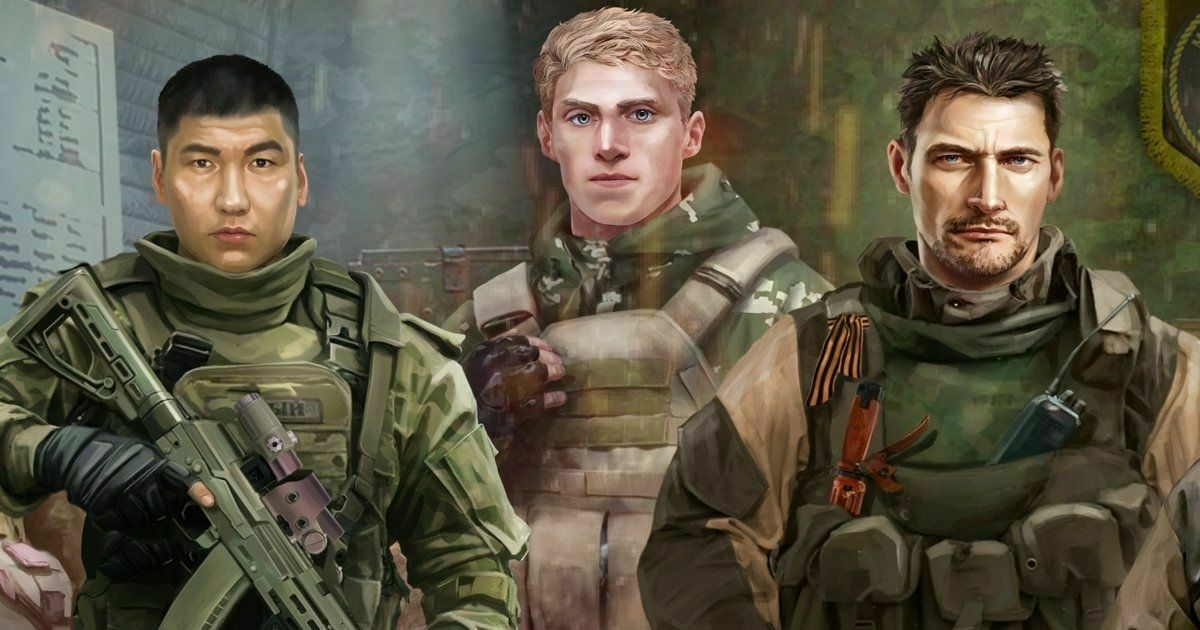
No supportAs the smoke settled, Tarnopolskiy reached out to other companies that had previously been hit to find out what to do next. He had long accepted the risks of operating during war, but never expected to suffer such massive damages.
None of the companies had found government-sponsored compensation schemes. Instead, they all logged the losses, expecting that some program would be established in the future, perhaps even in the form of Russian reparations, said Tarnopolskiy.
Maksym Brevda, a businessman from Mykolaiv, southern Ukraine, has been waiting to hear back from the Mykolaiv city administration for two and a half years after a Russian missile destroyed his car wash in 2022.
“Many of those goods weren’t even fully paid off with our suppliers yet, which now puts us in a double bind: no product and a debt to cover.”
After filling out forms describing the damages to his business, a commission organized by the city administration assessed the car wash. The commission explained that the information will be used when a compensation program starts, but nothing has come of it yet.
Denmark, which 'adopted' Mykolaiv’s reconstruction effort, has support programs through partners like the United Nations Development Program (UNDP), but these are mostly for agri-businesses, while its Export and Investment Fund (EIFO) focuses on large loans of over 3 million euros. Brevda, who co-founded local business association MriyDiy, says the Danes have limited options for other smaller companies.
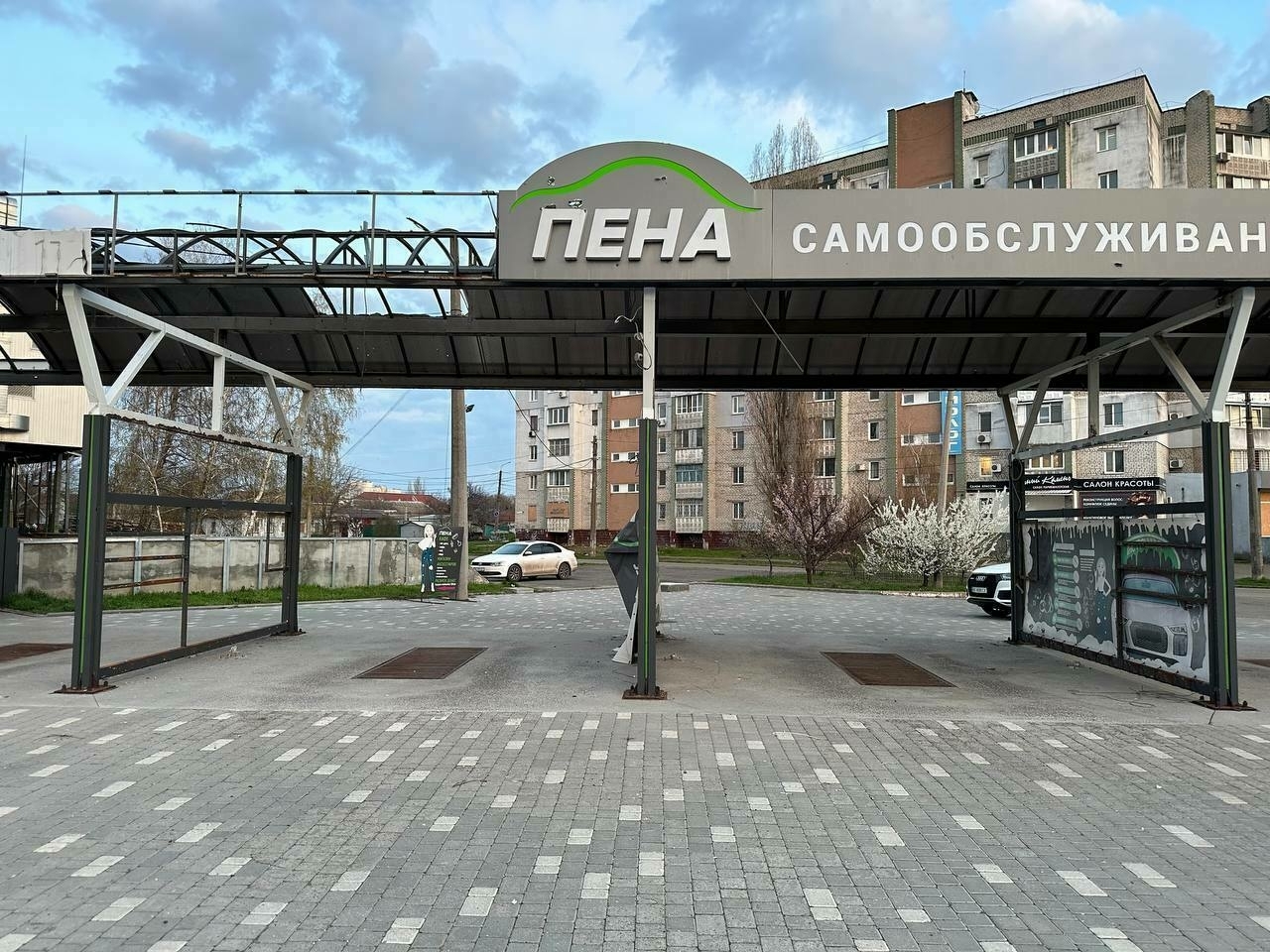
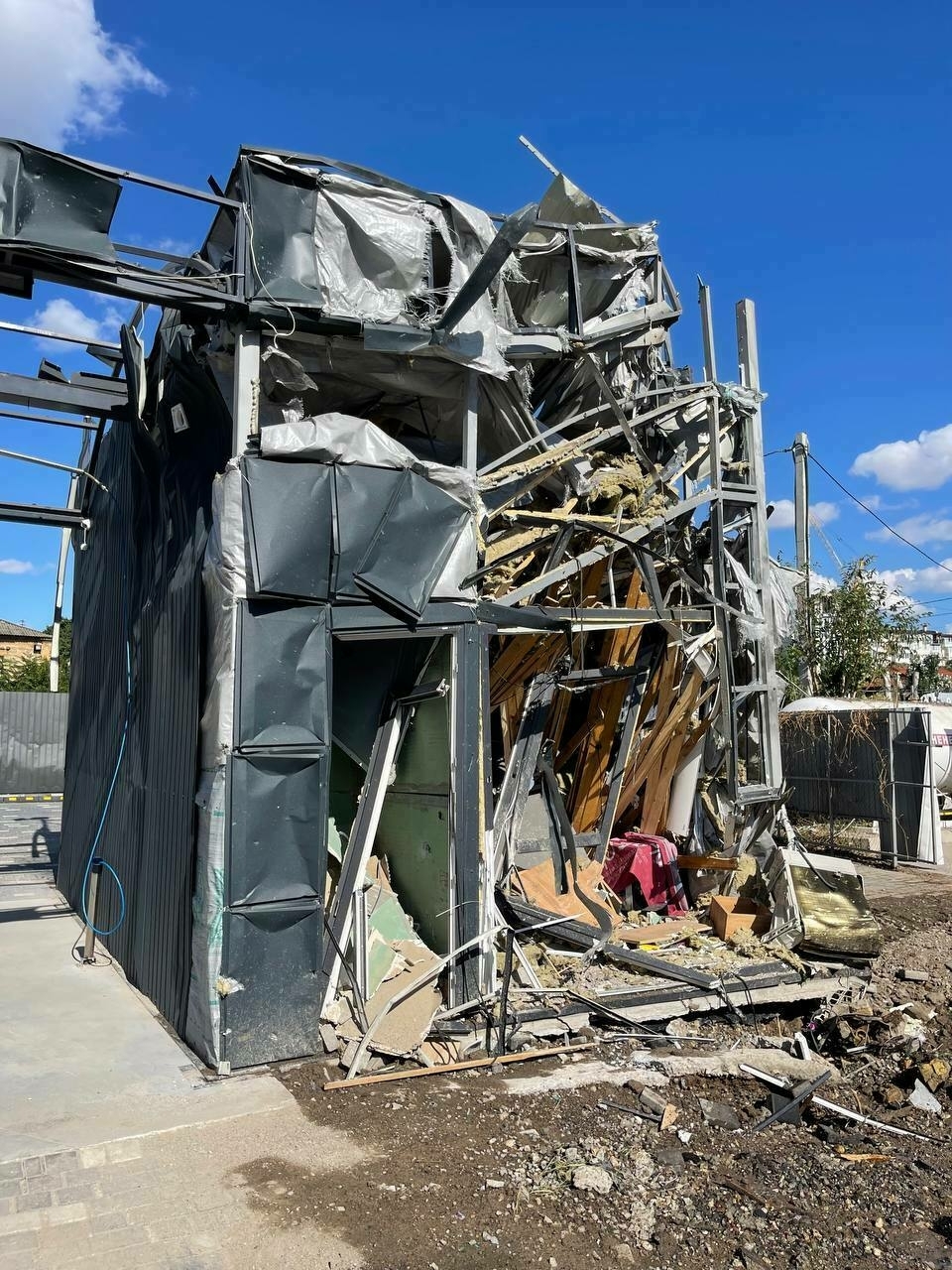
The destruction of Maksym Brevda’s car wash, which was hit by a Russian missile in 2022 in Mykolaiv, Ukraine. Brevda has yet to receive compensation. (Maksym Brevda) It would be extremely hard for Ukraine’s fiscally restricted government to introduce a program while the war continues, as the military and housing are top priorities, said Volodymyr Landa, a senior economist at the Center for Economic Strategy (CES), a think tank in Kyiv.
Judging by the lengthy process to document damages and the lack of full compensation for damaged homes, any future program for businesses is unlikely to be efficient and comprehensive, he added.
"For example, the compensation mechanism for the Iraq-Kuwait War 35 years ago just finished its work in 2022, paying about 15% of the total damage," he told the Kyiv Independent.
Alternative optionsBusinesses are instead utilizing available instruments. Some are applying for favorable loans under the government's 5-7-9% program, which offers reduced interest rates for businesses, although there is no specific option for damaged businesses.
This hasn't worked for everyone. Brevda needed $80,000 to repair his car wash, but could only take out a maximum of $6,000 under the program, and the process was excessively slow. Instead, he sold 50% of his business to private investors to fund its reconstruction. Many other damaged companies he knows have had to do the same.
As the war drags on, some war risk insurance options have emerged through international financial institutions like the European Bank for Reconstruction and Development (EBRD) and the Ukrainian government. The rate goes up the closer the asset is to the front line, and there are still no options for those right next to the fighting.
CES says one solution is to bring in reinsurance options, i.e., insurance for insurance companies, sponsored by financial organizations or private investors, to provide more options for businesses. This means risks can be spread across multiple insurance companies, allowing for greater lending capacity and higher returns.
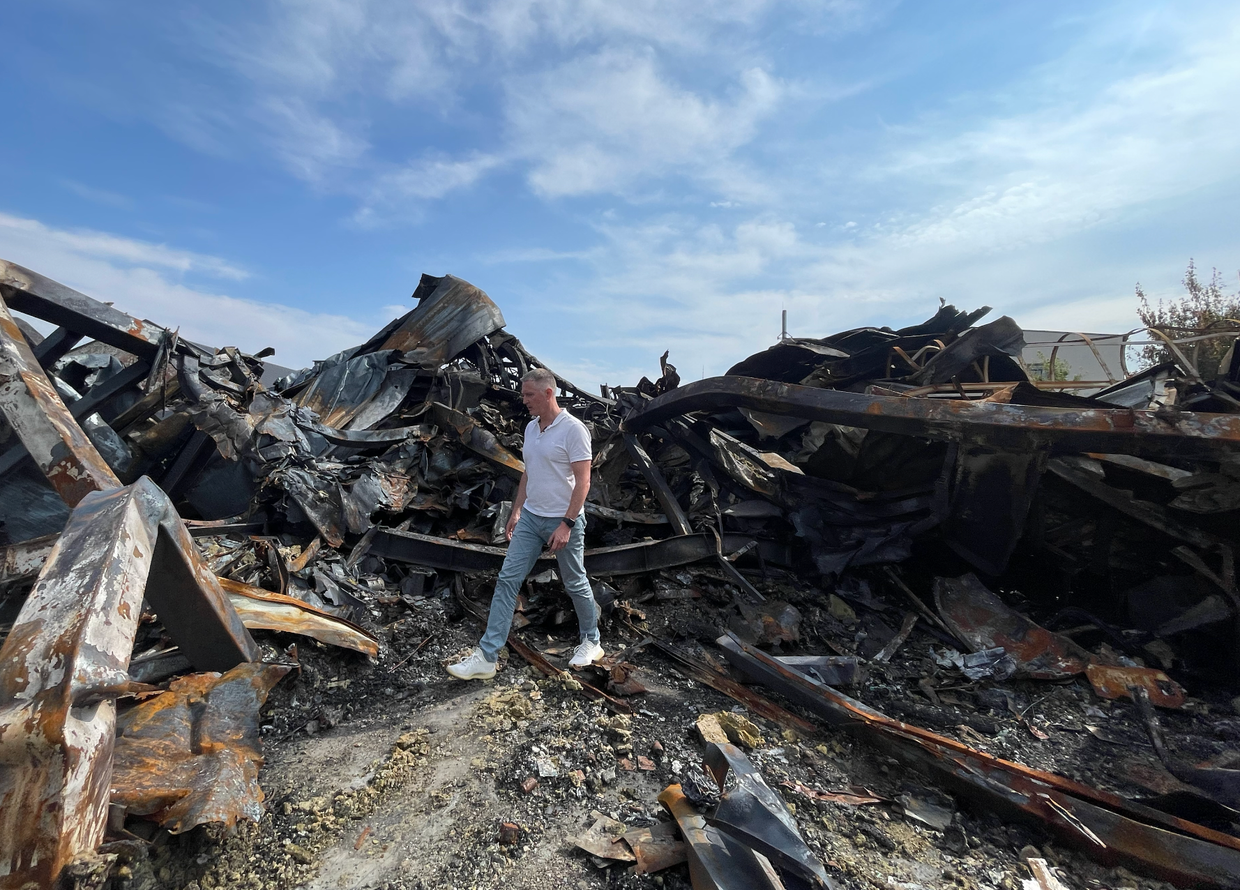
Oleksiy Tarnopolskiy on a ruins of his warehouse in Kyiv Oblast, Ukraine on June 18, 2025. (Anastasiia Verzun/ The Kyiv Independent) In the meantime, businesses have found the most support from each other and their partners. Customers and suppliers rallied behind OMG Shoes after the company lost 35% of its production capacity and 1 million hryvnia ($24,000) in materials during the same attack that hit Gemini on June 10.
"Many of those goods weren't even fully paid off with our suppliers yet, which now puts us in a double bind: no product and a debt to cover," owner Oksana Holod told the Kyiv Independent.
After the attack on the factory, suppliers called to postpone payments, and customers shared messages on social media, leading to a tenfold surge in orders. In one day, nearly all the remaining stock was sold out.
Gemini received similar support from partners who offered donations, which Tarnopolskiy turned down, insisting that money go to military or humanitarian needs.
"The best way to help a business is more orders, more clients, and more purchases. We want to set an example. We are open and we want to work," Tarnopolskiy said.
Note from the author:
Hi, it’s Dominic, thank you for reading this story. I've spent three years meeting businesses in Ukraine, from small startups to state-owned giants, and I'm always amazed by how determined they are to keep going in the face of Russian aggression. It's extremely hard for companies right now, and more support is clearly needed to help them bounce back from the horrible attacks that keep hitting the country daily. To help us keep bringing you stories like this, please consider joining our community for as little as a cup of coffee a month.
Investing in wartime Ukraine requires ‘nuanced understanding of risk’ but worth it, says global trade expertWhen John Denton first visited Ukraine weeks into Russia’s full-scale invasion in 2022, he knew that for the country to survive, businesses needed to stay alive. Denton is the secretary general of the International Chamber of Commerce, the world’s largest business organization. Active in 170 countries, the organizationThe Kyiv IndependentDominic Culverwell
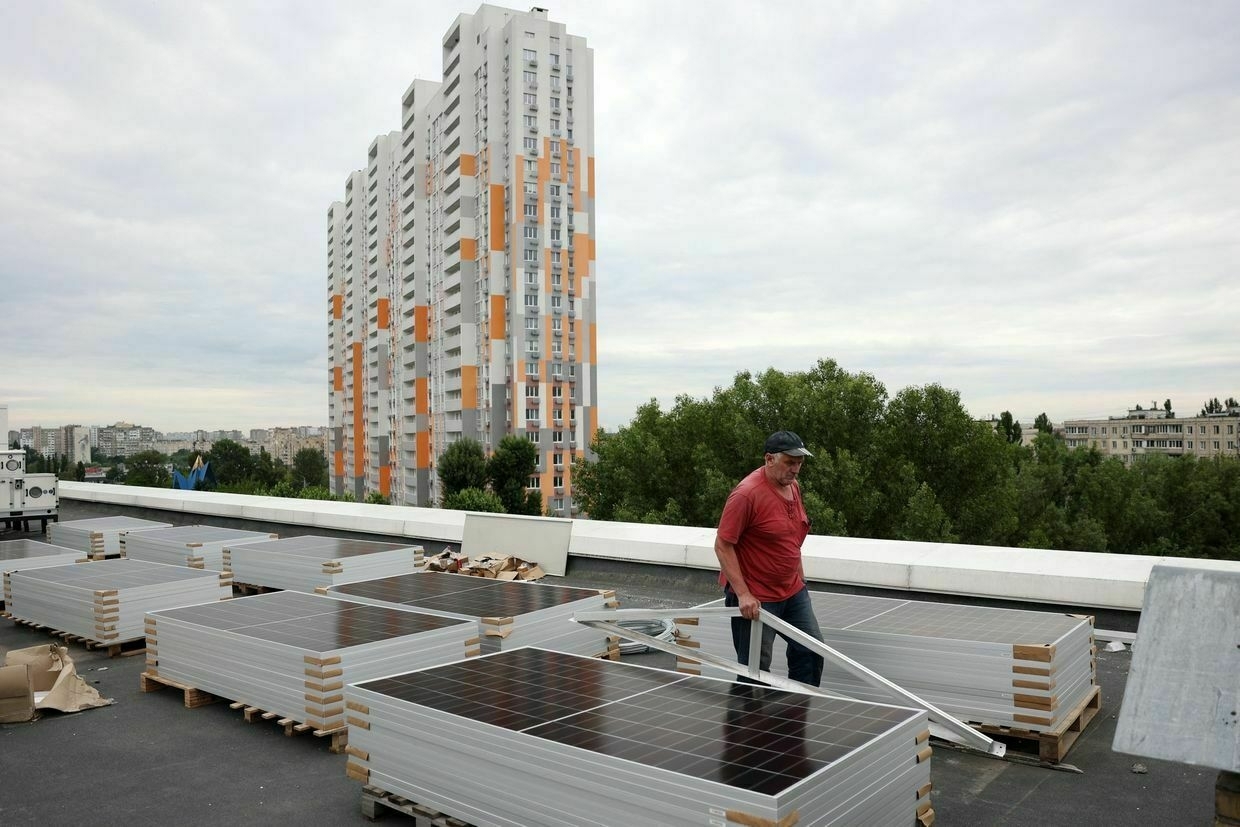 Subscribe to the NewsletterUkraine Business Roundup
Subscribe to the NewsletterUkraine Business Roundup<span data-sanitized-id="ukraine-business-roundup-info" data-sanitized-class="ukraineBusinessRoundup__info"></span> <button data-sanitized-id="ukraine-business-roundup-subscribe-btn" data-sanitized-class="ukraineBusinessRoundup__form_button"> <span data-sanitized-class="ukraineBusinessRoundup__form_label">Subscribe</span> </button> </div>Horror in Moscow: New Ukrainian special forces operation in Crimea and Russian offensive fails
More empty threats from Washington, more deadly bombs from Russia
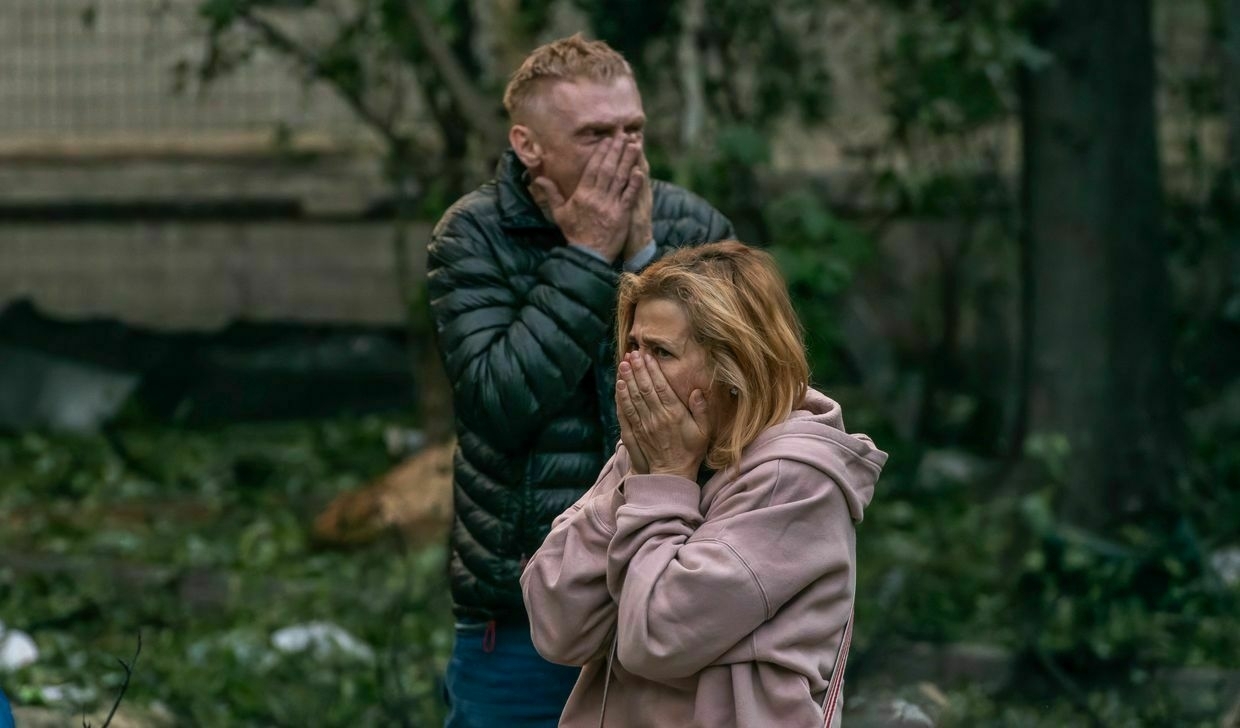
The ongoing and escalating slaughter of Ukrainian civilians depends on two preconditions: Moscow’s determination to erase Ukraine, and the tacit permission it receives from America and Europe.
On Monday, a Russian missile tore through a residential building in Kyiv, leaving at least six civilians dead and over a dozen wounded — including women and children pulled from the rubble in the early hours. “This is what happens when the U.S. withholds air defenses because it doesn’t want to upset the killers in the Kremlin,” remarked Yaroslav Trofimov, Ukrainian-born American journalist, in a post on X.
Russia commits these war crimes, but the dithering of the Free World has let murderous aggression go unpunished for decades. The cost of empty threats from Washington, Berlin, and Paris is measured in lives lost in Kyiv, Kharkiv, and Odesa. If that doesn’t weigh on our collective Western conscience, then we’re not just deluded. We’re complicit.
“While all eyes are on the Middle East, people are dying in Kyiv as Russia bombs Ukraine every day,” EU’s chief diplomat, Kaja Kallas, grimly observed. Between Israel’s first strike on Tehran’s military leadership and American B-2 bombers dropping bunker busters on nuclear sites, Moscow hit Kyiv with its deadliest attack since 2022 — 472 aerial weapons overnight, including nearly 280 Shahed drones. Thirty civilians were killed. One hundred seventy-two injured.
A recent UN report finds that “97% of civilian casualties occurred in areas under the control of the Government of Ukraine.” That’s diplomatic-speak for: Russia targets civilians deliberately, systematically, and relentlessly. No thoughts or prayers will bring back 4-month-old Tymofii Haidarzhi, who never got to say his first word.
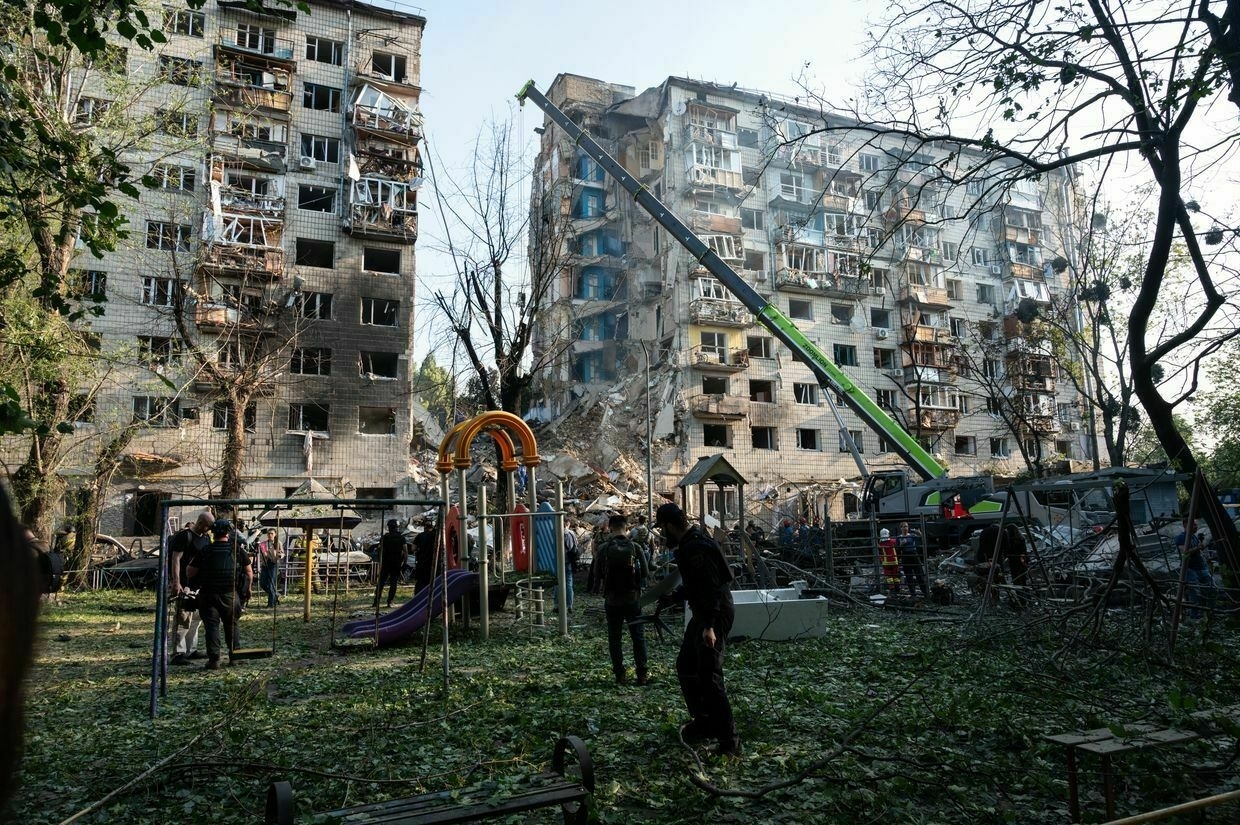
A view of a residential building damaged by a Russian attack in Kyiv, Ukraine, on June 17, 2025. (Danylo Antoniuk / Anadolu via Getty Images) 
Residents evacuate a damaged apartment building after an overnight drone and missile attack in Kyiv, Ukraine, on June 17, 2025. (Vlada Liberova / Libkos / Getty Images) When America flinches — issuing threats to Moscow it won’t enforce and promises to Ukraine it won’t keep — this kind of weakness destroys all prospects of peace and prolongs the carnage and stains our national honor. “Vladimir, stop,” said Donald Trump in April: words of steel followed by deeds of mush.
Even those who like to hide under the rock of “not our war” must understand that this isn’t just repeated incoherence — it’s the erosion of American credibility at lightspeed. And when our enemies no longer believe our words, they stop respecting American power.
The U.S. president signaled frustration with Russia’s war-making on April 24th — then promptly declined to support congressional secondary sanctions. Reports suggest the administration is quietly trying to dilute a bipartisan bill meant to choke off Russia’s oil profits and has now blocked European efforts to tighten the G7 price cap.
Russia targets civilians deliberately, systematically, and relentlessly.
Then came the infamous "two weeks" deadlines. On April 24th, May 19th, and again on May 28th, Trump repeated the same hollow threat. Peter Dickinson rightly called "two weeks" a shorthand for "too weak."
And astonishingly, just 14 days after the latest ultimatum, instead of delivering consequences to Moscow, Trump’s Defense Secretary, Pete Hegseth, revealed the plans to slash U.S. military aid to Ukraine in the next defense budget. Fear us — or else we’ll retreat. Is that really the message America wants to send?
To add insult to injury, on June 12th, the State Department issued a tone-deaf press release celebrating "Russia Day." While Ukrainians buried their dead, Washington congratulated the country doing the killing. At the G7, Trump was effectively lobbying for Putin’s rehabilitation — lamenting Russia’s expulsion from the G8, as if the invasion of a sovereign neighbor were a minor diplomatic hiccup. One could almost hear the laughter — and the champagne corks popping— in the Kremlin.
This isn’t about party. It's about a pattern. In 2012, President Obama drew a bright red line in Syria. Assad crossed it, and America blinked. But let’s be honest, this era-defining foreign policy misstep didn’t happen in a vacuum. In 2008, Russian tanks rolled across a sovereign border and occupied Georgian territory. The White House responded with handwringing and hollow statements — completely incommensurate with the gravity of the moment. A territory was effectively annexed, and the precedent was set. Moscow learned that every act of overt aggression would be met with deep concern, not deep strikes. In 2014, Russia’s war on Ukraine began.
Thankfully, there’s another model of pairing rhetoric with resolve instead of regret. Ronald Reagan didn’t bluff. He followed through — methodically, consistently, and with purpose.
He called the Soviet Union an "evil empire"— not as a slogan, but as a signal. Then he rebuilt America’s military, strengthened our alliances, and confronted Soviet aggression wherever it appeared — from Poland to Afghanistan to Libya. Reagan didn’t posture. He didn’t just issue threats—he made them real. And he understood a lesson today’s leaders seem to have forgotten: deterrence is capability plus credibility.
That’s the difference. Peace through strength isn’t a bumper sticker. It’s a doctrine grounded in history. And when powerful nations abandon it, the inevitable result is dishonor through weakness. The next time the U.S. president draws a red line or tweets a threat, it had better mean something.
‘Dead and wounded everywhere’ — at least 160 casualties as Russia strikes Dnipro with ballistic missiles, hits civilian trainRussia launched a deadly missile attack on the Ukrainian city of Dnipro on June 24, striking civilian infrastructure and a passenger train, local officials reported.The Kyiv IndependentAnna Fratsyvir
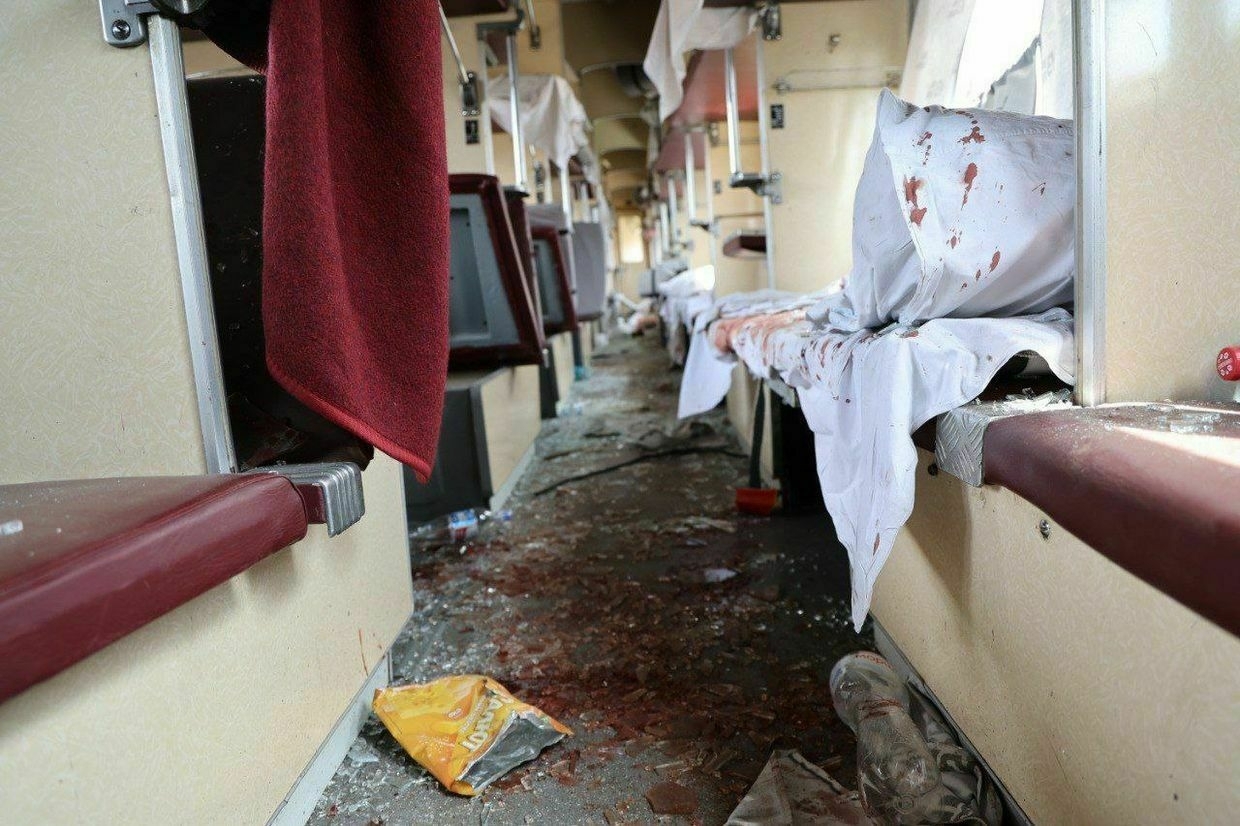
UK to fund joint drone production with Ukraine
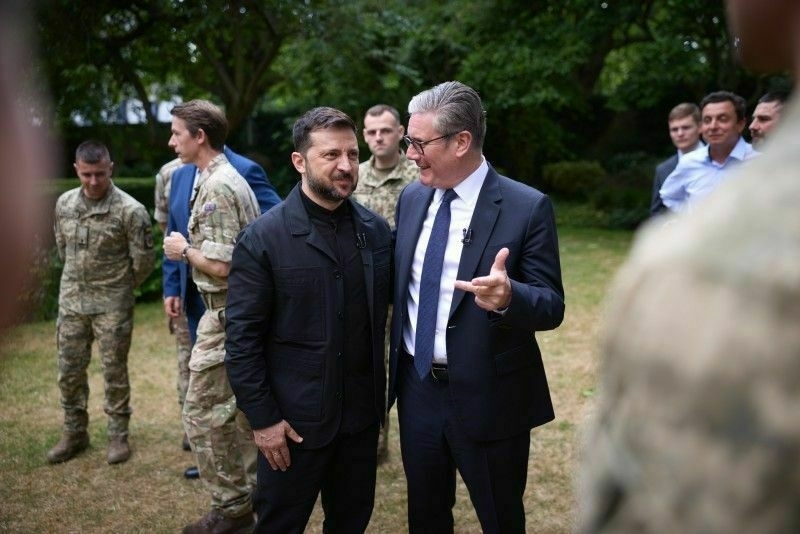
Ukraine and the United Kingdom have reached an agreement to jointly produce drones, Defense Minister Rustem Umerov announced on June 24.
Britain will finance the procurement of Ukrainian-designed drones manufactured in the UK, he added.
The deal comes as Ukraine has rapidly developed its drone capabilities since 2022, evolving from modifying commercial aircraft to producing military UAVs, attack drones, and reconnaissance systems at scale.
The agreement was reached between President Volodymyr Zelensky and British Prime Minister Keir Starmer, Umerov said.
Under the three-year program, the UK will finance the procurement of a wide range of Ukrainian drones to be produced by British defense companies.
“This will enable British defense companies to rapidly design and produce state-of-the-art drones on a large scale,” Umerov wrote on Facebook.
According to Umerov, all production will be directed to meet the needs of Ukraine’s Defense Forces. After the war ends, the UK and Ukraine will share the produced drones between themselves.
The initiative will support the scaling of advanced technologies, increased drone production, and the integration of Ukrainian and British defense industries, Ukraine’s defense minister wrote.
Ukraine has ramped up domestic drone production over the recent years of its war with Russia, as well as the development of new missiles.
Various aerial, naval, and ground drones have been developed and often successfully used for reconnaissance, combat, and other tasks throughout the full-scale war with Russia.
In January 2025, Umerov announced that the United Kingdom would finance the production of air defense systems and long-range weapons in Ukraine.
Investigation: How Russia prepares its strategic missile plant for ‘eternal war’
Key findings:
- Despite international sanctions, Russia's strategic missile plant was able to import complex machinery to dramatically increase missile production.
- The Kyiv Independent has identified the equipment supplied to the plant, as well as the supply chains, mostly from China.
- We located the plant's new premises, built to house the new machinery.
- We obtained a document confirming that the plant received an order to produce intercontinental missiles capable of reaching the U.S. shortly after Russia's full-scale invasion of Ukraine.
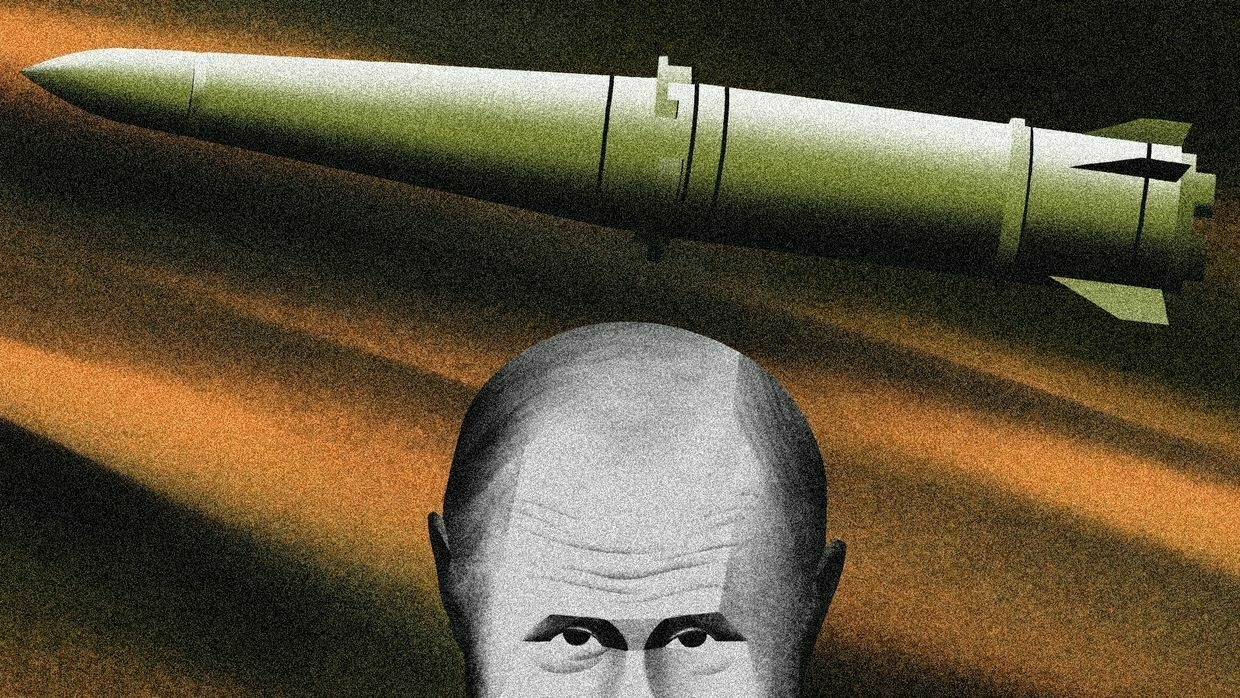
As Russia wages its full-scale war against Ukraine, one of its most important missile plants is quietly expanding, bypassing international sanctions.
The Votkinsk Plant, also known as the Votkinskiy Plant, — a strategic, state-owned facility serving Russia’s nuclear forces — has hired thousands of new workers, added new buildings, and brought in advanced machinery to significantly increase its missile production.
Ukrainians have felt it firsthand. Iskander-M ballistic missiles, with a range of up to 500 kilometers and assembled at Votkinsk, have been increasingly hitting Kyiv and other cities.
But the plant’s core mission is even more threatening: manufacturing intercontinental ballistic missiles (ICBMs) capable of delivering nuclear warheads across continents.
Among them are the Yars and Bulava — missiles designed to reach the United States — and likely the Oreshnik, reportedly capable of striking anywhere in Europe.
According to Ukraine’s military intelligence agency (known by its Ukrainian acronym HUR), Russia is not just replacing missiles lost in its current war with Ukraine — it is stockpiling for a prolonged conflict.
“They are preparing for a long war,” a senior official from Ukraine’s HUR told the Kyiv Independent. “According to our data, Russia is building up a stockpile of missiles of various types.”
All of this expansion is occurring despite sweeping international sanctions against the plant and the Russian missile industry. The Votkinsk Plant is officially blacklisted as an entity by the U.S. and its allies, and selling any materials, machinery, and microelectronics to Russia that are required to build missiles is banned.
Yet, production continues to rise.
The Kyiv Independent examined the internal business operations of the Votkinsk Plant to find out how the sanctioned arms manufacturer has managed to expand.
The key finding: Russia hasn’t done so on its own.
Companies in China, Taiwan, and Belarus — countries that didn’t join Western sanctions against Moscow over its war in Ukraine — supplied the strategic Russian missile factory with critical manufacturing equipment funneled through private Russian intermediaries.
The Kyiv Independent identified millions worth of machinery supplied to the Votkinsk plant this way.
These shipments ultimately strengthened one of Russia’s most dangerous military production sites.
The growth of the missile stockpile produced by the Votkinsk Plant“Putin's policy is our policy,” read the banners held by Votkinsk Plant's employees on April 5, 2022, at a special rally organized by the plant in support of Russia's war against Ukraine. Russian President Vladimir Putin had announced his country was launching a full-scale invasion of Ukraine on Feb. 24, 2022.
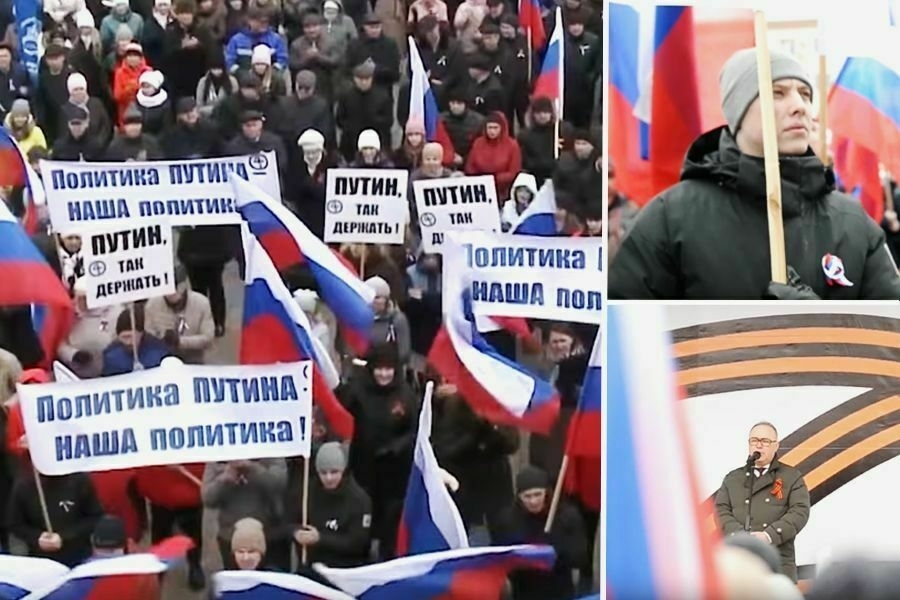
Employees and the director general of the Votkinsk Plant, Igor Churbanov, at a rally in support of Russia's war against Ukraine on April 5, 2022. (Screenshots from a Russian television segment titled “Votkinsk Plant”) They likely didn’t yet realize how right they were.
Full-scale war has been a boon for Votkinsk: Since its start, the plant has expanded and increased output.
In 2024, Russia produced nearly three times more Iskander-M ballistic missiles than in 2023 — 700 compared to 250, according to RUSI, a London-based defense and security think tank.
Ukraine's military intelligence agency, HUR, agrees with this assessment, its representatives told the Kyiv Independent.
As production at the plant grows, so do the attacks.
Russia has been striking Ukraine with Iskander-Ms and similar missiles 4.5 times more in 2024 than the year before — 245 strikes in 2024 compared to around 55 in 2023. The increase is only partly explained by the supply of North Korean missiles to Russia.
Moscow has already launched more than 180 of those missiles so far this year.
It was with Iskander-type ballistic missiles that Russia launched its bloodiest attacks on Ukrainian cities far from the front line in 2025.
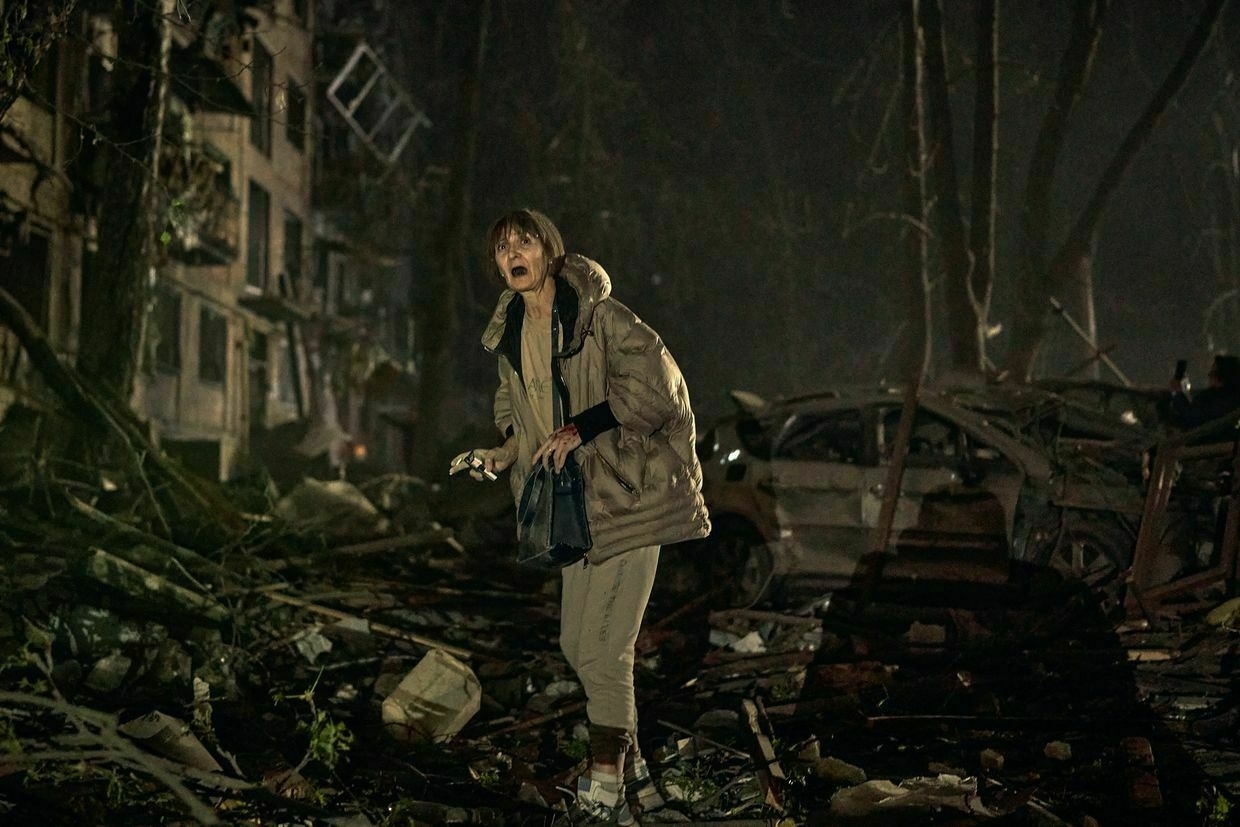
The aftermath of a missile strike on a residential building in Kyiv, Ukraine, on April 24, 2025. (Kostiantyn Liberov / Libkos / Getty Images) 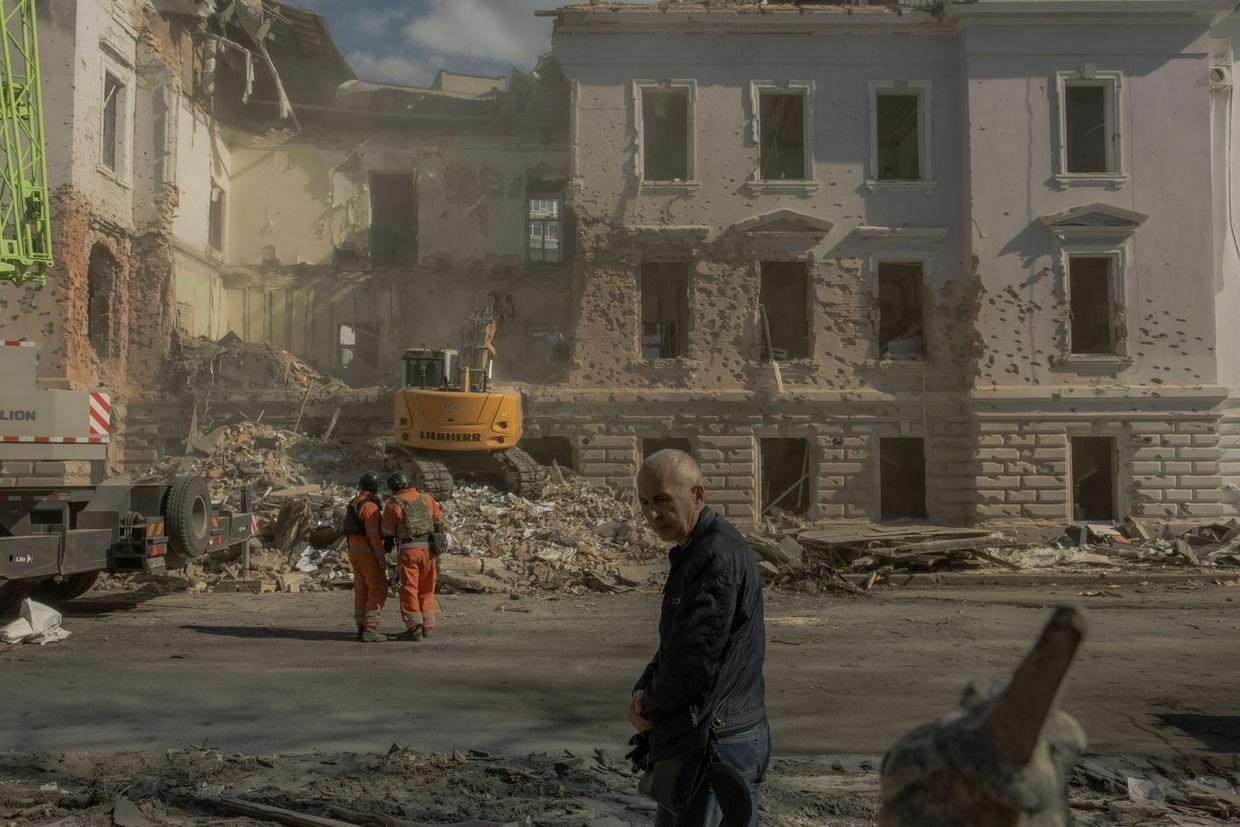
Ukrainian emergency workers search through the rubble after a missile attack in Sumy, northeastern Ukraine, on April 14, 2025. (Roman Pilipey / AFP via Getty Images) 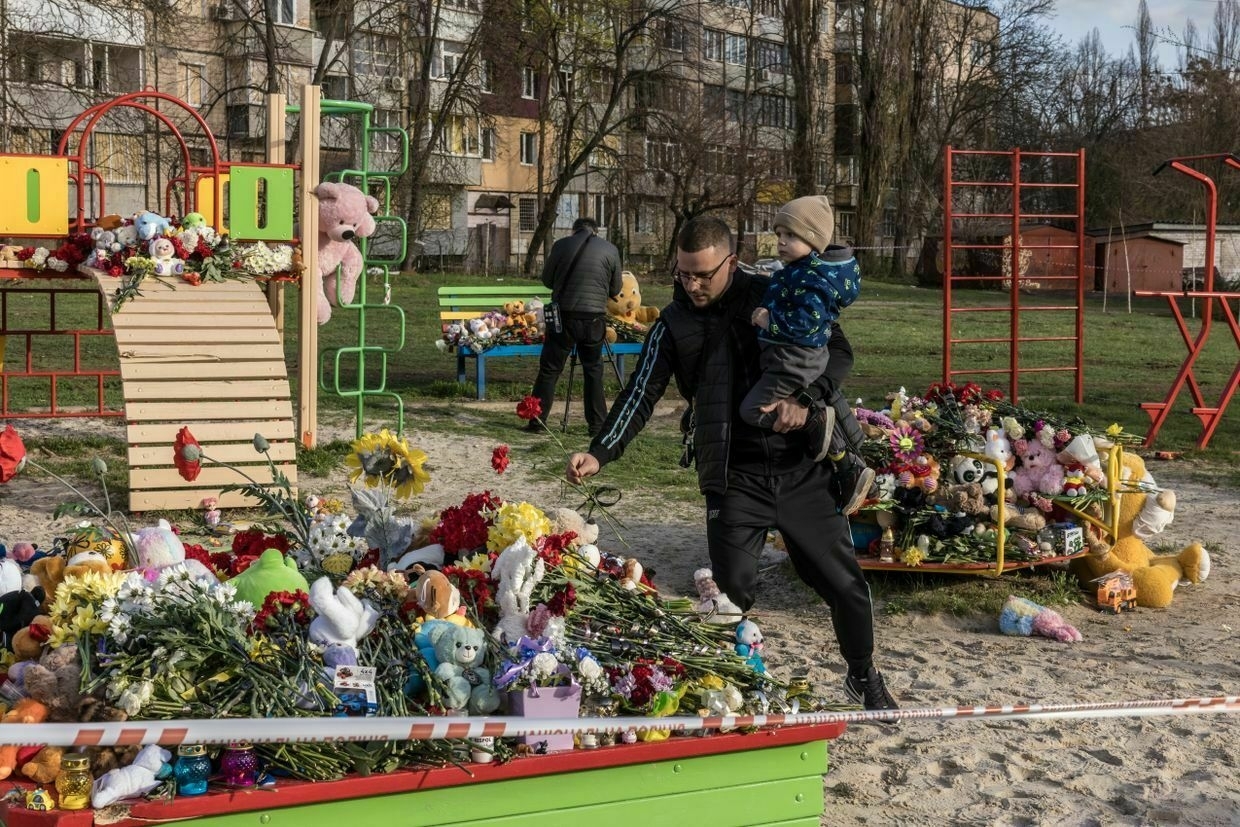
A man with a boy lays flowers at a playground to commemorate victims of a Russian missile strike in Kryvyi Rih, Ukraine, on April 5, 2025. (Oksana Parafeniuk / The Washington Post via Getty Images) 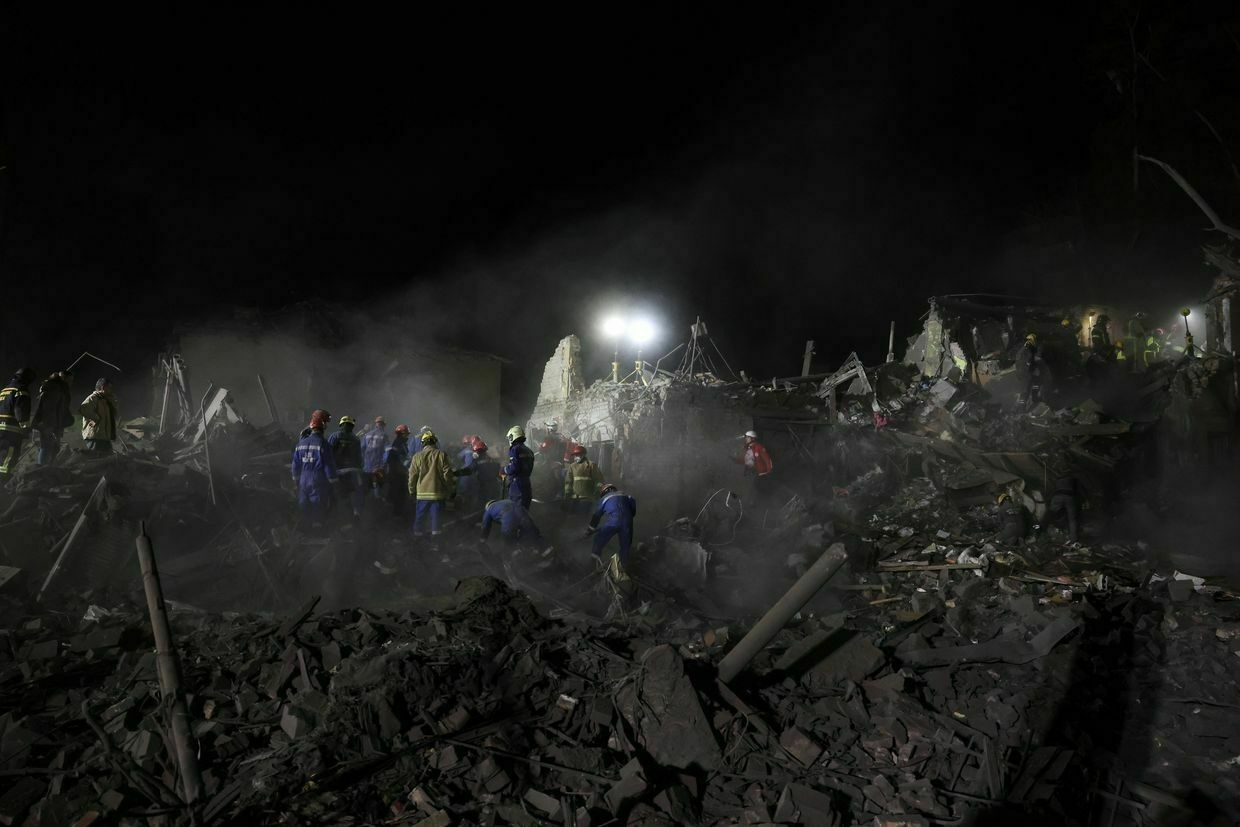
Ukrainian rescuers operate at the site of a Russian missile attack in Kyiv, Ukraine, on April 24, 2025. (Stringer / AFP via Getty Images) But even with the intensified attacks, Russia is far from using all the Iskander missiles it’s now producing. The considerable gap between production and the number of missiles used in strikes shows that Russia is building a stockpile.
According to the HUR intelligence, provided to the Kyiv Independent in early June, Russia managed to stockpile some 600 Iskander-M ballistic missiles and another 300 Iskander-K cruise missiles. At the current pace of attacks, it’s a two-year stock.
But the Votkinsk Plant has another line of production: intercontinental missiles.
The Kyiv Independent was unable to find out the exact number of intercontinental missiles currently being produced at the plant. However, a document uncovered by the Kyiv Independent did reveal some traces that Russia was investing in this arsenal of intercontinental missile production.
According to it, one month into the full-scale war against Ukraine, on March 31, 2022 — around the time of Russia’s first defeat near Kyiv — the Russian Defense Ministry ordered the Votkinsk Plant to produce parts for Bulava intercontinental missiles, which are deployed on nuclear submarines, for over $13 million. The plant was to fulfill the contract from 2022 to 2024.
The order is bound to be one of many. Most Russian defense contracts are classified.
A large plant becomes even largerThe Kyiv Independent found that Russian authorities planned the expansion of the Votkinsk missile hub in 2022, after the start of the full-scale invasion of Ukraine.
The process began the following year, from 2023 to 2024, during which the arms manufacturer built new premises, renovated existing ones, hired additional staff, and procured new equipment for missile production.
Using satellite imagery provided by Planet Labs, we identified the location of the plant’s largest new facility: a sheet metal fabrication shop.
In 2023, the site was bare ground; by 2024, a new workshop had risen to house additional machinery.
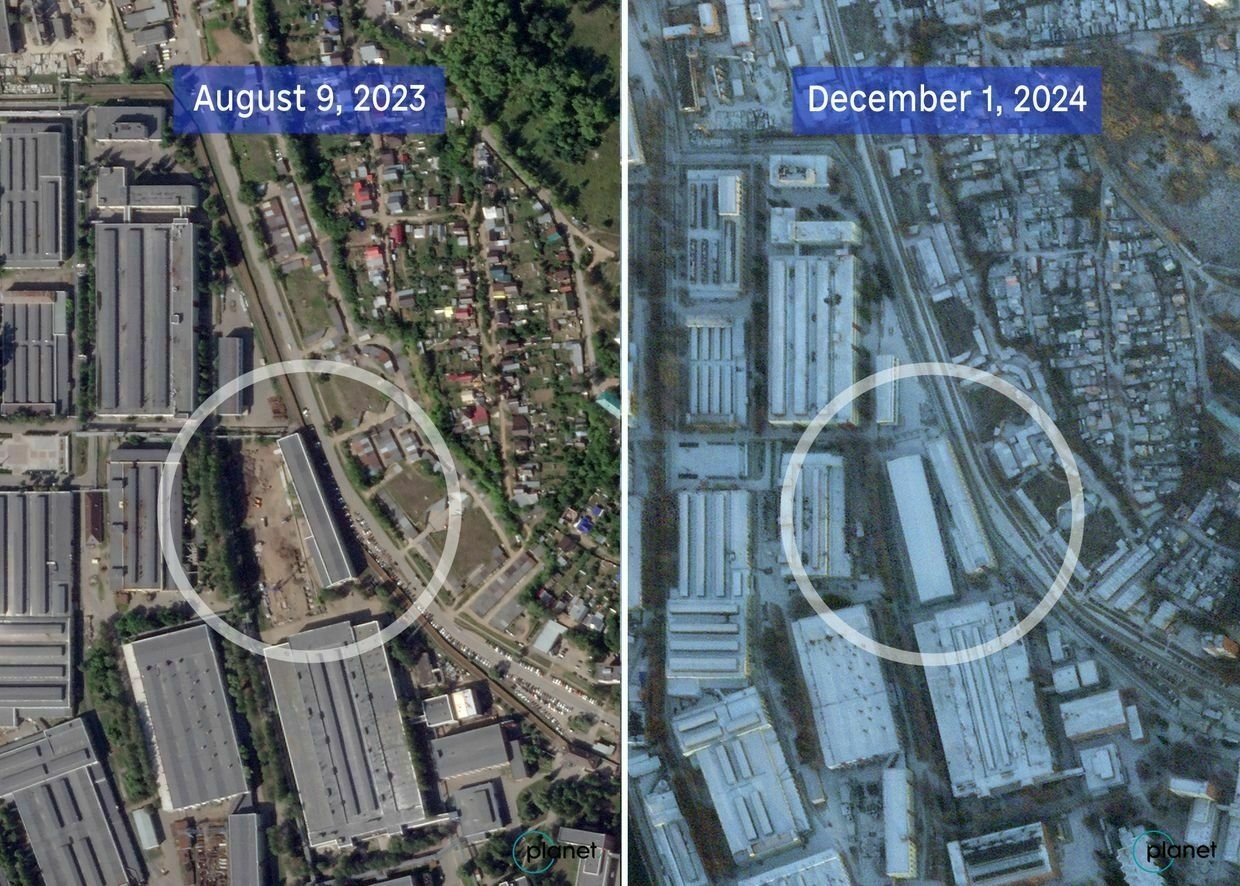
Satellite imagery shows a new building constructed at the Votkinsk missile plant in 2024. (Planet Labs PBC) 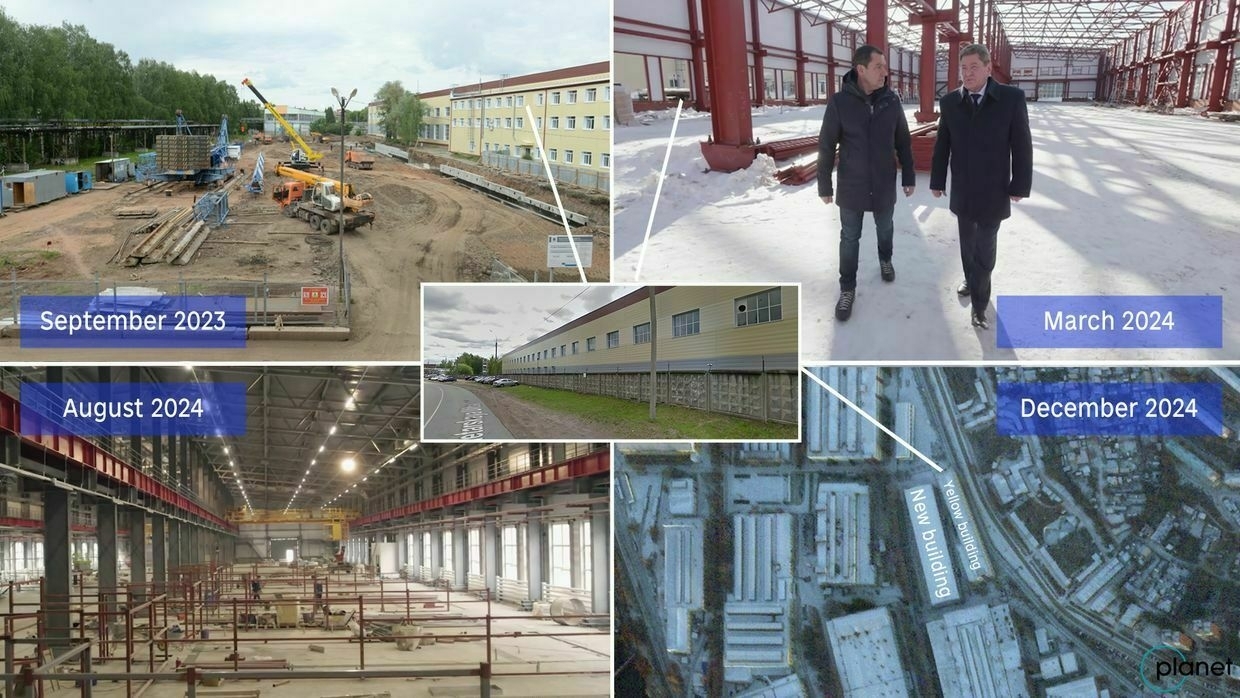
Photos of the new shop at the Votkinsk missile plant, constructed in 2024, and the satellite imagery showing its location. (Votkinsk Plant, Zvezda TV channel, Planet Labs PBC, Google Street View). The plant’s management announced the construction of four additional smaller buildings. At least one of them is complete, and we were able to locate it.
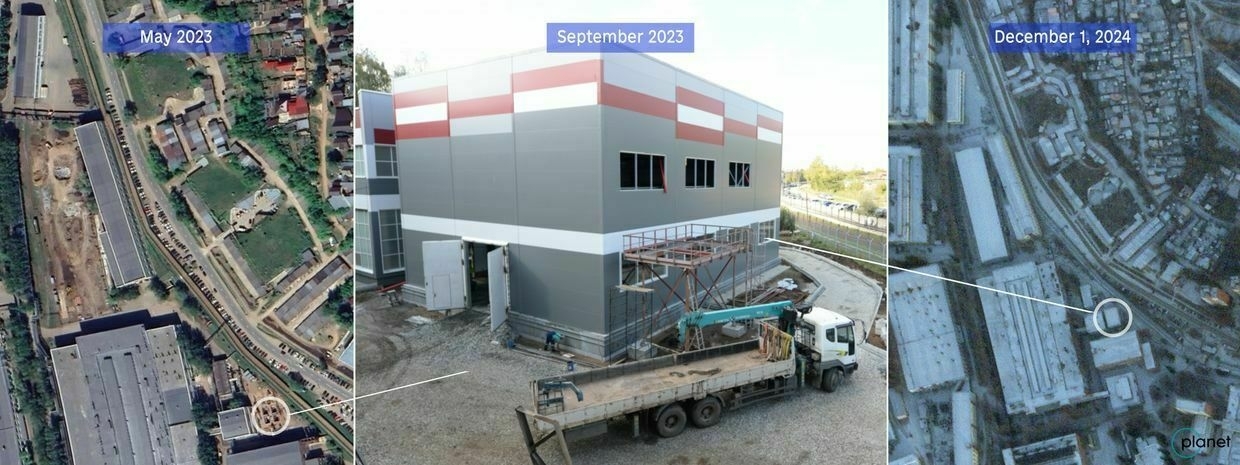
Satellite imagery and photos of another new building, added to the Votkinsk Plant in 2024. (Google Earth, Votkinsk Plant, Planet Labs PBC) Simultaneously, the missile producer launched a recruitment drive, hiring an additional 2,500 employees during the first 2.5 years of Russia’s full-scale war, according to the plant’s director general.
The total number of employees now exceeds 12,000.
The search for workers continues. As of May 2025, the plant had more than 100 job openings, seeking CNC machine operators, engineers, electromechanics, milling and lathe operators, fitters, and other workers.
But even with more staff and expanded facilities, the plant would not have been able to increase missile output without acquiring new equipment. The Votkinsk Plant ordered a large volume of new machinery for metal processing — a key component of missile production.
According to documents reviewed by the Kyiv Independent, most equipment contracts were signed in the first half of 2023. Given the time needed for manufacturing or importing the machinery, most of it arrived at the plant in 2024.
In addition to Russian-made equipment, the sanctioned facility imported substantial quantities of foreign machine tools.
The Kyiv Independent identified more than 10 contracts signed by the Votkinsk Plant in 2023 for the purchase of dozens of imported metal-processing machines. Their total value exceeds $11 million, which only represents a portion of the plant’s broader investment in expansion.
The plant allegedly bought a total of 7,000 units of new equipment as part of the post-invasion expansion plan — according to the figure the plant’s management shared with Russian media.
Documents reviewed by the Kyiv Independent suggest that this number includes not only computer-controlled milling and lathe machines, but also metal heating furnaces, stamping presses, and a range of other tools and devices.
The purchases were financed through a state subsidy provided by the Russian government. Russia’s Industry and Trade Ministry signed an agreement to fund the plant’s procurement on Dec. 26, 2022 — nine months after the Russian army failed in its attempt to capture Kyiv, when it became clear that the war wouldn’t be a quick one.
Chinese and Taiwanese equipment for the production of Russian missilesThe sanctioned plant used intermediaries — little-known Russian private companies, some specializing in machine tools — to purchase imported equipment. This method is commonly employed by Russian arms manufacturers to hide the final buyer and ease the transaction for the supplier.
Imported equipment came primarily from mainland China. Of the 10 contracts we identified, eight involved products supplied from China. In one of them, the goods came from a Chinese factory owned by a Taiwanese manufacturer.
In May 2023, the Votkinsk Plant signed a $2.5 million contract with the Russian firm Ural Machine Tool Company, which is engaged in the wholesale trade of machine tools. The company was tasked with sourcing and supplying the plant with two models of imported equipment.
The first model is a CNC milling center for metal processing branded by Taiwanese company Ecom Precision Machinery Co., which uses the Japanese Fanuc CNC system.
Eight months later, in January 2024, the equipment was delivered to the plant, according to Russian documents obtained by the Kyiv Independent.
Reviewing Russian customs records, we found that the Taiwan-branded equipment intended for the missile plant was shipped to Russia by a Chinese company named Zhangzhou Donggang Precision Machinery Company, also known as Zhangzhou Dong Iron Precision Machinery Co.
This company operates as a subsidiary of the Taiwanese manufacturer Ecom — effectively, its Chinese production facility.
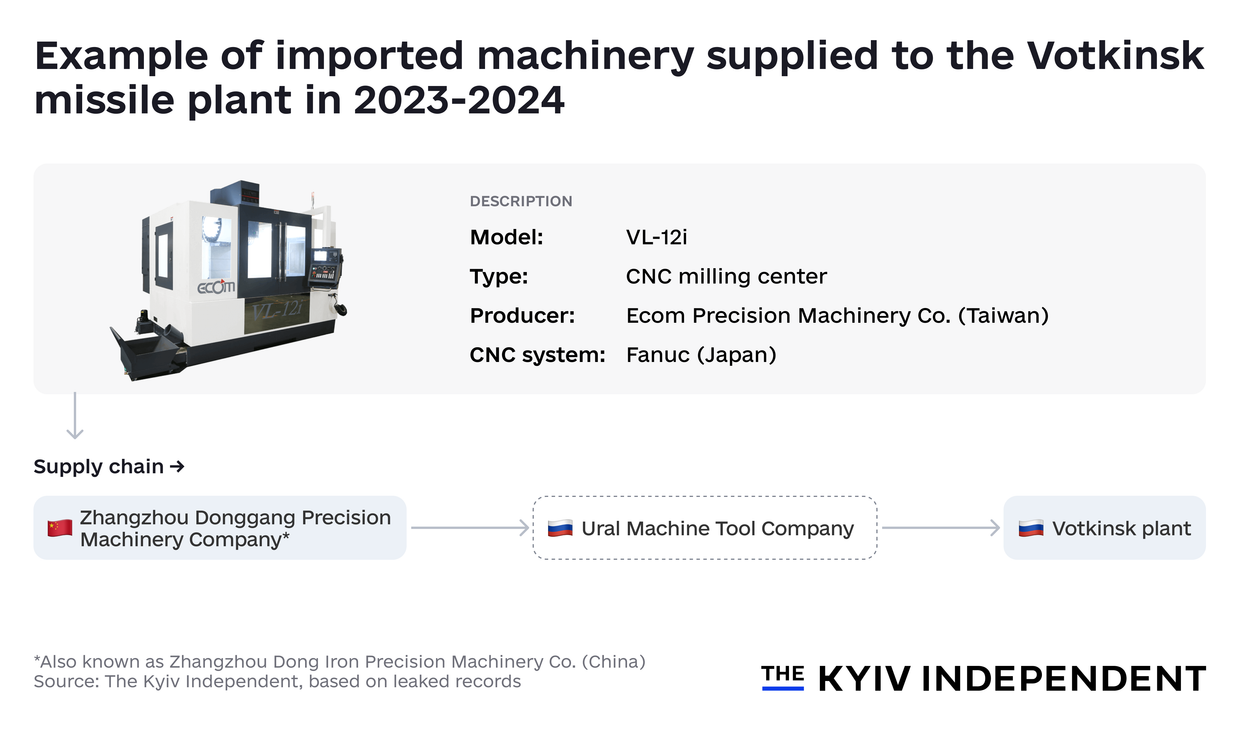
Example of imported machinery supplied to the Votkinsk missile plant in 2023-2024. (Lisa Kukharska/The Kyiv Independent) With assistance from the Organized Crime and Corruption Reporting Project (OCCRP), we identified the key figure behind the producer.
Ecom is a private company linked to Taiwanese businessman Lin Tz-ming (or Lin Ziming, following mainland Chinese romanization). He graduated from the University of California and previously worked in mainland China, according to media reports. Ecom was founded by his father in 1976.
We reached out to both the Taiwanese manufacturer and its Chinese subsidiary for comment but received no response.
The second model ordered by the missile plant is a CNC lathe for metal processing, manufactured by the Chinese producer WMT CNC Industrial Co.
According to the contract, Ural Machine Tool Company was to supply the plant with eight numerically controlled lathes.
Additionally, around the same time in May 2023, the Votkinsk Plant ordered nine more similar machines from WMT CNC through the Russian First Construction Company under a contract valued at nearly $2 million.
Customs records indicate that WMT CNC repeatedly shipped these machines and other equipment to Russian trading firms that supplied them to the Votkinsk Plant.
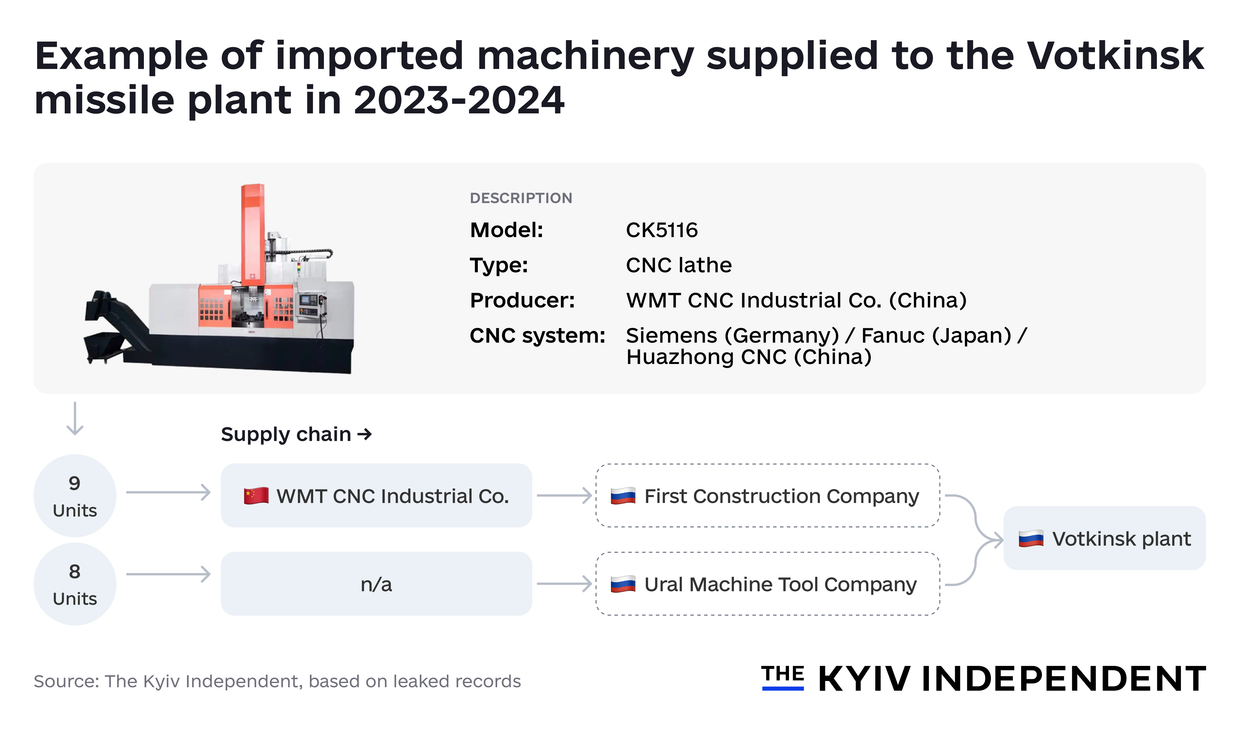
Example of imported machinery supplied to the Votkinsk missile plant in 2023-2024. (Lisa Kukharska/The Kyiv Independent) WMT CNC Industrial is also a private company, primarily owned by Chinese businessman, Gui Shuanglong.
Neither the Chinese manufacturer nor its Russian partners, Ural Machine Tool Company and First Construction Company, responded to written requests for comment.
The Kyiv Independent identified additional machines and supply chains that brought new missile production equipment to Russia during its war with Ukraine. Beyond several more Chinese machines, the plant has purchased at least one other type of Taiwanese machines, as well as Belarusian equipment.
To explore the details, scroll through the cards.
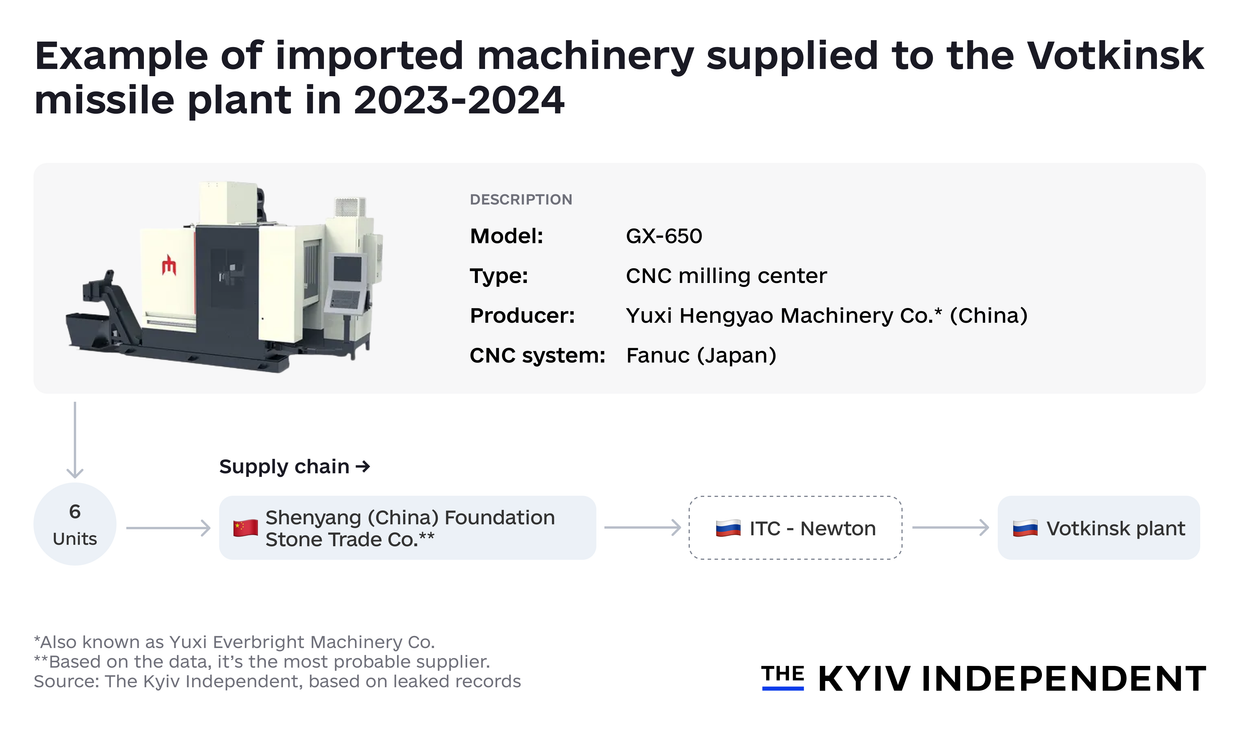
Example of imported machinery supplied to the Votkinsk missile plant in 2023-2024. (Lisa Kukharska/The Kyiv Independent) 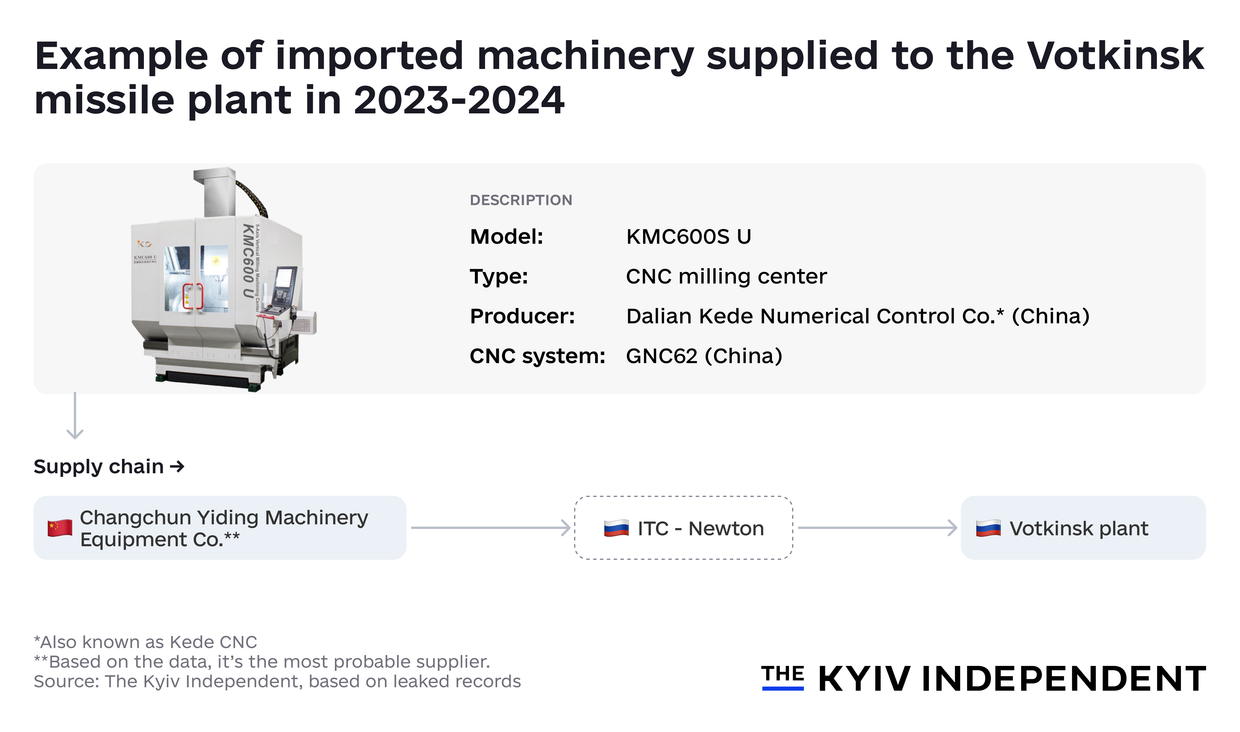
Example of imported machinery supplied to the Votkinsk missile plant in 2023-2024. (Lisa Kukharska/The Kyiv Independent) 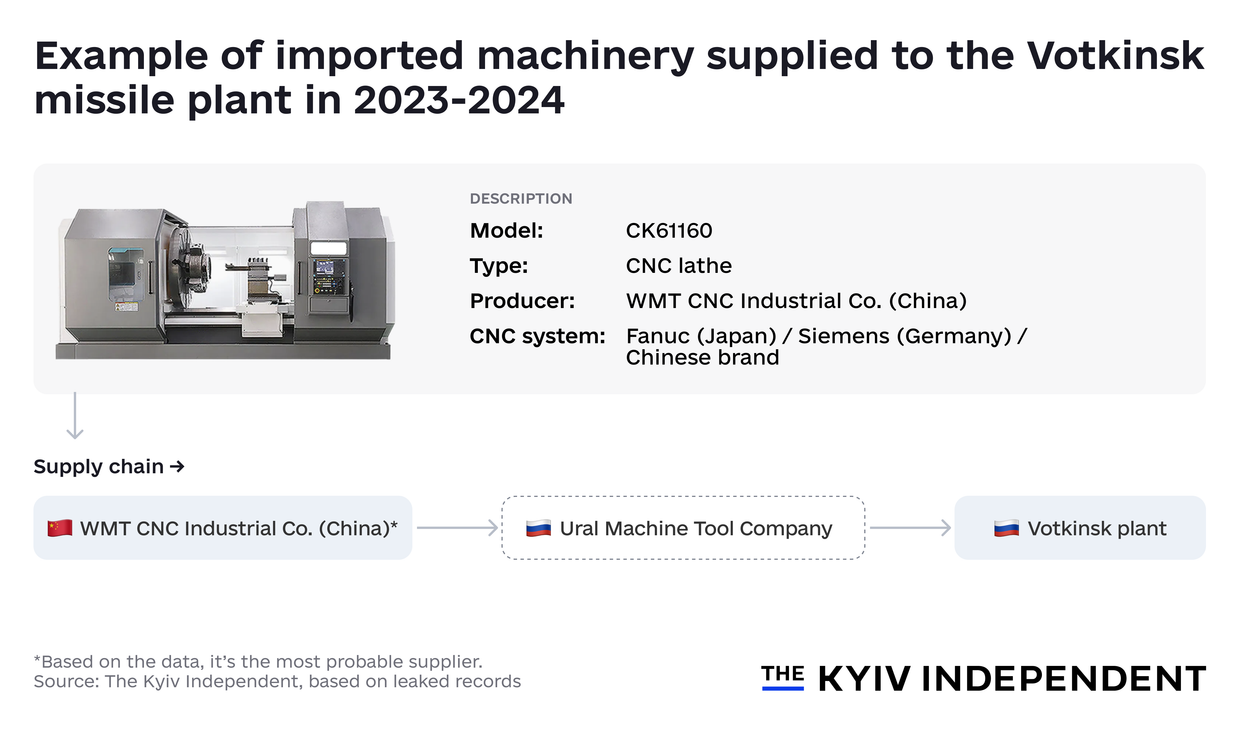
Example of imported machinery supplied to the Votkinsk missile plant in 2023-2024. (Lisa Kukharska/The Kyiv Independent) 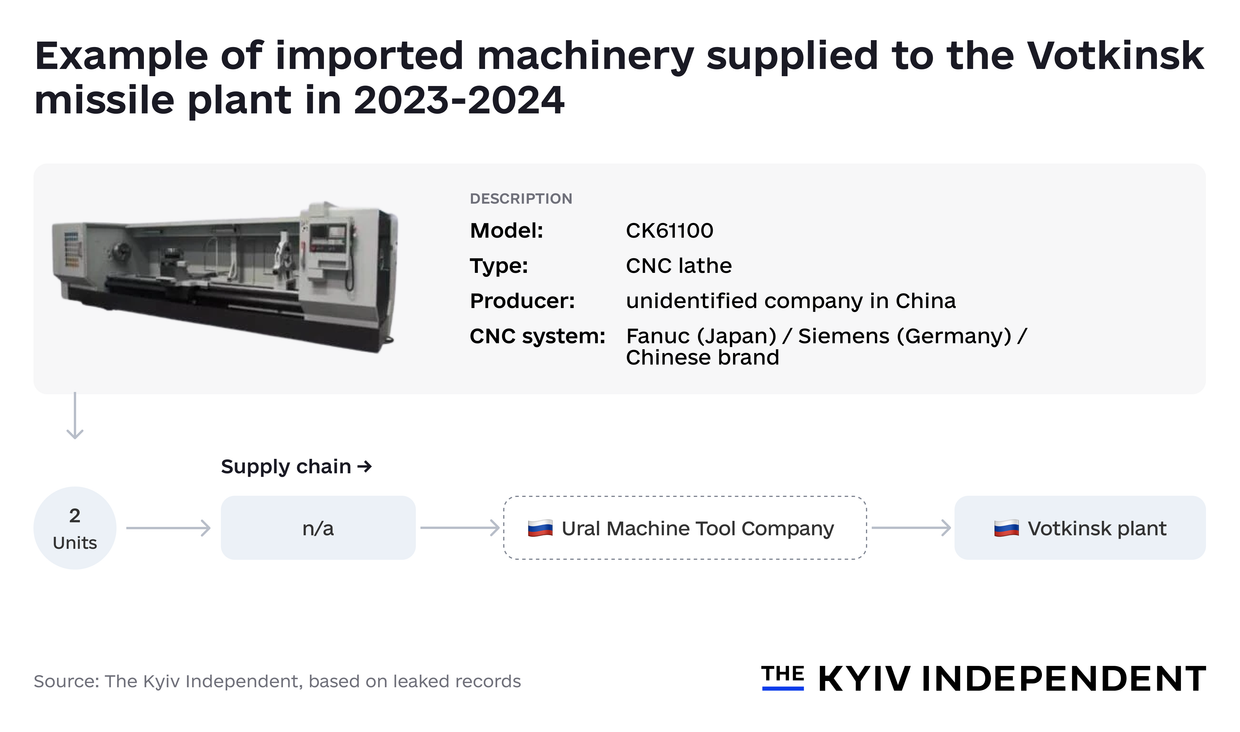
Example of imported machinery supplied to the Votkinsk missile plant in 2023-2024. (Lisa Kukharska/The Kyiv Independent) 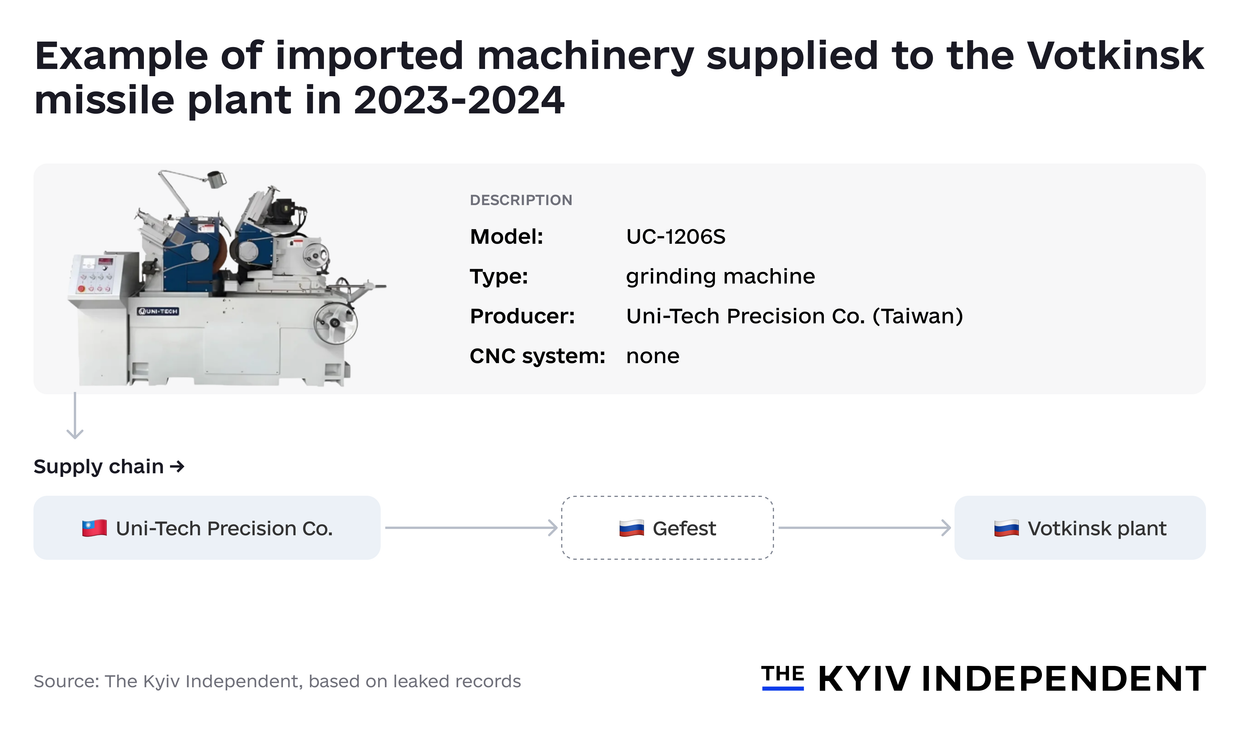
Example of imported machinery supplied to the Votkinsk missile plant in 2023-2024. (Lisa Kukharska/The Kyiv Independent) 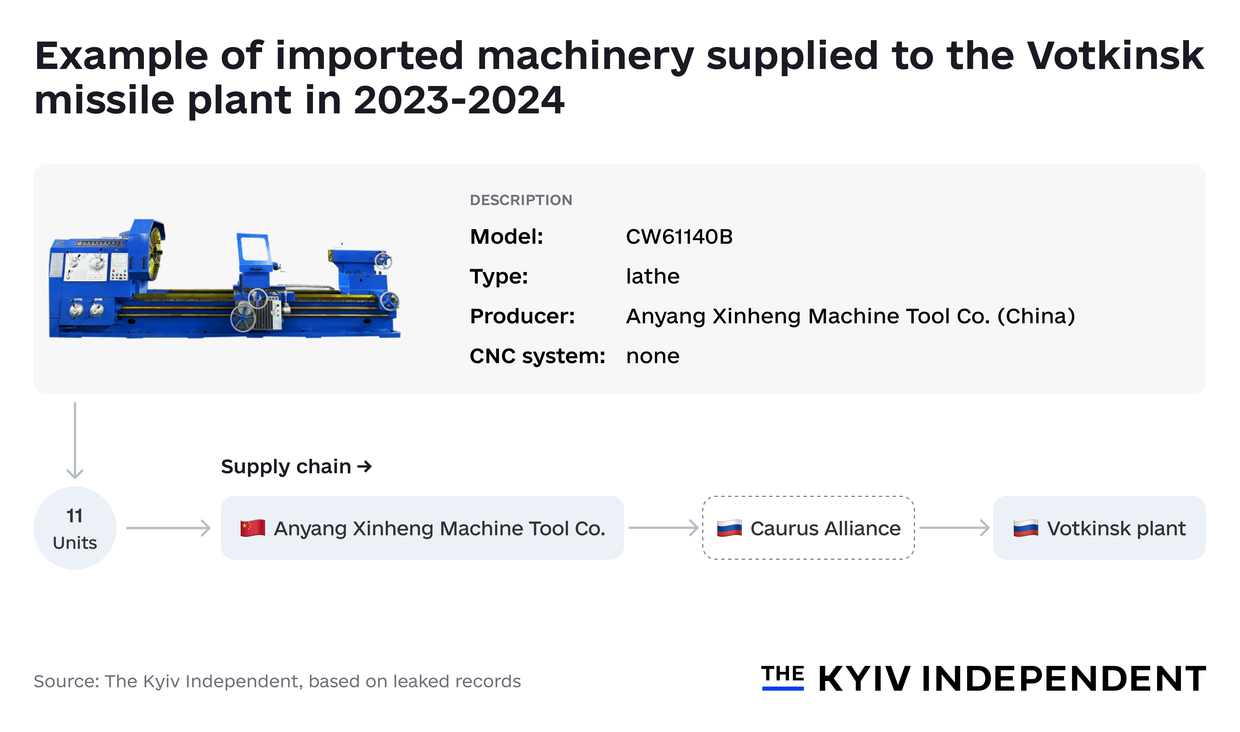
Example of imported machinery supplied to the Votkinsk missile plant in 2023-2024. (Lisa Kukharska/The Kyiv Independent) 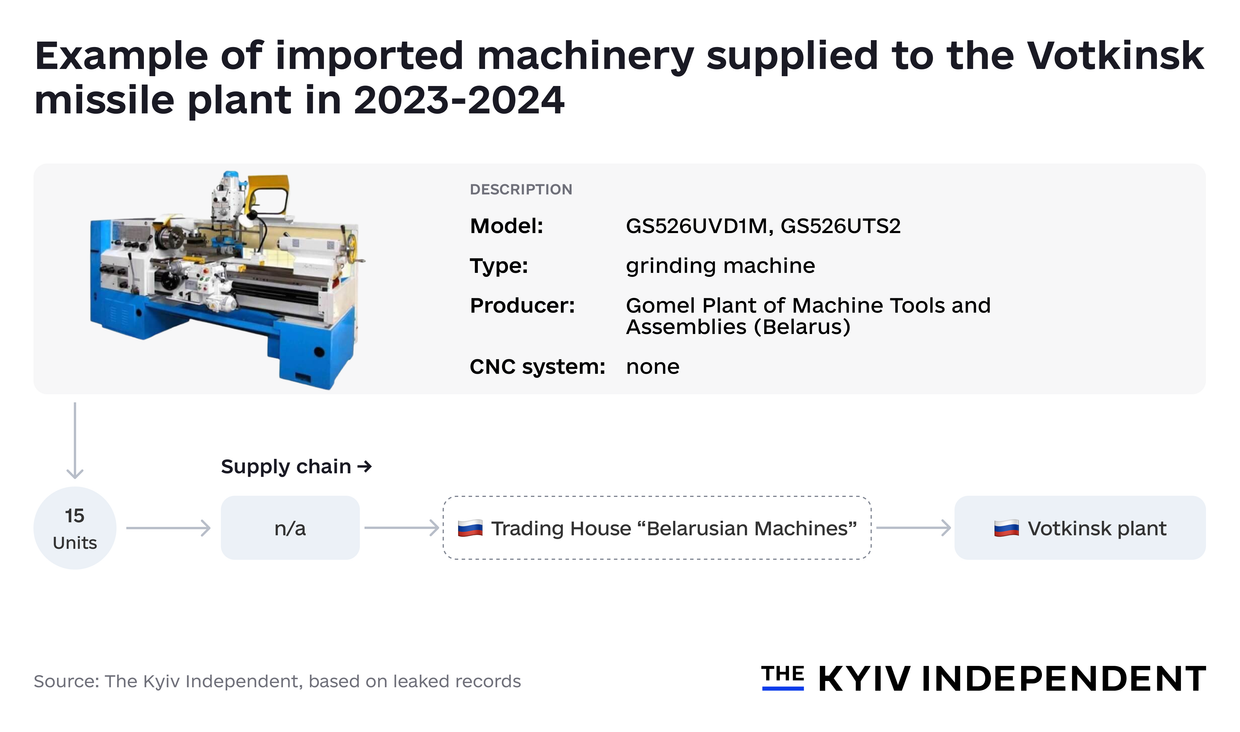
Example of imported machinery supplied to the Votkinsk missile plant in 2023-2024. (Lisa Kukharska/The Kyiv Independent) China provides more than machinesIt is no secret that China is the largest supplier of equipment, electronic components, and materials that Russia seeks for weapons production.
The Kyiv Independent has reviewed the latest non-public report by the Ukrainian think tank Economic Security Council of Ukraine (ESCU) on the production of Iskander missiles, which are assembled at the Votkinsk Plant.
The report examined the supply of titanium, carbon fiber, and missile fuel components for Iskander production in 2024.
“Titanium is used to make the aerodynamic rudders that control a missile at launch, as well as for the body, nozzles, and combustion chambers of the engine,” explained Denys Hutyk, ESCU’s executive director.
The organization’s researchers found that the main flow of titanium products reached the Votkinsk Plant through a supply chain originating in China.
Russia’s largest titanium producer, VSMPO-AVISMA Corporation, operates a subsidiary in Beijing — VSMPO Tirus Beijing Metallic Materials — which imports titanium ore from major Chinese manufacturers.
In addition, the Russian producer purchased primary titanium products through China’s Tianjin Chengan International Trading Company and India’s DCW. It then supplied Russian military plants, including Votkinsk, through a subsidiary trading house in Russia.
None of the companies responded to a written request for comment.
China, along with some other countries, has not imposed sanctions on Russia, leaving local companies to decide individually whether to comply with American and European restrictions.
As a result, despite China’s declared neutrality in the Russian war, both private and state-owned companies there have effectively become a lifeline for Russian arms manufacturers.
Expansion of Russian missile production: How serious is it?Although the current increase in production at the Votkinsk Plant is primarily aimed at enlarging the stockpile of short-range missiles for strikes against Ukraine, the plant's new equipment is universal.
In other words, Russia is expanding its capabilities to produce intercontinental missiles, as well.
"Yars and Bulava, both capable of carrying nuclear warheads, are produced by this enterprise. These missiles are no longer aimed at Ukraine, but at Washington, New York, other American cities, other European cities," says Oleh Katkov, editor-in-chief of the Ukrainian military portal Defense Express.
He adds that missiles contain multiple metal parts, "and the new machines can be used to produce any missile manufactured at this enterprise. In addition, the plant can produce components for other types of missiles assembled at other Russian missile plants."
At the same time, no Russian missile is produced by a single plant. An entire network of enterprises makes different parts of the weapon — its body, guidance systems, and the fuel needed to power it — before it is assembled at a plant like Votkinsk.
In total, more than 10 Russian military enterprises are involved in making an Iskander missile.
The growing number of Russian Iskanders stockpiles and the statistics of attacks mean that Russia has increased the capacity of not only the Votkinsk Plant, but also of other enterprises supplying parts for these missiles.
The growth at Votkinsk is just one part of a wider effort — one that now spans dozens of enterprises and includes both short-range missiles for use in Ukraine and intercontinental systems capable of striking far beyond it.
The buildup shows no sign of slowing — or of being limited to a single war.
Note from the author:
Hey, this is Alisa Yurchenko, the author of this story.
When Russian missiles and drones strike Kyiv and our apartments shake from the blasts, I find some reassurance in knowing that we can name those who are helping Russia ramp up its weapons production to prolong this bloody war.
If you want to support such investigative work, become a member of the Kyiv Independent. Your contributions help us produce investigations like this one.
Trump says Putin called him to offer help with Iran
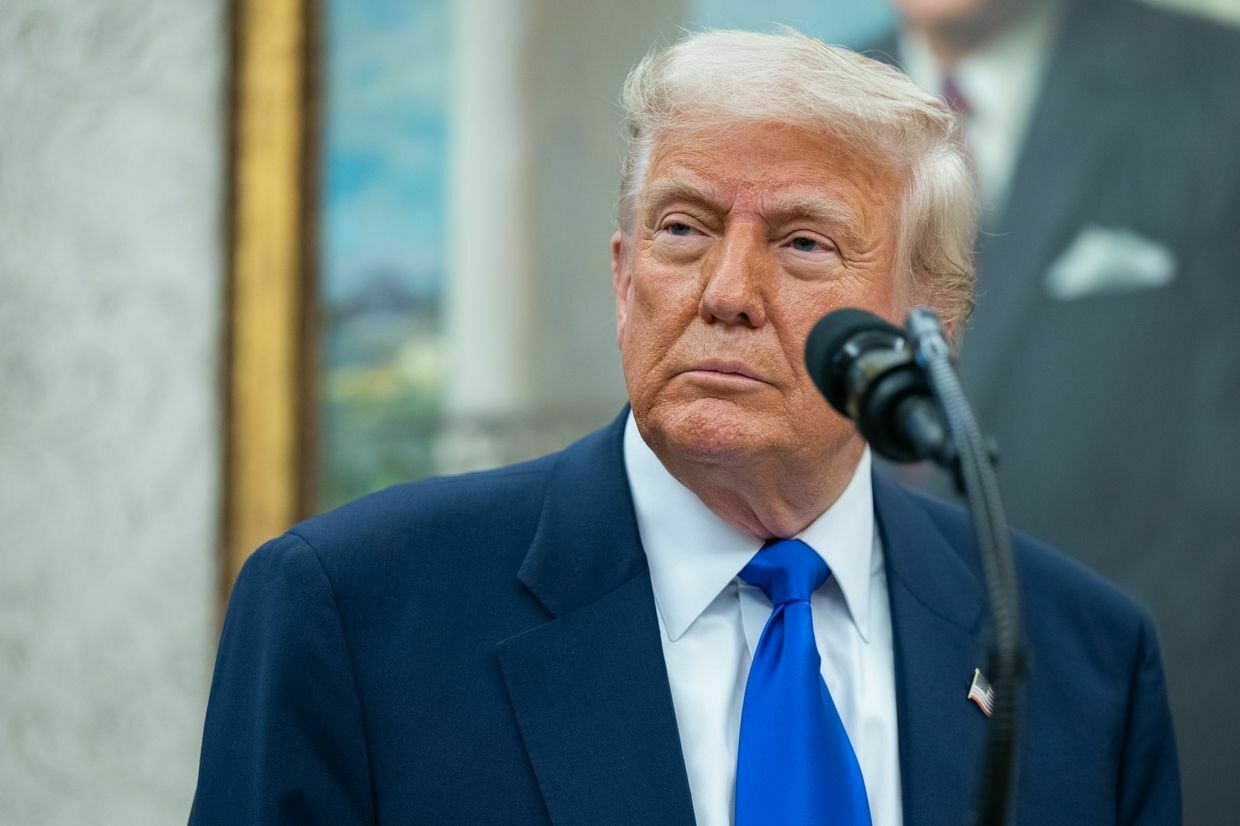
U.S. President Donald Trump said on June 24 that his Russian counterpart Vladimir Putin had called him and offered to help resolve the conflict between Iran and Israel, Fox News reported.
“As you know, Vladimir called me up. He said, can I help you with Iran? I said, ‘no, I don’t need help with Iran. I need help with you.’ And I hope we’re going to be getting a deal done with Russia, which is a shame. Six thousand soldiers died last week,” Trump told journalists while heading to a NATO summit.
Trump’s remarks come as The Hague hosts the NATO summit on June 24-25, at which the American leader is expected to meet Ukraine’s President Volodymyr Zelensky.
Trump added he would like “to see a deal with Russia,” which recently launched a new summer offensive against Ukraine, disregarding calls by Kyiv and its Western partners for an unconditional ceasefire.
The U.S. president did not provide further details on a potential deal with Russia.
Russia has deepened military and political ties with Tehran since and Iran has supplied Moscow with thousands of Shahed-type attack drones used in routine strikes on Ukrainian cities, as well as short-range ballistic missiles.
Russia and Iran have cooperated to develop their own nuclear programs as both countries face Western sanctions. Russia supplied Iran with the Middle East’s first nuclear power plant despite objections from the West.
Tensions between Iran and Israel had already been rising after Iran launched missile strikes on Tel Aviv and other Israeli cities on June 13, killing multiple civilians, including five Ukrainian nationals. The attack came in retaliation for Israeli military action.
Following several days of escalating conflict, Trump announced a ceasefire between Israel and Iran, but it was violated within hours of the American president’s statement.
‘Dead and wounded everywhere’ — at least 160 casualties as Russia strikes Dnipro with ballistic missiles, hits civilian trainRussia launched a deadly missile attack on the Ukrainian city of Dnipro on June 24, striking civilian infrastructure and a passenger train, local officials reported.The Kyiv IndependentAnna Fratsyvir
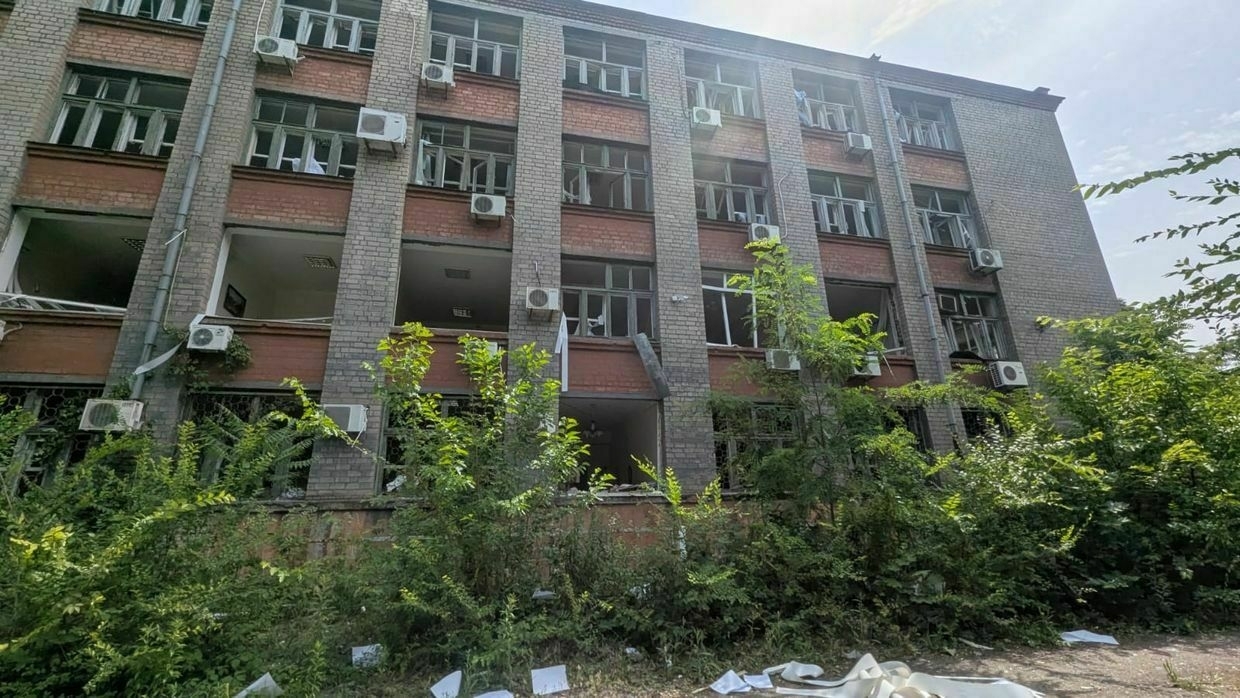
Slovakia signals support for EU's 18th sanctions package against Russia, seeks economic safeguards
Slovakia's Foreign Minister, Juraj Blanar, has expressed his readiness to support the 18th EU sanctions package against Russia. This comes following comments by his Hungarian counterpart, Peter Szijjarto, who stated that both Hungary and Slovakia are against the new round of anti-Russian measures.
On the evening of June 23, Blanar said that the Slovak government assesses each sanctions package by considering whether these restrictions could harm Slovakia's national economy. "Negotiations are still ongoing. But based on the discussions so far, it's clear that the package will not adversely impact Slovakia's economy, and we are ready to support it," Blanar stated after the EU Foreign Affairs Council meeting in Brussels. However, he added that Slovakia would require "guarantees" and support to mitigate the consequences of moving away from Russian energy sources.
"There are also arbitration risks that could affect the Slovak Republic - possibly to the tune of up to 20 billion euros. That's why we demand guarantees on how these negative consequences will be addressed," the minister explained.
Blanar emphasized that for Slovakia, it's politically important that the discussion of the sanctions package is linked to the RePowerEU proposal (the European Commission's plan to move away from Russian energy sources). Therefore, both he and Slovakia's Prime Minister Robert Fico are aiming to meet with European Commission President Ursula von der Leyen and Danish Prime Minister Mette Frederiksen, whose country will be presiding over the talks on the RePowerEU initiative.
On Monday, Hungary's Foreign Minister Szijjarto stated that Budapest and Slovakia opposed the new package of anti-Russian sanctions due to concerns about energy security. Nevertheless, according to media reports, "there is still hope" that the objections of both countries "can be resolved."
Slovakia has never blocked sanctions against Russia, notwithstanding several threats to do so. Analysts indicate that despite often combative rhetoric from Slovak officials, the country "does not have a track record of defiance" in practice. Hungary, on the other hand, frequently opposes EU initiatives to support Ukraine and impose restrictions on Russia. Both countries still rely on Russian energy sources and maintain ties with Russia.
Von der Leyen officially unveiled the 18th package of sanctions against Russia on June 10. This package proposes banning transactions with the Nord Stream pipelines and extending the list of sanctioned banks.
Kyiv under attack - Ukrainian army advances
Ukraine can produce 8 million drones annually but needs funding, Zelensky says at NATO summit
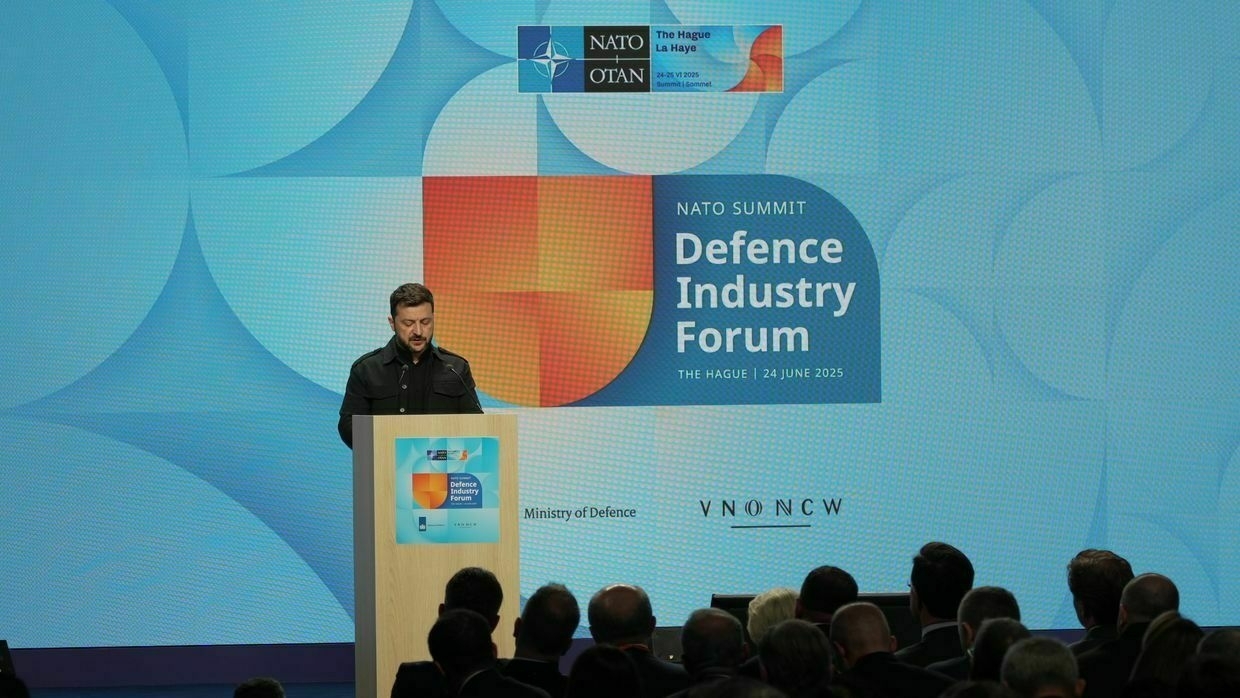
President Volodymyr Zelensky said during NATO summit on June 24 that Ukraine has the capacity to produce over 8 million drones of various types each year, but lacks the financial backing to reach that potential, a shortfall he said must be urgently addressed to defeat Russia’s growing military network.
“Our defense production potential has surpassed $35 billion,” Zelensky said during a speech at the NATO Defense Industry Forum in The Hague. “This includes nearly 1,000 types of products… but around 40% of this potential lacks proper funding. For example, we can produce over 8 million drones of different types each year, but the financing allows for far fewer."
Zelensky urged allies to scale up investments in joint weapons production, including drone technologies, artillery, and interceptors. He argued that Ukraine’s defense capabilities are not only key to defending its own territory, but essential to strengthening NATO’s long-term security.
“We must lead in the drone race, both in strike drones and interceptors,” he said. “Please increase your investments in Ukraine and joint weapons production. All the weapons we produce become part of a new, stronger European defense and security system."
Why can’t the West match Russia’s ammunition production?Editor’s Note: This article has been updated to reflect new details of BAE Systems’ new chemical process that the company confirmed to the Kyiv Independent after initial publication. The West is failing to catch up to Russia’s production of the most basic unit of war for the past half-millennium — gunpowder.The Kyiv IndependentKollen Post
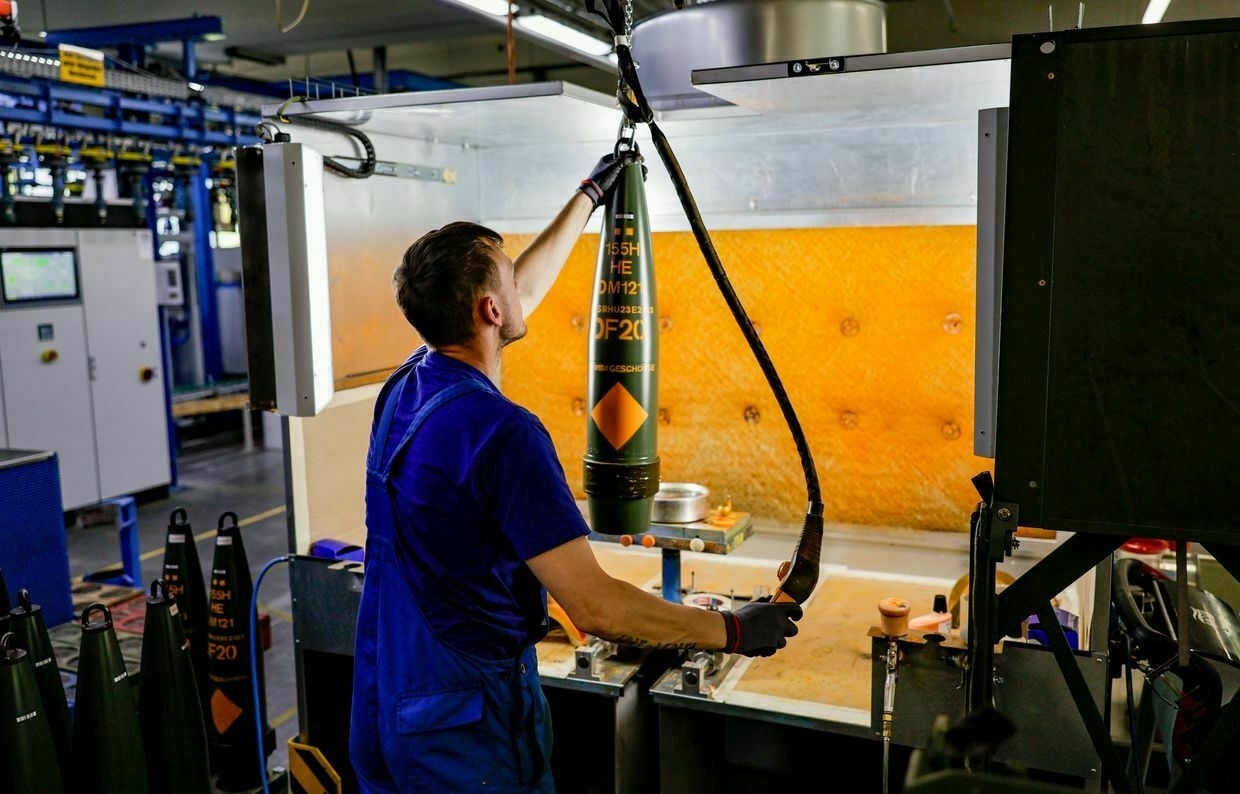
The Ukrainian president emphasized that Russia is not acting alone, but as part of a broader network of state and non-state actors, including North Korea, Iran, and Chinese companies, which support its war effort against Ukraine and pose a long-term threat to Europe.
“The source of this war and the long-term threat to Europe is Russia,” Zelensky said. “But in reality, we are not just facing Russia alone. We are facing a network of state and non-state actors."
Zelensky also called on NATO members to increase defense spending to 5% of GDP and to dedicate at least 0.25% of GDP to support Ukraine’s military needs directly. He thanked countries such as Germany, Norway, Sweden, and the Netherlands for their elevated commitments, but urged others to follow suit.
Zelensky warned that Russia is planning “new military operations on NATO territory” and that the war in Ukraine must be stopped now to prevent broader European conflict.
“There are no signs that Putin wants to stop this war,” Zelensky said. “So long as he kills, he lives. And our intelligence confirms this."
He also appealed for a crackdown on the supply chains that allow Russia to sustain its weapons manufacturing, referring to Western-origin components found in Russian missiles, drones, and armored vehicles.
“It’s not just China, also Taiwan. Some of these parts come from European countries and from the United States,” Zelensky said. “Every single tool delivered to Russia’s defense sector helps prolong the war and is a crime against peace."
Zelensky’s speech comes as NATO leaders gather in The Hague for a high-level summit on June 24-25. NATO leaders are expected to discuss raising the alliance’s defensespending target to 5% of the GDP, a proposal the U.S. has championed but from which it considers itself exempt.
Zelensky is expected to meet U.S. President Donald Trump during the summit.
Zelensky plans to meet Trump at NATO summit in The HagueUpon arrival in The Hague on June 24, Andriy Yermak, head of Ukraine’s presidential office, said he held a “substantive” discussion with U.S. Secretary of State Marco Rubio about the upcoming Zelensky-Trump meeting.The Kyiv IndependentAnna Fratsyvir
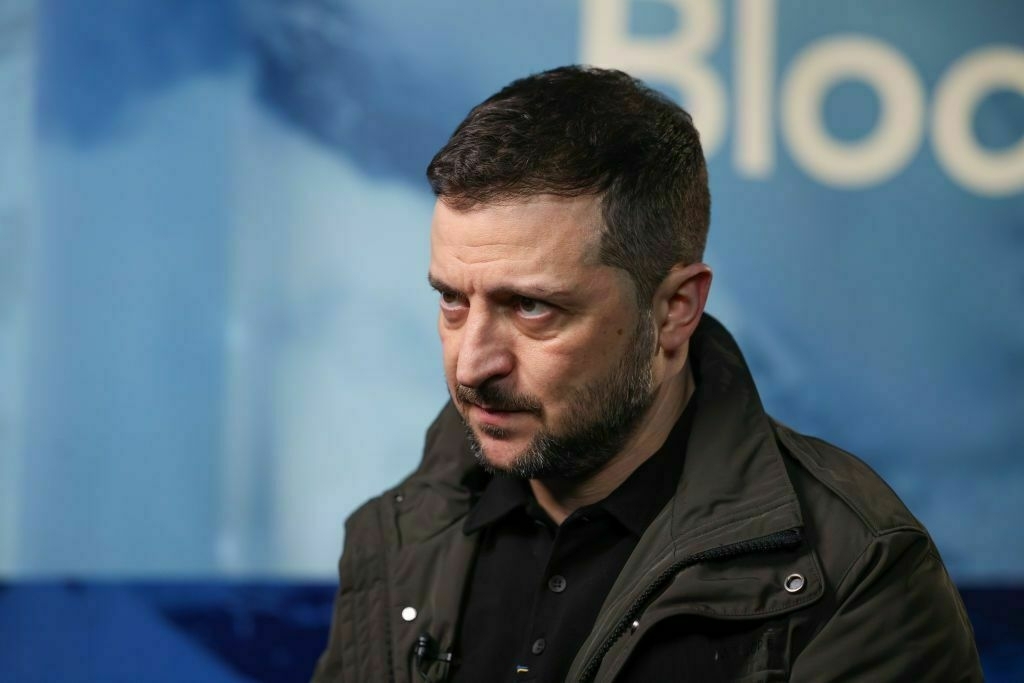
Important decisions on Ukraine are coming up – Rutte at the NATO summit #shorts
Iran strikes show peace can be achieved through strength, US Ambassador to NATO says
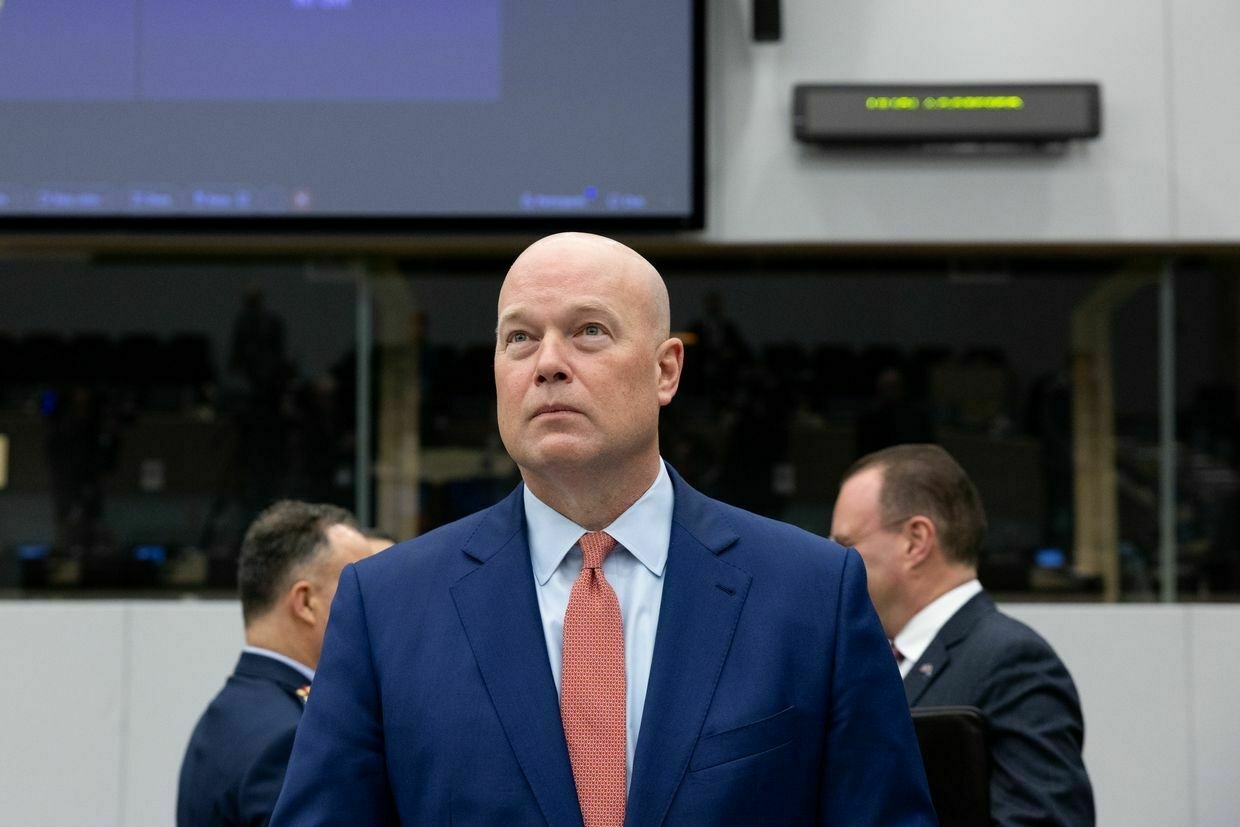
U.S. airstrikes on Iranian nuclear facilities demonstrated how precision military action can achieve rapid peace, U.S. Ambassador to NATO Matthew Whitaker said on June 24, speaking at the NATO Public Forum held alongside the alliance summit in The Hague.
"(The U.S. attack on Iran’s nuclear facilities) shows kind of how you get that peace through that strength, and that strength is amplified and enhanced by this alliance (NATO)," Whitaker said, referring to the June 21 American strikes on Iran’s Fordow, Natanz and Esfahan nuclear sites, which U.S. President Donald Trump called a “spectacular success."
Whitaker emphasized that the U.S. remains a reliable ally and a cornerstone of NATO’s deterrence. “The U.S. isn’t going anywhere,” he said. “The U.S. has certain capabilities that you want an alliance to have."
He added that recent U.S. military operations underscore the importance of defense investments by all member states. “If all of (NATO) countries elevate investments in their defense, I think we will have peace for generations,” Whitaker said.
The U.S. strikes on Iran came amid escalating tensions between Israel and Tehran. Trump said the strikes were intended to push Iran toward negotiations, warning that the alternative would be “tragedy for Iran far greater than we have witnessed."
Trump claimed that a ceasefire between Iran and Israel was achieved on June 24. Just hours later, Israel accused Tehran of launching missiles toward its territory — an allegation Iran denied.
Whitaker said the White House hopes the U.S. will also bring to an end Russia’s war in Ukraine. He added that there is “no purely military solution” to the war in Ukraine.
Unlike past U.S. administrations, Trump has not introduced new sanctions against Russia despite increasing Russian missile and drone attacks on civilians.
On June 24, the first day of the NATO summit, Russia launched a ballistic missile strike on the Ukrainian city of Dnipro, killing at least three people and injuring more than 20, including two children, according to regional officials.
Kyiv has long been advocating for “peace through strength” policy, calling for stronger sanctions against Russia and increased military aid to Ukraine.
‘Let’s not be naive’ — Rutte urges NATO to face Russia, China threats, pledges support for UkraineNATO Secretary General Mark Rutte said NATO’s role is to ensure Ukraine has the military means to stay in the fight until “serious” peace negotiations begin.The Kyiv IndependentAnna Fratsyvir
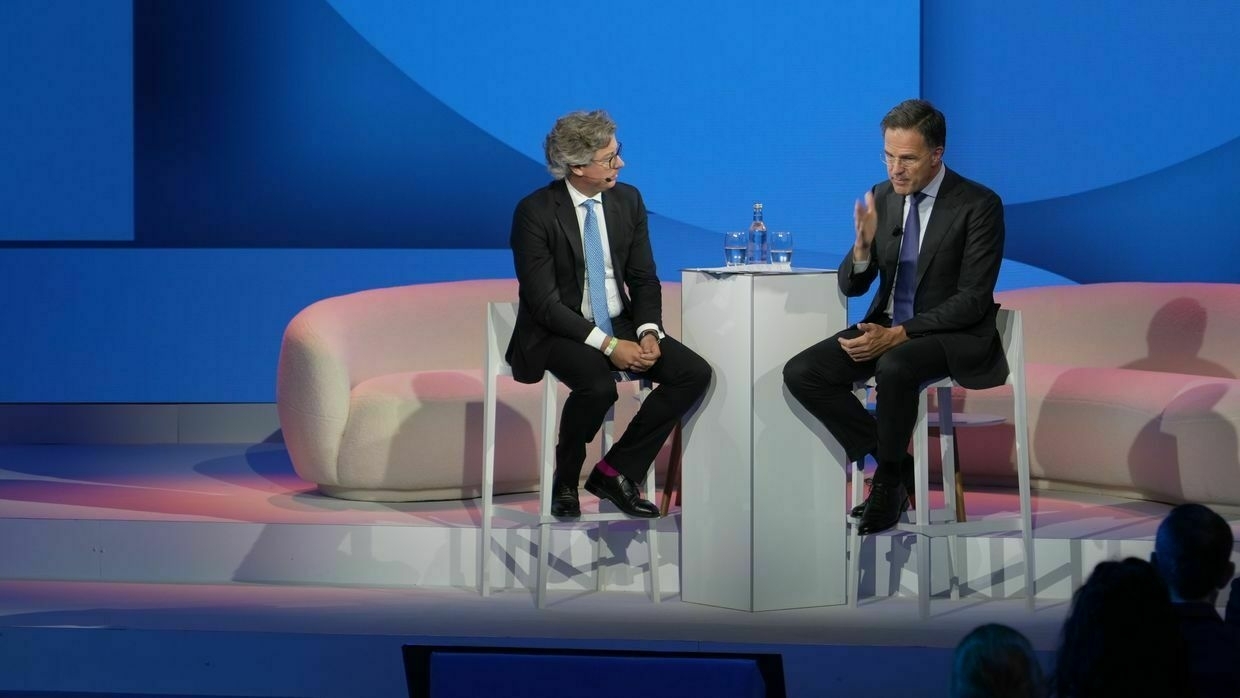
Foreigners move closer to Ukrainian citizenship with new draft law, but red tape clouds their path
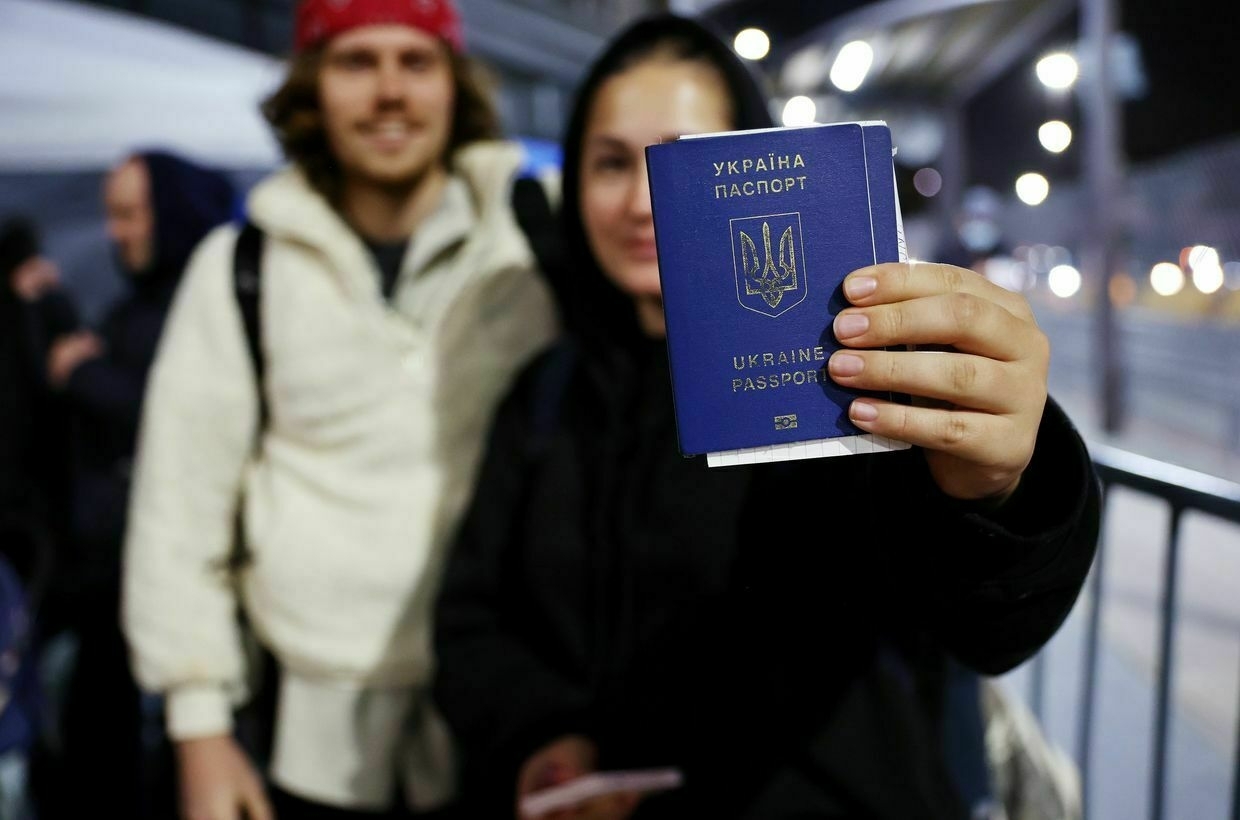
For years, foreigners seeking a Ukrainian passport faced a tough choice: renounce their original citizenship or give up on becoming Ukrainian. Now, that barrier will likely be removed, as Ukraine prepares to allow dual citizenship for the first time.
Since taking office in 2019, President Volodymyr Zelensky has declared his intention to allow dual citizenship in Ukraine.
“To all who are ready to build a new, strong and successful Ukraine, I will gladly grant Ukrainian citizenship,” he said in his inaugural address in 2019.Five years later, in January 2024, Zelensky finally introduced a bill that would allow dual citizenship “for all who wish to feel that being in Ukraine means being home.”
The process moved forward on June 18, when the Verkhovna Rada, Ukraine’s parliament, voted to lift the longstanding ban on holding multiple citizenships, signaling a historic shift in Ukraine’s approach to nationhood.
Many foreigners living in Ukraine have welcomed the news bringing them one step closer to becoming Ukrainian citizens.
“For some, being Ukrainian is a birthright. For others, it is a choice,” Paul Niland, an Irish businessman who has called Ukraine home for over two decades, told the Kyiv Independent.
“To be officially recognized as Ukrainian would be a source of great pride.”
Yet, for some foreigners — including those with ancestral claims and International Legion veterans who fought alongside Ukrainians against Russia — the path to citizenship is obstructed by a number of bureaucratic hurdles, casting painful doubt on how swiftly their dreams can come true.
‘A state of mind’What began as a planned six-month stay turned into more than two decades for Irish-born businessman Niland, who came to Ukraine 23 years ago to originally visit some friends — and never looked back.
During his time in Ukraine, Niland has witnessed and taken part in the country’s defining democratic political upheavals — the Orange Revolution to the Revolution of Dignity (EuroMaidan Revolution) — while also carving out a role in the country’s evolving civil society. He has become invested in doing his part to help the country grow, he says.
“Freedom, independence, building a better country for our children — if we share these goals and values, becoming Ukrainian is first and foremost a state of mind.”
Niland founded Lifeline Ukraine in 2019 as a crisis hotline dedicated to supporting war veterans grappling with emotional and psychological distress. Since then, the service has expanded its mission, offering critical mental health support to anyone in Ukraine in need.
For Niland, the prospect of a dual citizenship law “is a very important way of acknowledging the dedication that some people, despite not being born here, have to the country.”
“This great nation has gone through struggles that I have been a part of and so this kind of acceptance of others is a recognition of our common values, the values that (the Euro)Maidan was about and what we have fought for ever since,” he said.
“Freedom, independence, building a better country for our children — if we share these goals and values, becoming Ukrainian is first and foremost a state of mind.”
Despite Ukrainian not being his native language, Niland’s “generally not concerned” about the compulsory tests in the Ukrainian language, history, and constitution. He says he started speaking Ukrainian in his day-to-day life a few years ago, and he’s ready to study the constitution and history in detail — it’s just a necessary formality in taking another step to deepening his ties with the country he has long regarded as home.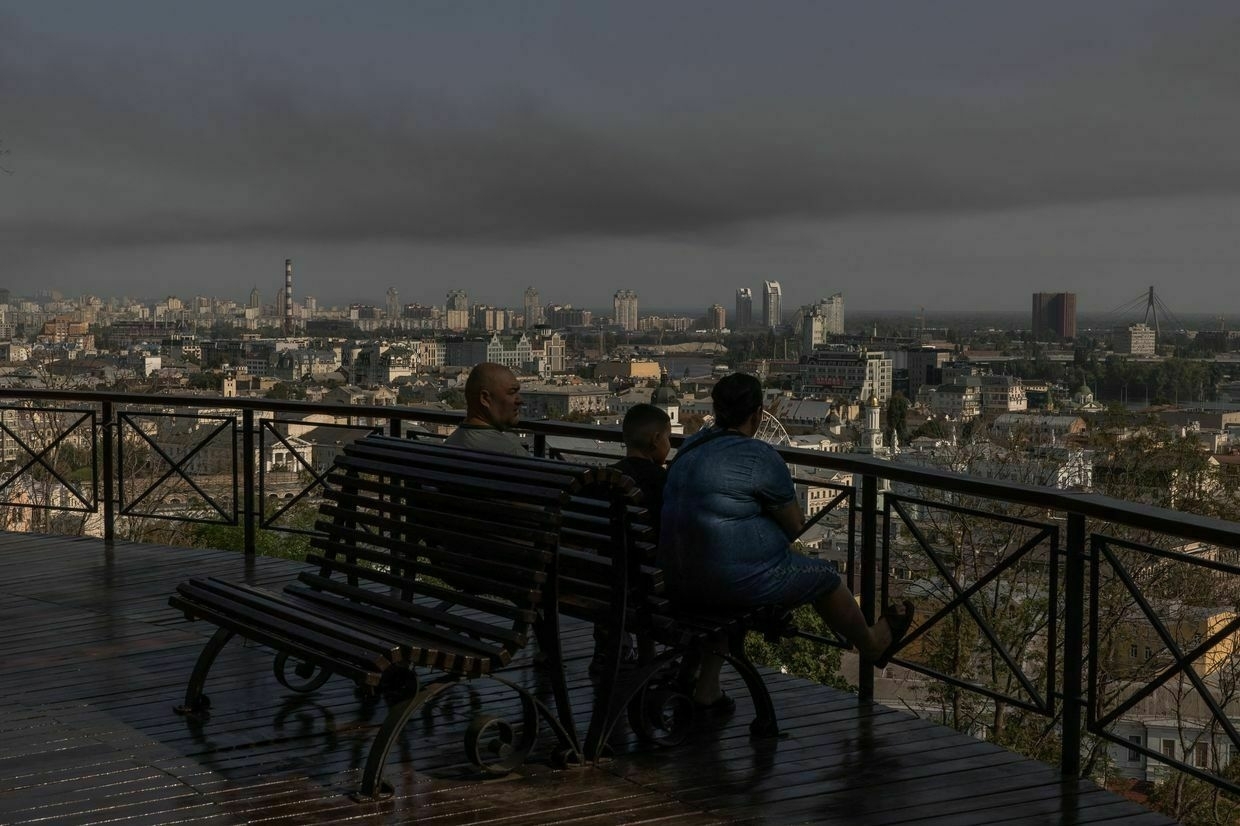
A man, a woman and a child look on as smoke rises over buildings in Kyiv, Ukraine, on Aug. 26, 2024. (Roman Pilipey / AFP via Getty Images) Why ancestry citizenship isn’t always easyPart of the proposed legislation aims to encourage members of the Ukrainian diaspora to pursue citizenship and strengthen their ties to the country. However, the process remains difficult for some of those who originally come from the Ukrainian diaspora and who have already been trying for years to get citizenship.
Journalist Larisa Kalik moved to Ukraine in 2020 after a criminal case was opened against her in her native Transnistria, a part of Moldova under Russian-occupation, for reporting on the systemic abuses of conscripts in the military.
She chose to relocate to Ukraine because it brought her “both safety and a deep sense of belonging.” Kalik’s grandfather was also born in Lviv Oblast, and so she wanted to pursue her claim to ancestral citizenship over applying for refugee status.“On paper, applying for citizenship through ancestry seems straightforward. In reality, it’s much harder,” she told the Kyiv Independent.
“I have my grandfather’s birth certificate, but his record isn’t in the digital registry. When I reached out to the archives, responses were delayed, and eventually I was told there’s no official record there, either.”
To move her case forward, Kalik would likely have to go to court to try and officially prove that her grandfather was born and raised in Ukraine — a step that could lead to a new birth certificate being issued.“It’s in Ukraine’s interest to open the door to those who’ve come here with open hearts and good intentions.”
The prospect of further lengthy delays for basic paperwork has discouraged her from prioritizing the process, dimming her hopes of moving from her current residency status to full citizenship.
“Though I say this with full respect and understanding for how much Ukraine is already navigating due to Russia’s full-scale war,” she added.
Although Kalik cares deeply about her native Moldova, she says the bonds she has built in Ukraine run much deeper — especially while living in Kyiv and reporting from the front line through Russia’s full-scale invasion. Her Ukrainian friends have also never treated her as a foreigner, and she speaks Ukrainian as a native language.
‘I can’t sit and watch it’ – US volunteers join Ukrainian army after Trump’s sharp policy turnEditor’s note: Soldiers interviewed for this article are identified only by their first name, callsign, or nickname due to security reasons. William, a 25-year-old U.S. Army veteran, has come to Ukraine to join the Ukrainian military in its fight against Russian aggression just days after his contract withThe Kyiv IndependentAsami Terajima
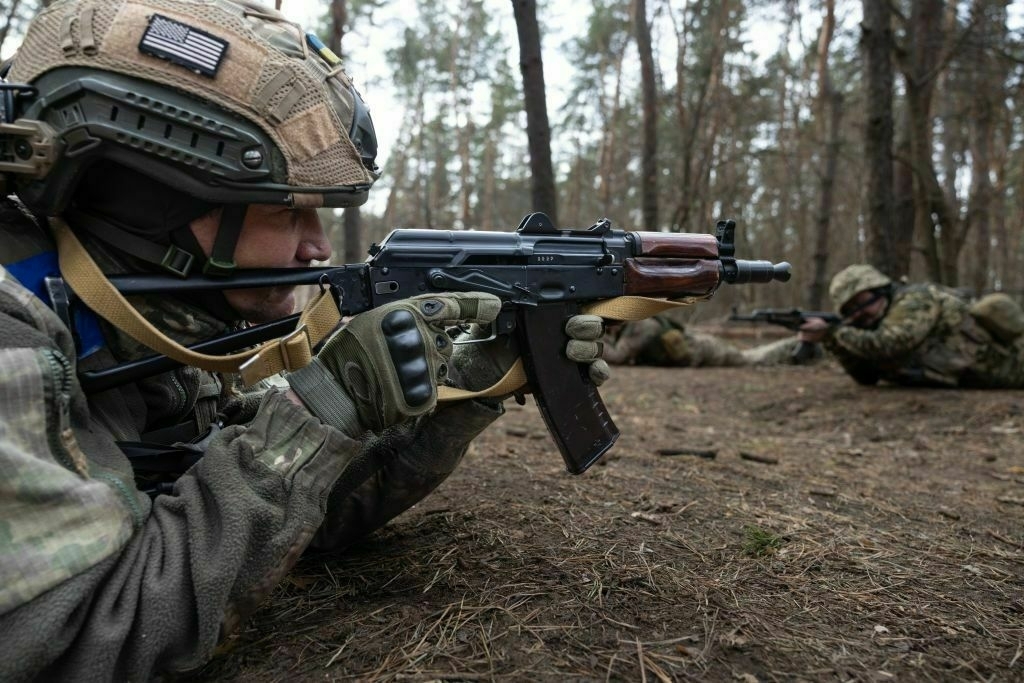
For her, obtaining a Ukrainian passport would simply formalize an identity she already fully embraces.
“I really hope Ukraine’s approach to citizenship for foreigners becomes more dynamic and responsive — especially for those of us who’ve chosen to stay, contribute, and become part of this country,” she said.
“It’s in Ukraine’s interest to open the door to those who’ve come here with open hearts and good intentions.”
Foreign fighters’ struggles after battlefieldWhen Russia launched its full-scale war against Ukraine, Anthony — whose name has been changed due to security concerns — took up arms in a branch of the International Legion to defend the country. He considers Ukraine his home more than the Western country where he was born and couldn’t just sit around when so many innocent people were being killed.
But now, his future in Ukraine is uncertain due to a series of bureaucratic hurdles — despite risking his life to defend the country.
"(Obtaining Ukrainian citizenship) is a real recognition of the sacrifices and risks people like I have undertaken when we answered the call to defend the country."
Foreign recruits must serve a minimum of three years in the International Legion to qualify for permanent residency, which is an important step toward applying for citizenship. Anthony, however, left the International Legion after two and a half years, due to internal problems within the organization that put people’s lives at what he said was unnecessary additional risk and made remaining near impossible.
A 2022 investigation by the Kyiv Independent into one branch of Ukraine’s Foreign Legion revealed that leadership was involved in a number of alleged scandals, including abuse, theft, and sending soldiers unprepared on reckless missions.Despite the challenges he faced in the International Legion, his love for Ukraine — where he spent significant time before the full-scale invasion — remains strong. It’s hard to imagine a future anywhere else, he says.
“After living here, fighting for Ukraine, risking my life for it and its people, I feel part of this country. Even when I go back to (my home country in the West), it doesn’t feel like home anymore,” he told the Kyiv Independent.
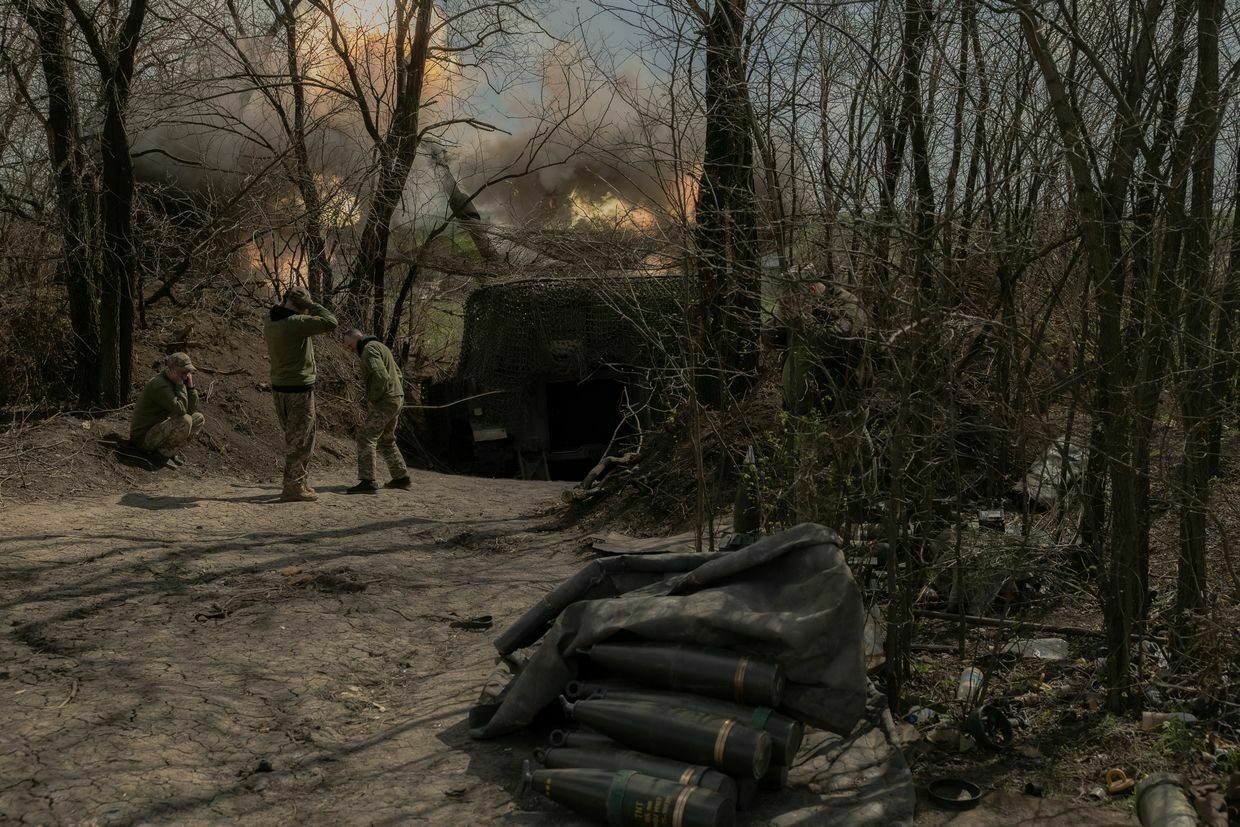
Ukrainian servicemen of the Skala regiment artillery unit fire an M109 howitzer toward Russian positions in Donetsk Oblast, Ukraine, on April 23, 2025. (Roman Pilipey / AFP via Getty Images) “(Obtaining Ukrainian citizenship) is a real recognition of the sacrifices and risks people like I have undertaken when we answered the call to defend the country. I lost a lot of friends that will never have this chance. I may not be Ukrainian by ethnicity or birth, but I feel Ukrainian in my fight against Russia, and the possibility of receiving Ukrainian citizenship is a recognition of that.”
Once an International Legion contract ends, former soldiers have three months to formally resign or depart. After multiple deployments — some of which Anthony believed he might not survive — he now finds himself adrift, uncertain about his next steps.
In legal terms, his status is now equivalent to that of a tourist, subject to the 180-day visa-free stay permitted in Ukraine. While he could seek a temporary residence permit, he says doing so almost feels like a forced attempt to extract some recognition for his military service.
“I killed the enemy in combat, risked my life many times. I did my job silently and not for attention. But I’m basically nothing in the eyes of the state right now.”
Note from the author:
Hi there, it's Kate Tsurkan, thank you for reading my latest piece. As a foreigner living in Ukraine for many years, I couldn't be more excited by the prospect of becoming a Ukrainian citizen. Yet, I know there's a lot of bureaucratic red tape that could make the dreams of foreigners like myself to become Ukrainian citizens difficult to realize. That being said, I'm confident Ukraine will overcome these issues. If you like reading this sort of thing, please consider supporting us and becoming a member of the Kyiv Independent today.
‘Russians need to be taught a lesson’ – why foreign soldiers keep fighting for Ukraine amid growing uncertaintyEditor’s Note: This article contains graphic descriptions. Soldiers interviewed for this article are identified by their callsigns only due to security reasons. When Russia launched its full-scale invasion in 2022, shocking the world, thousands of foreigners flocked to defend Ukraine – many with little to no connection with the country. MoreThe Kyiv IndependentDaria Shulzhenko
